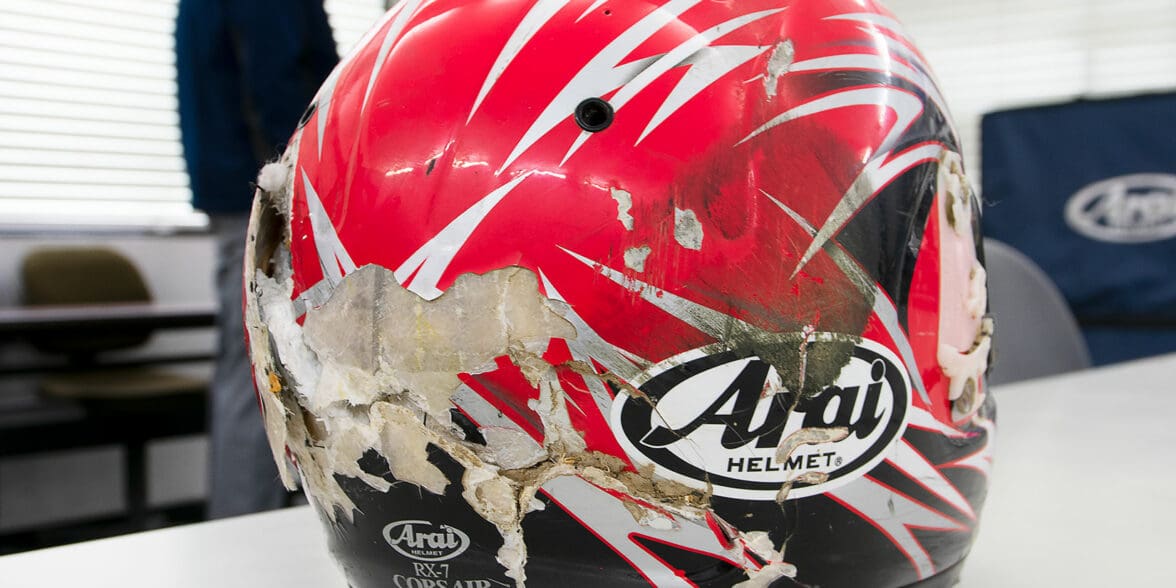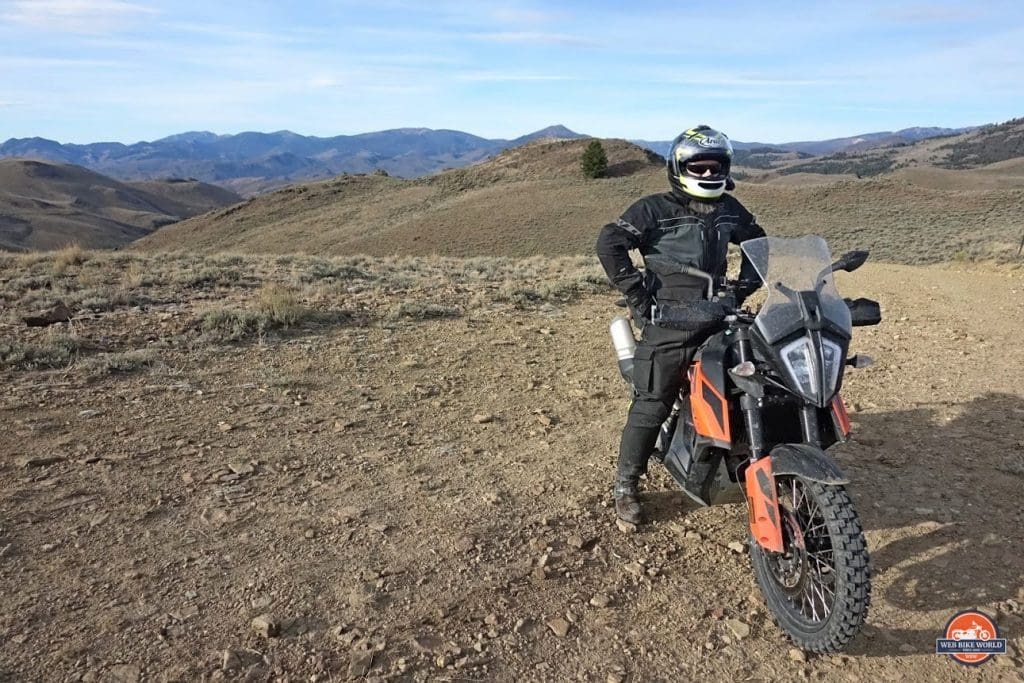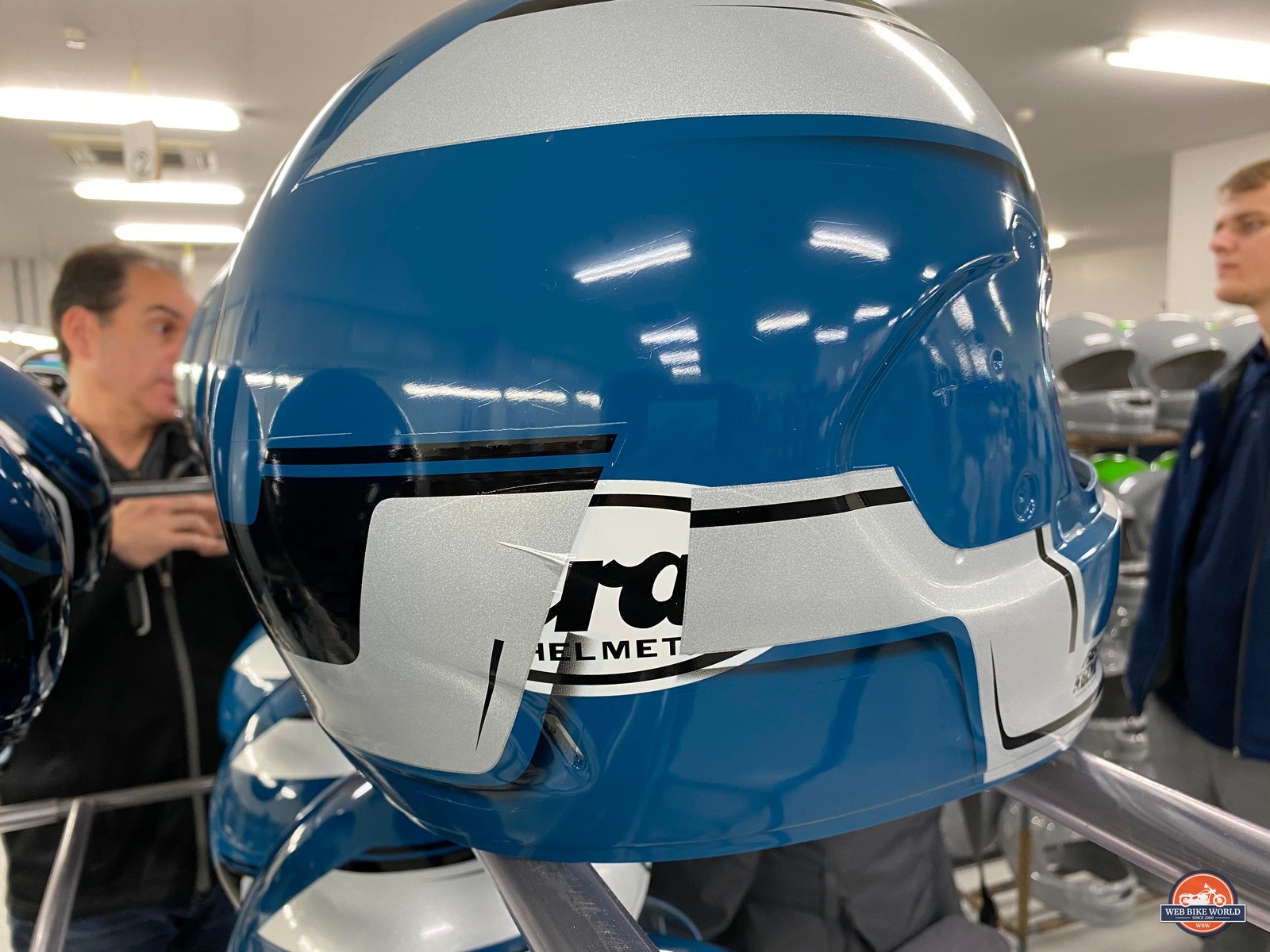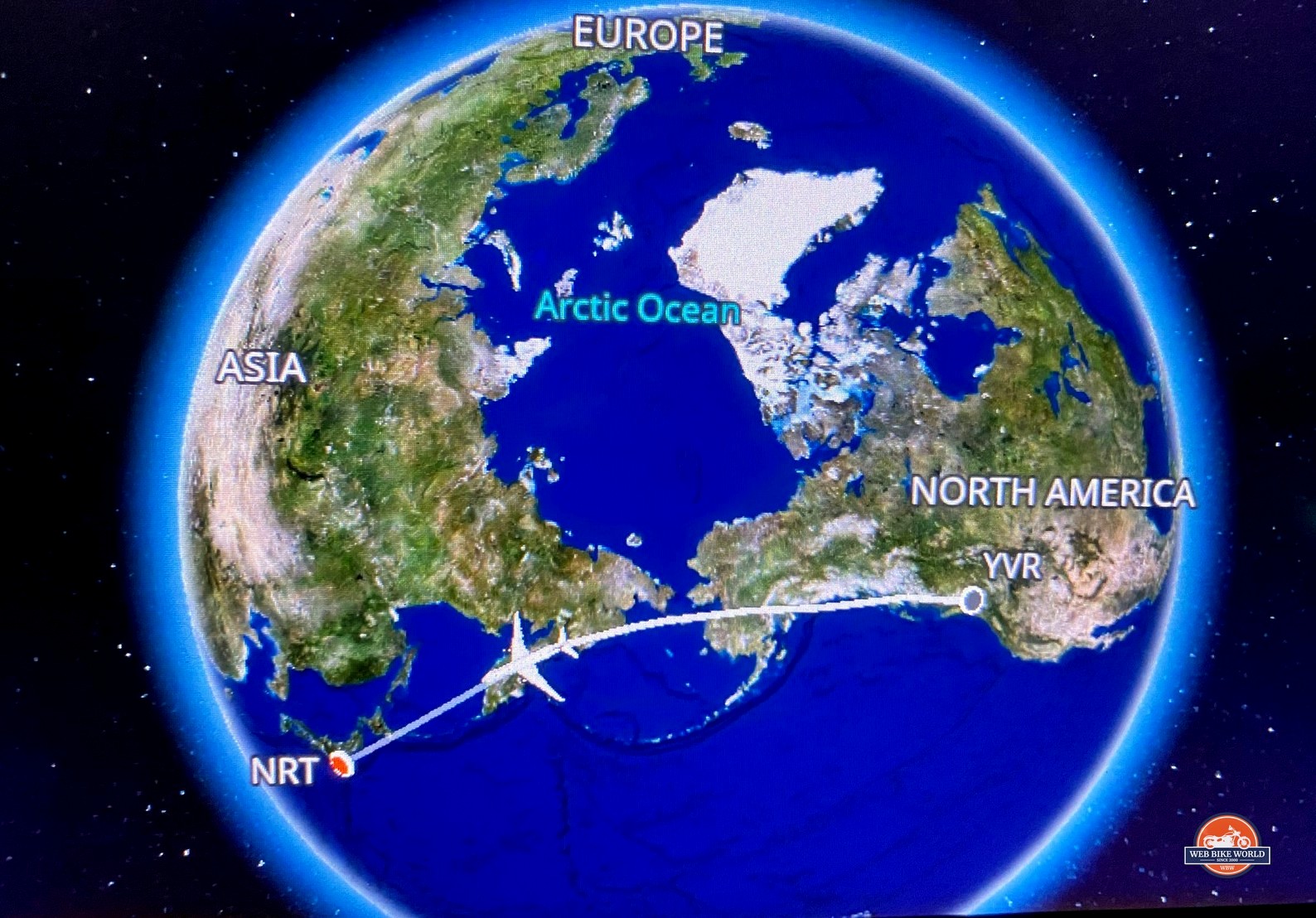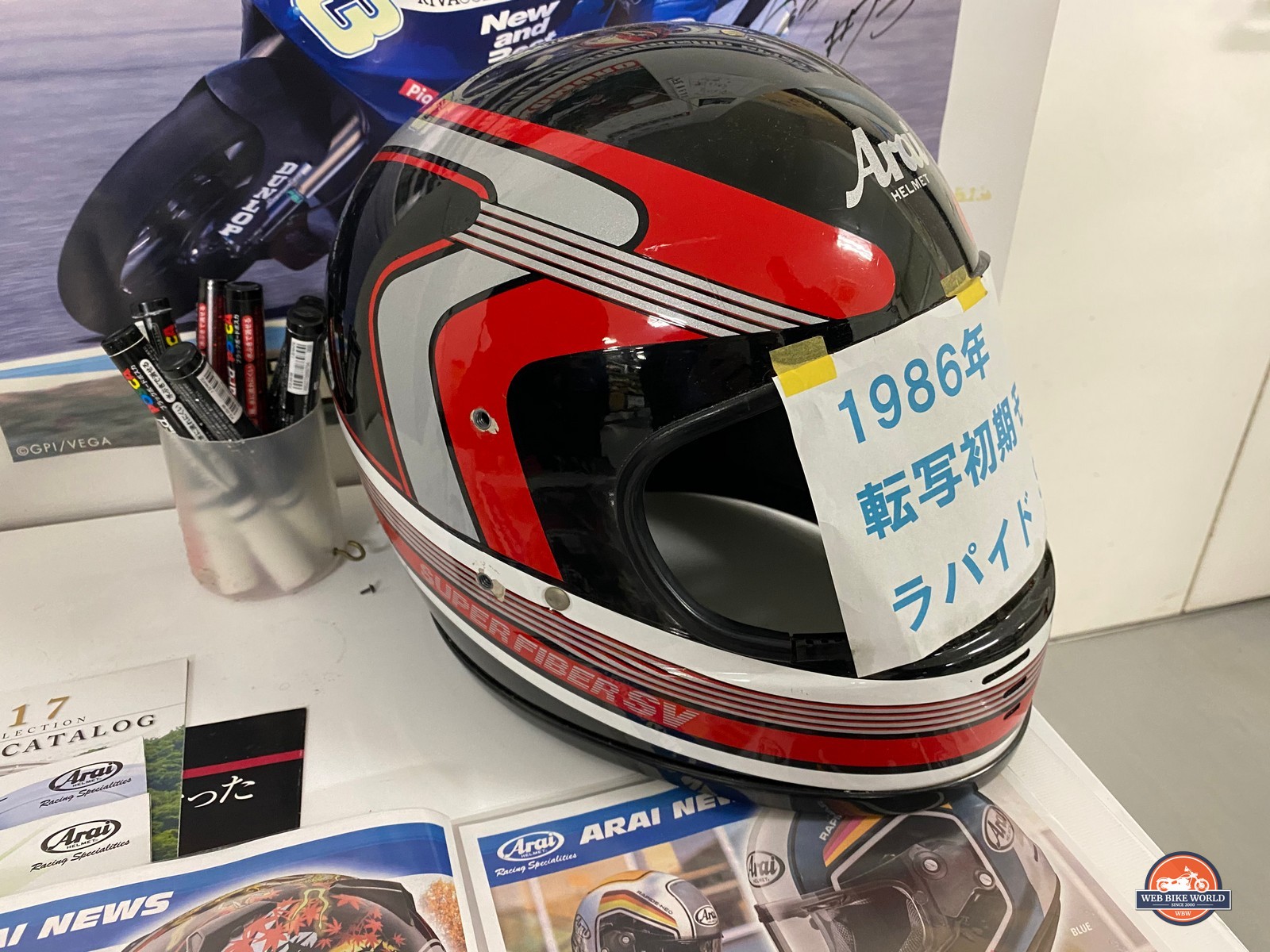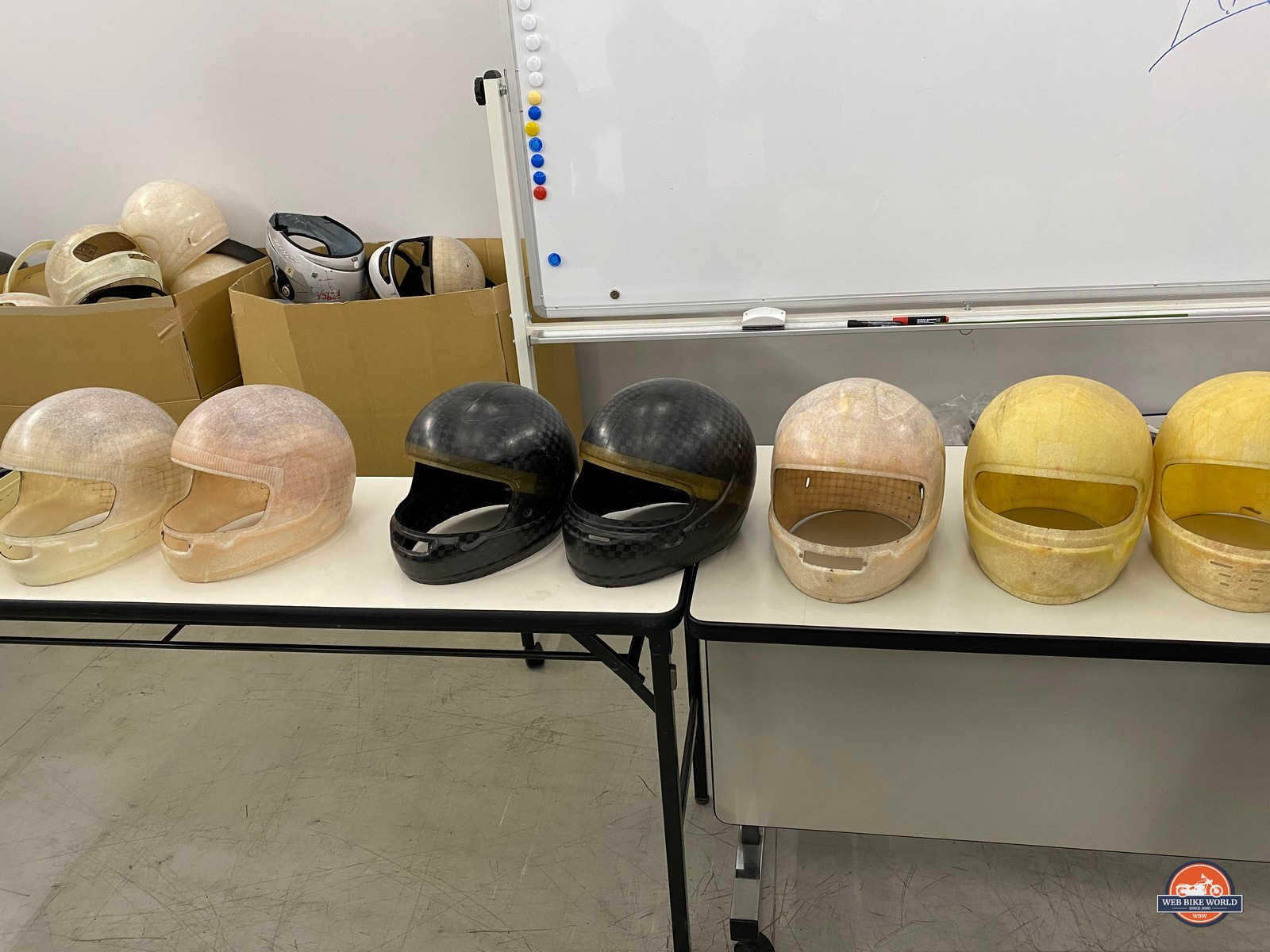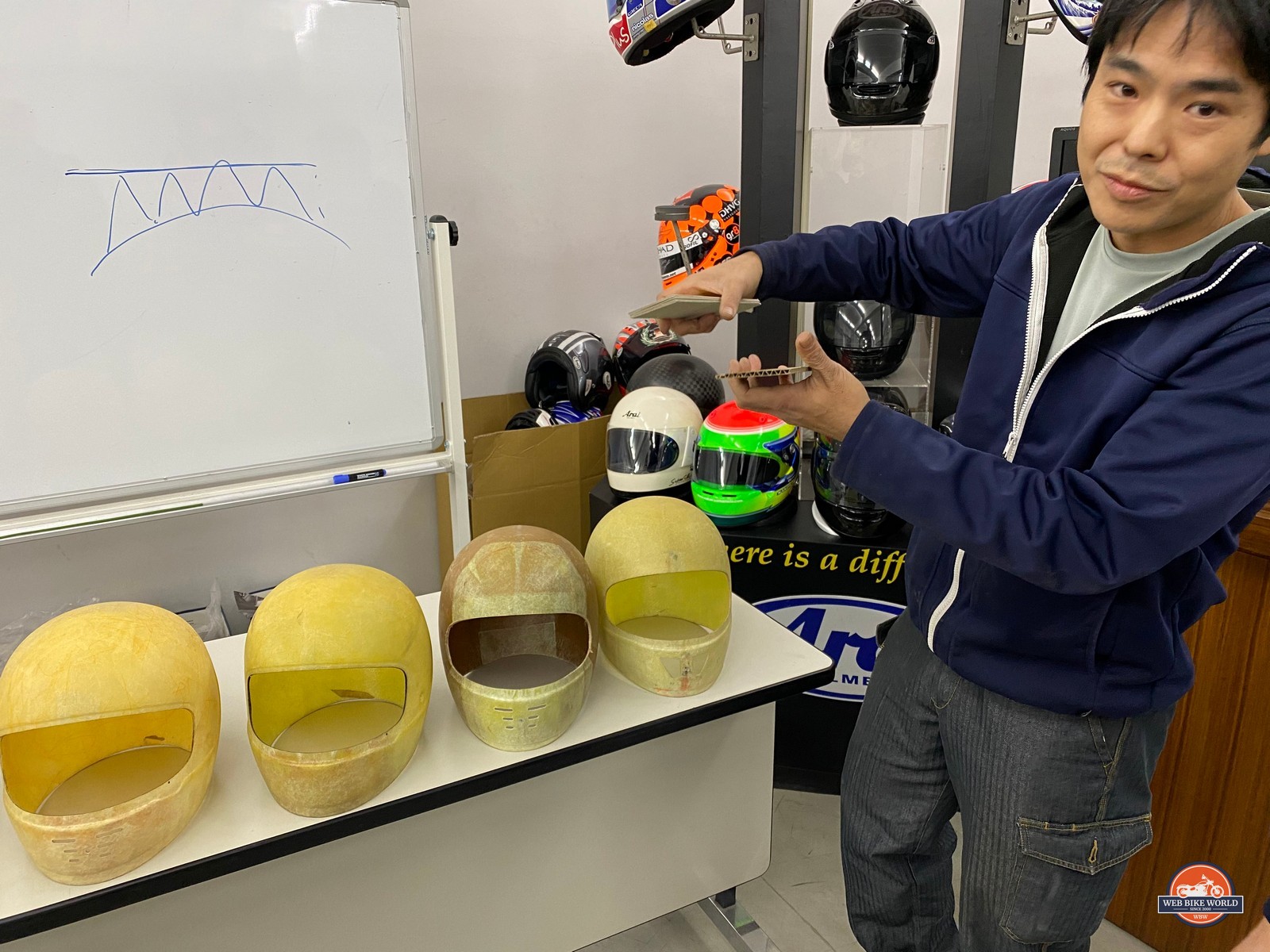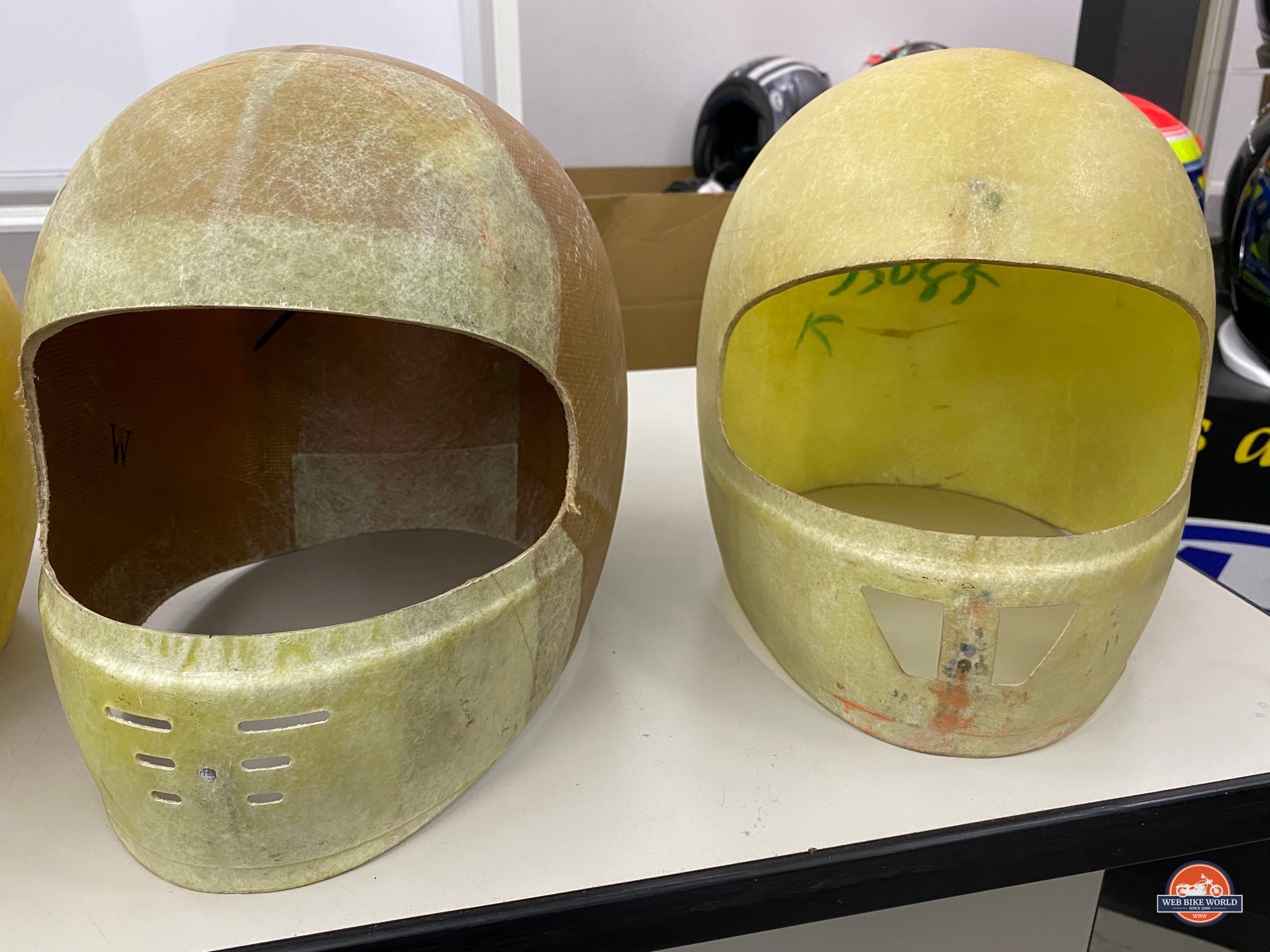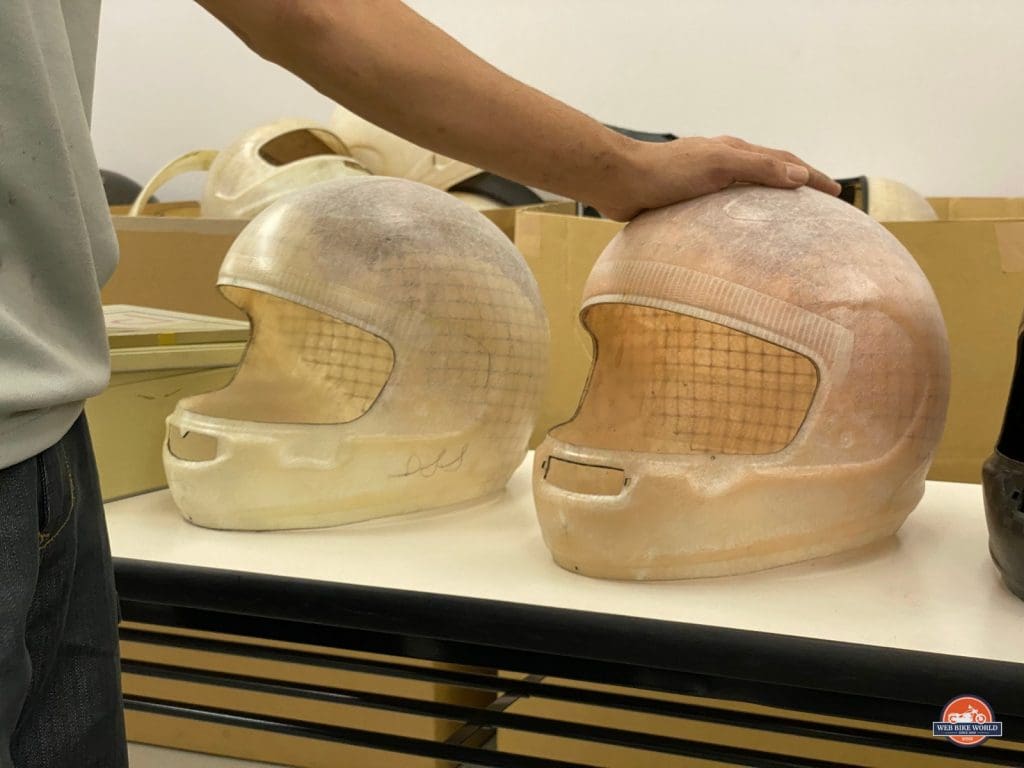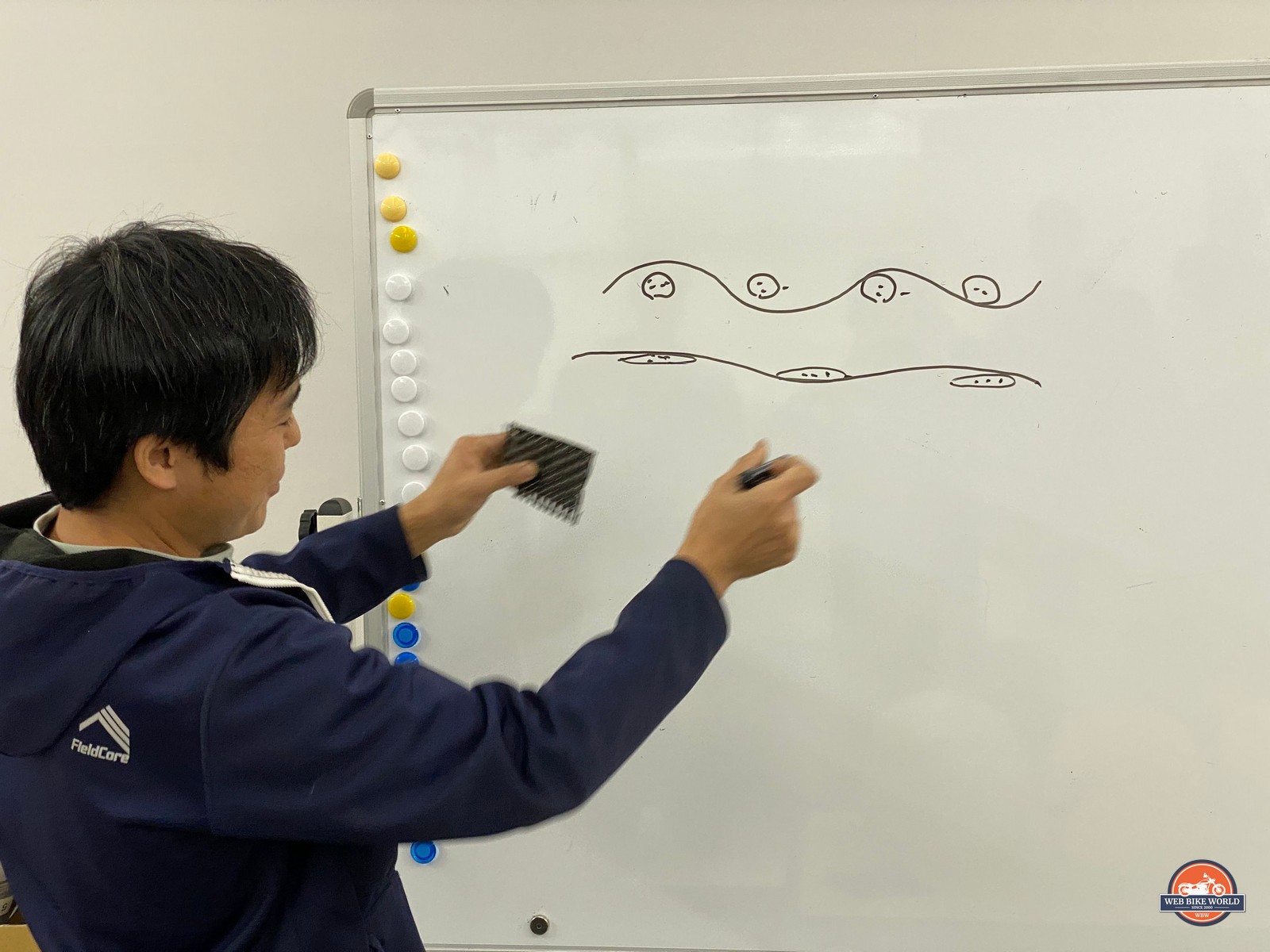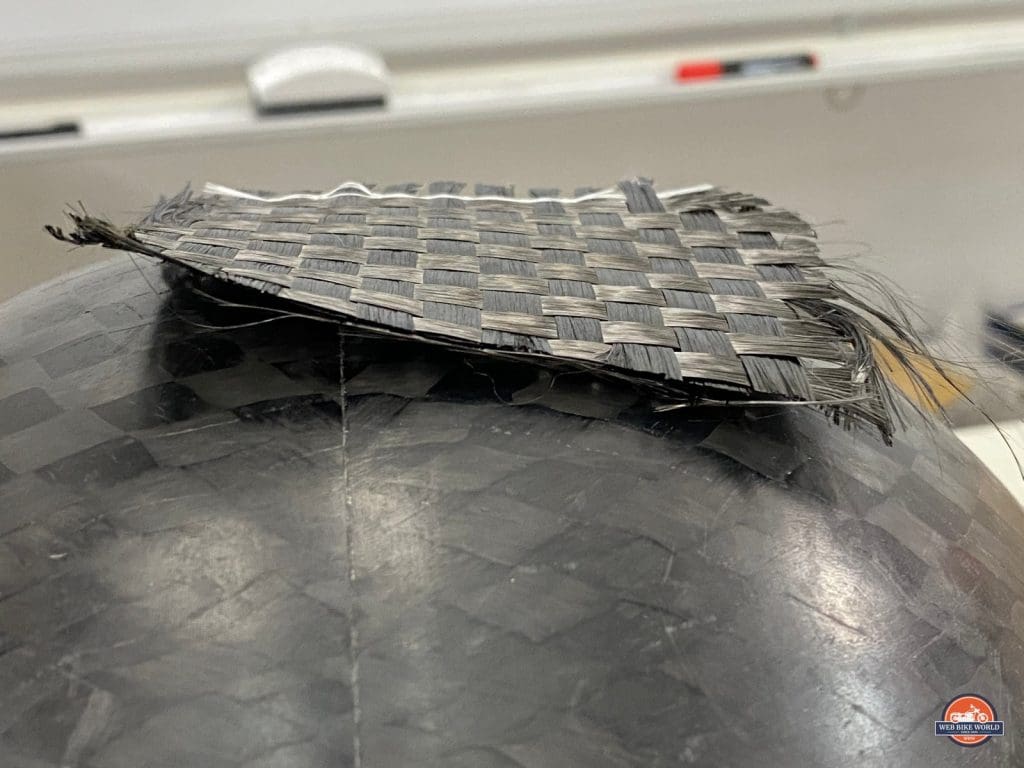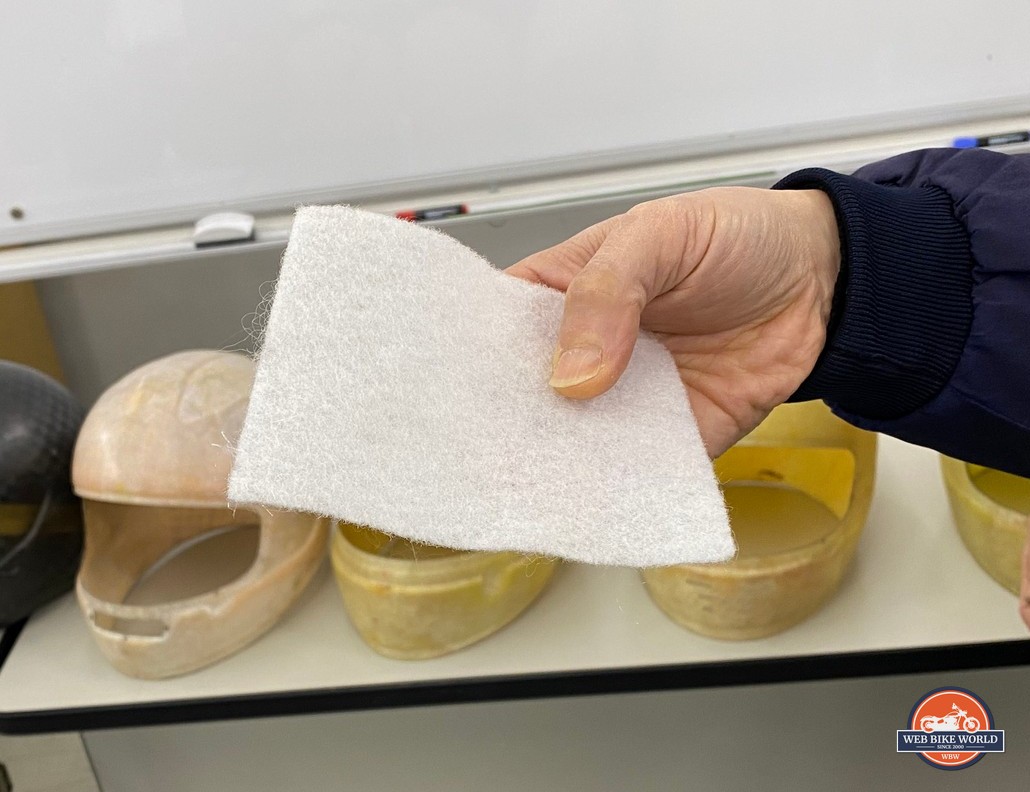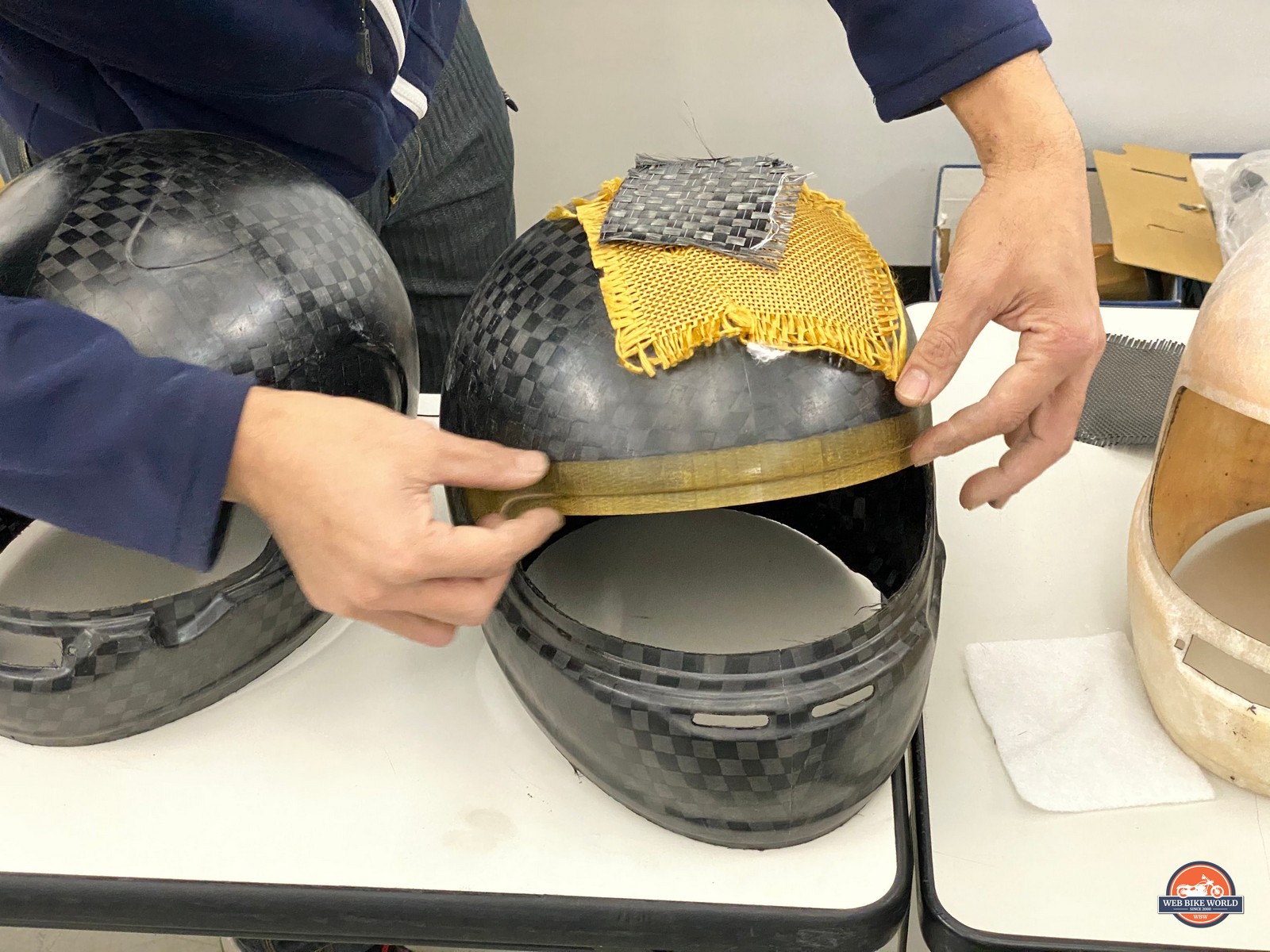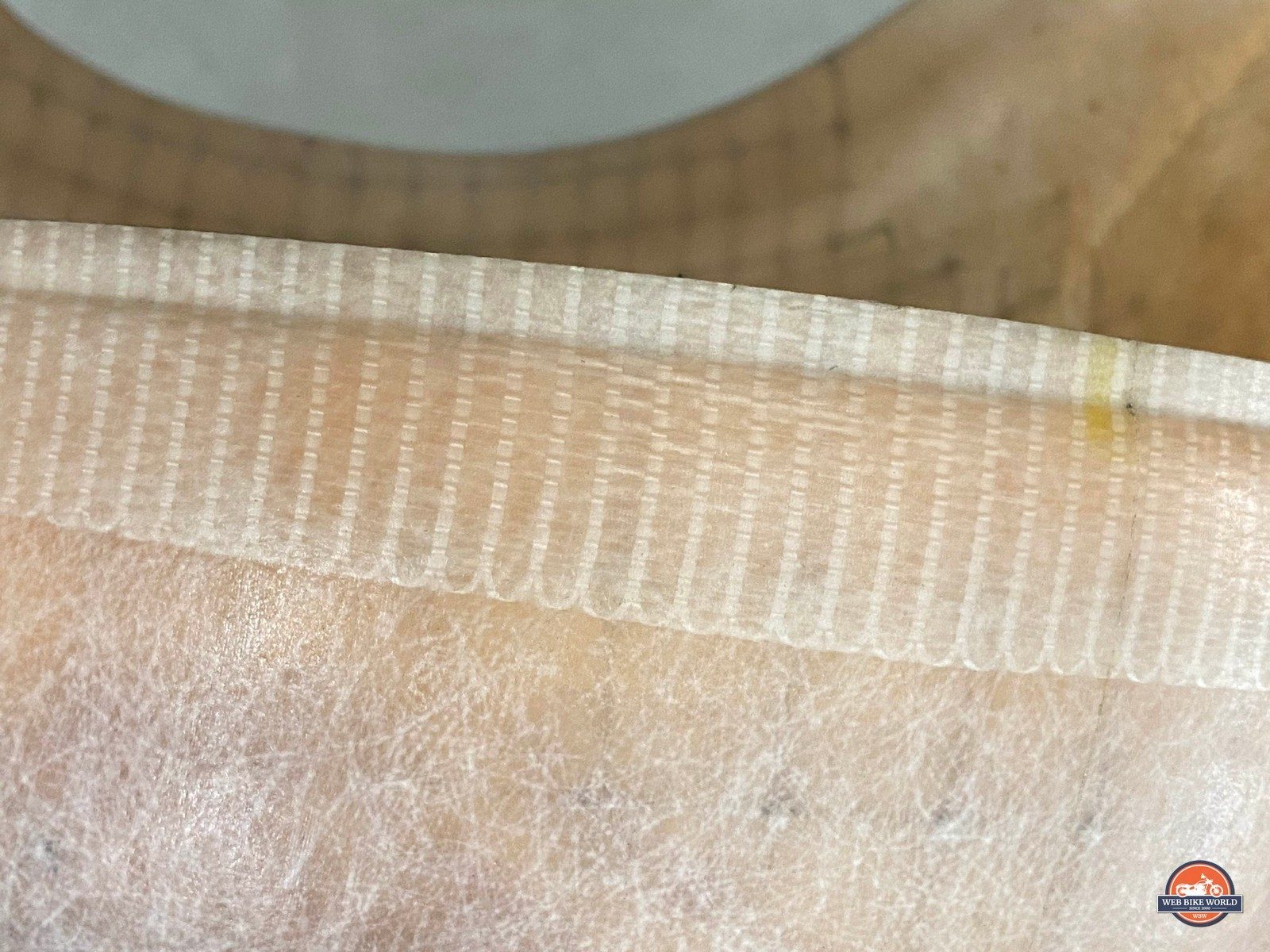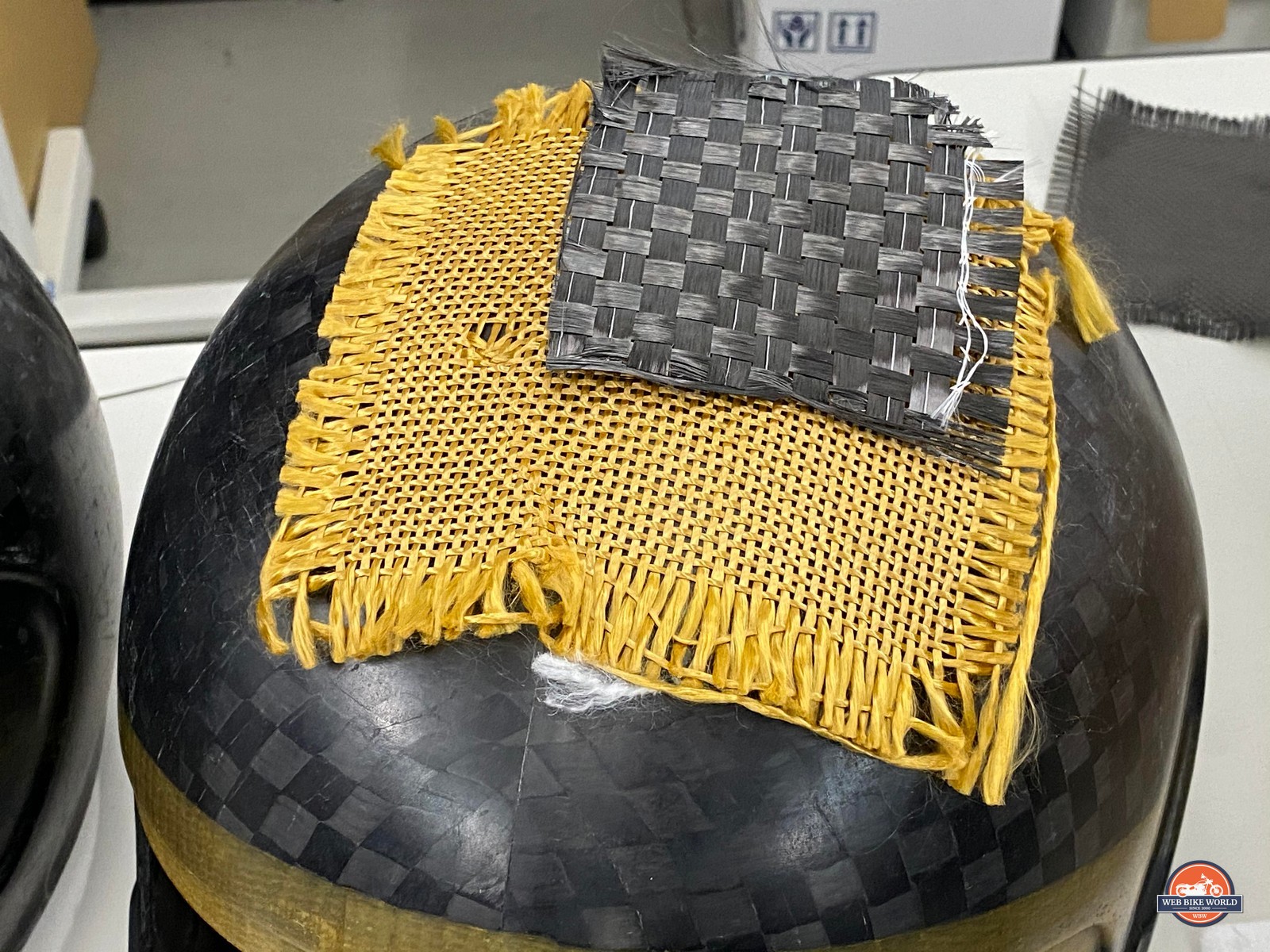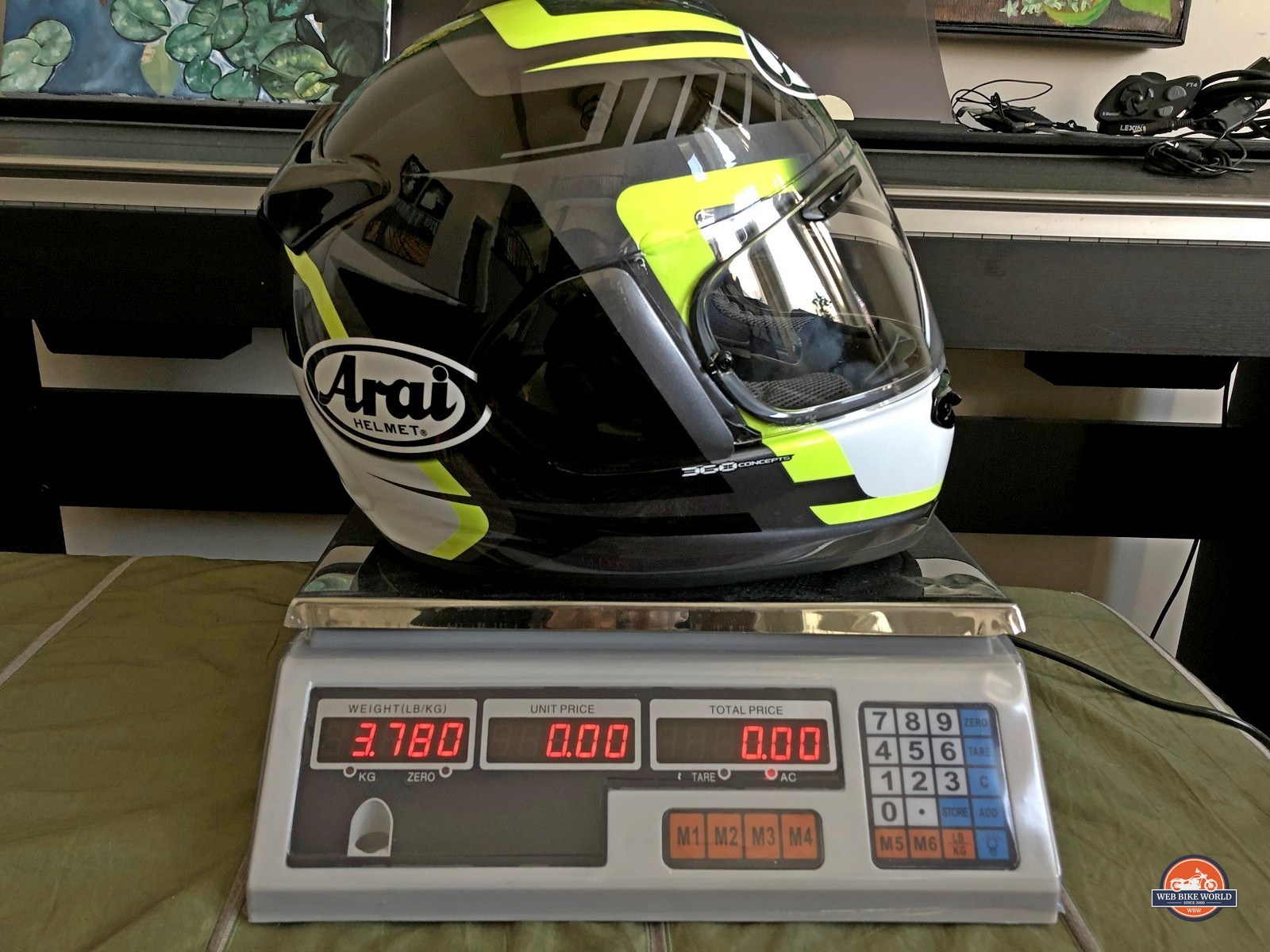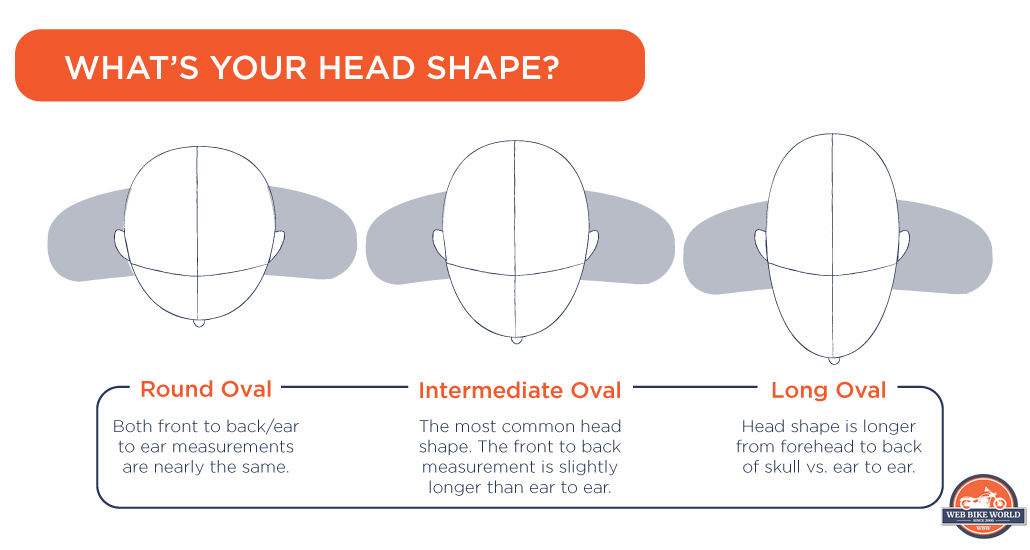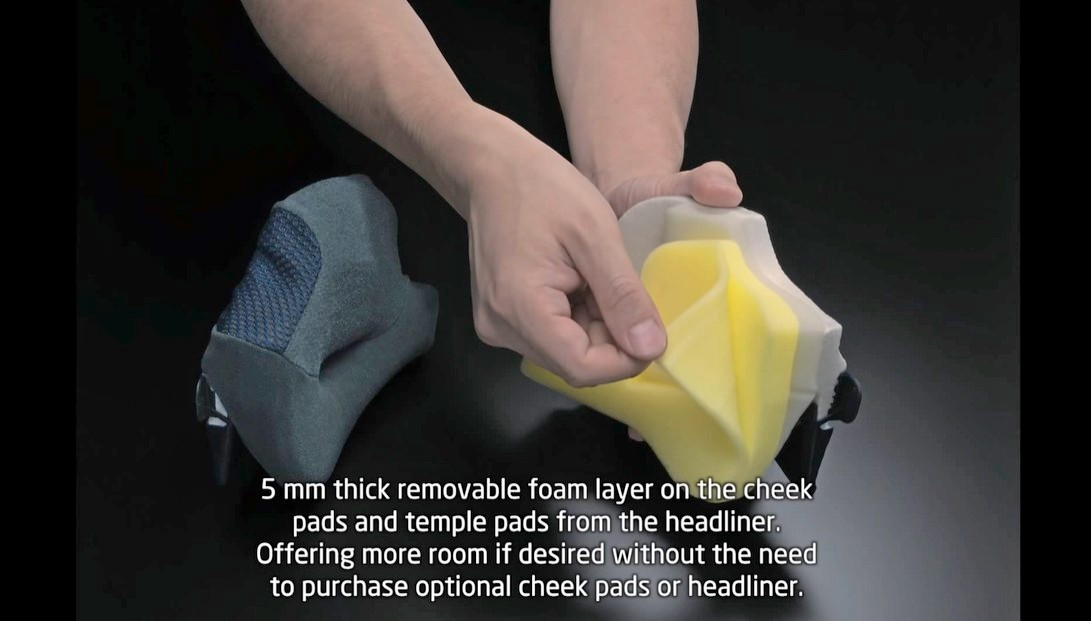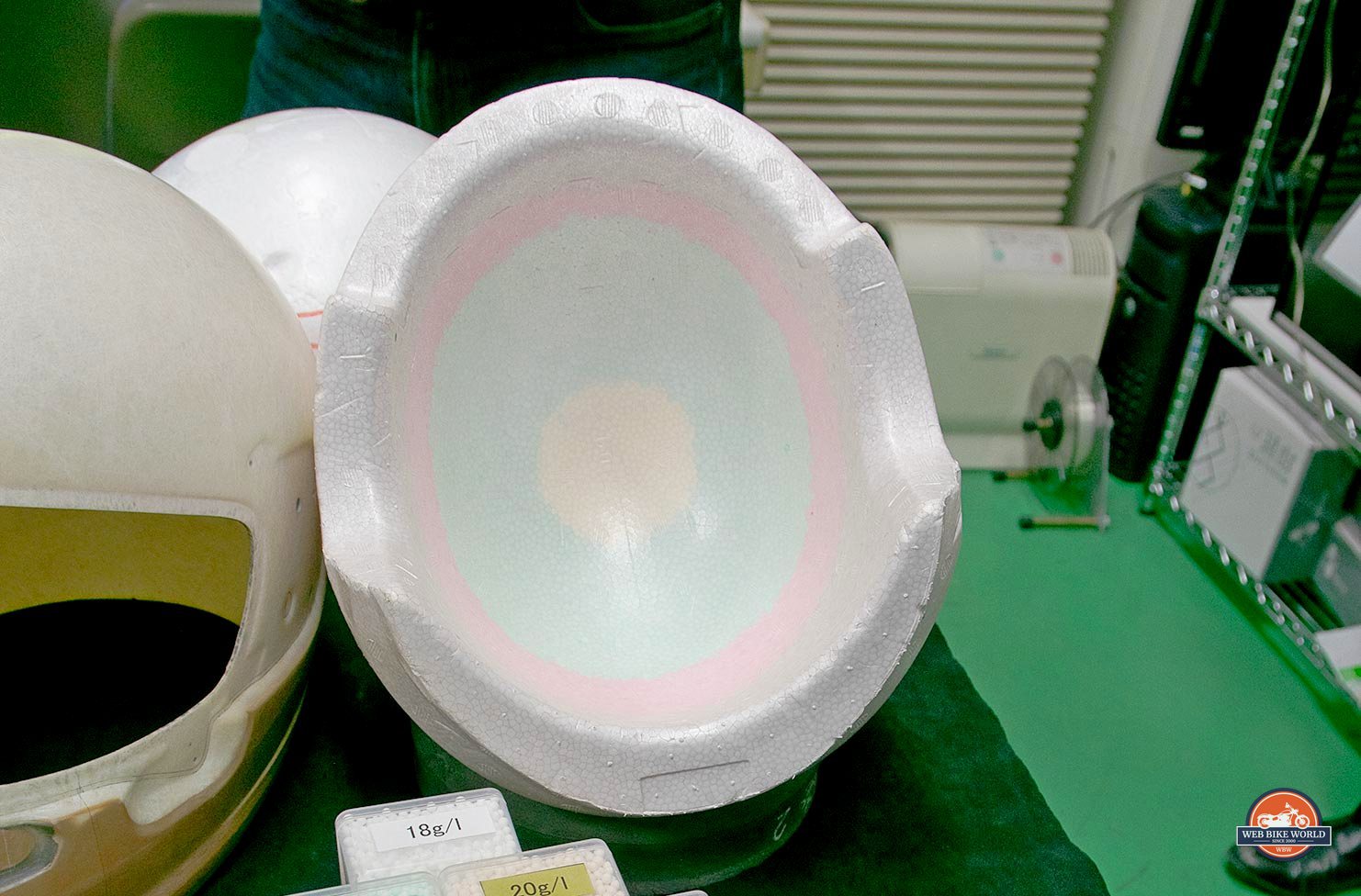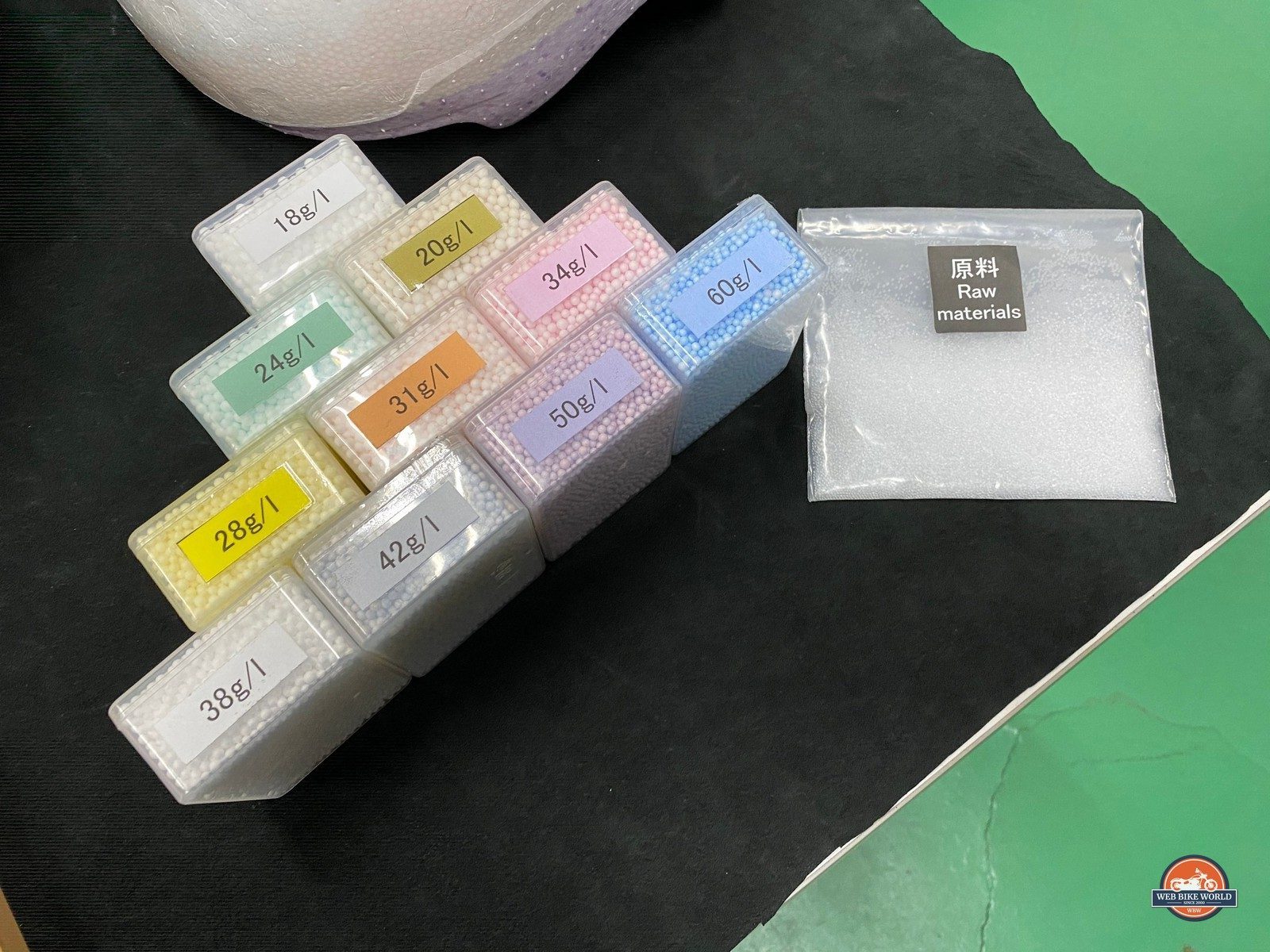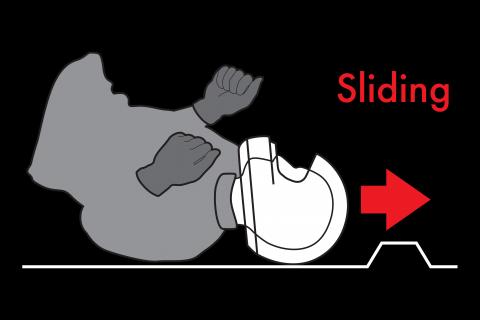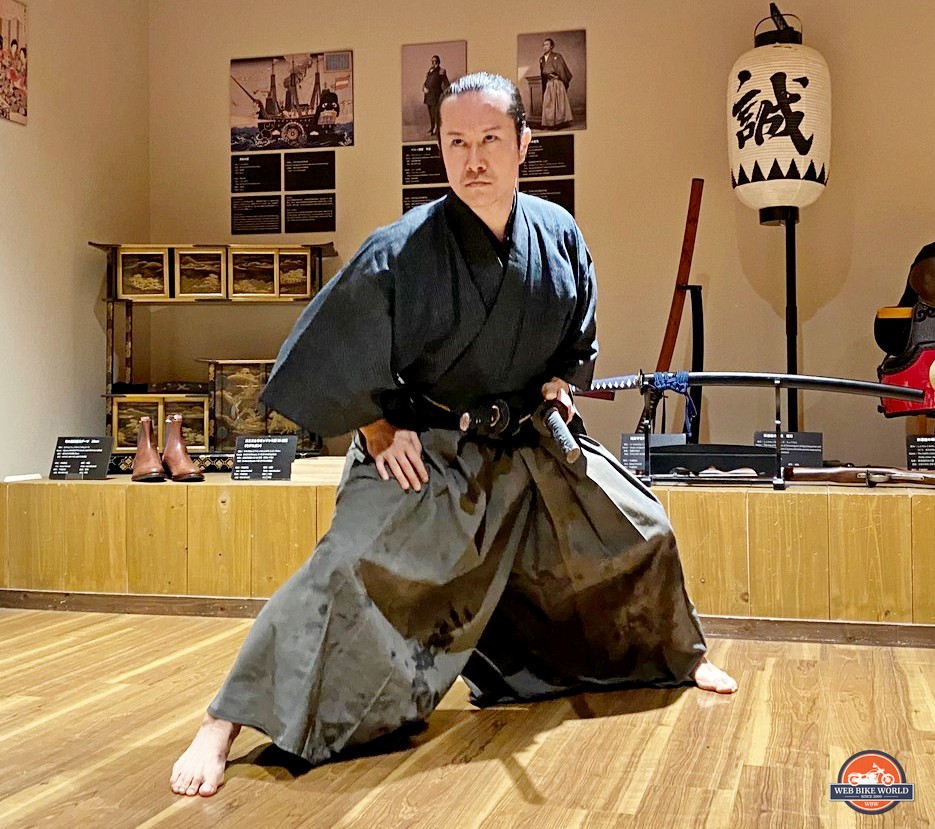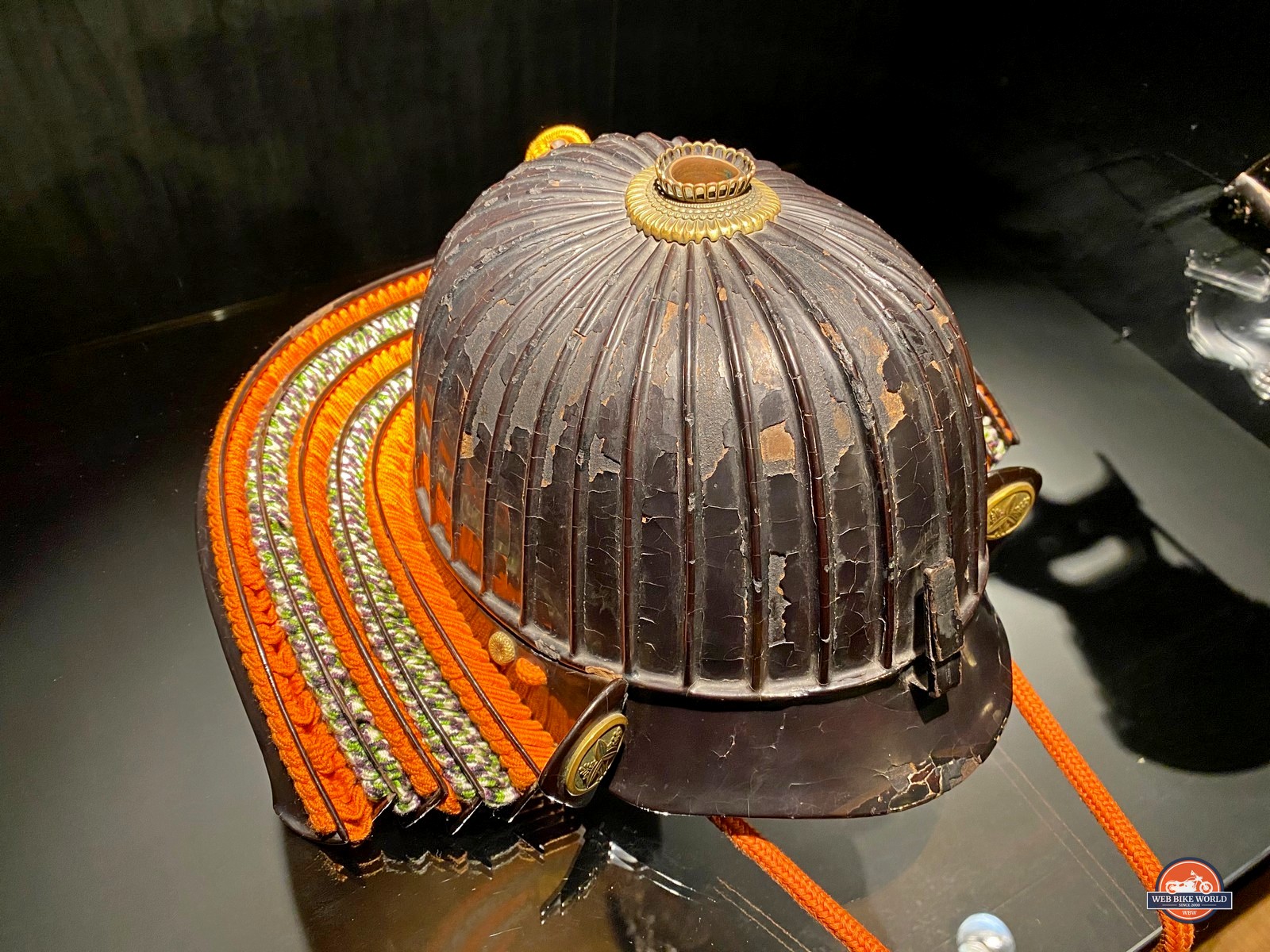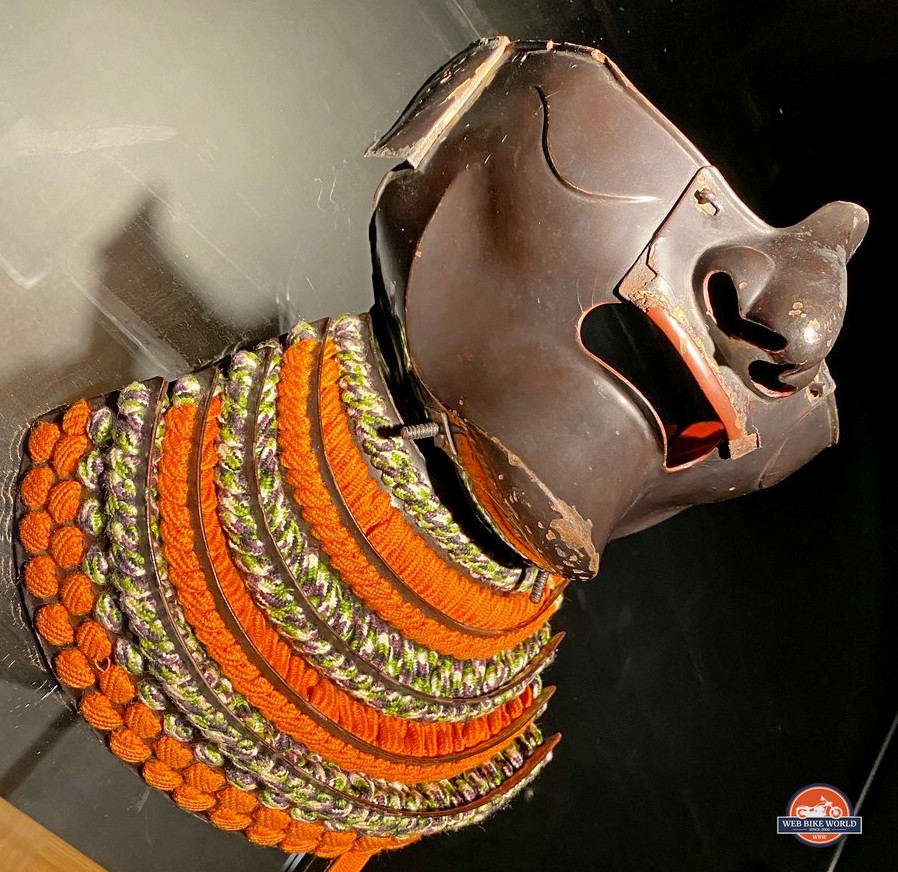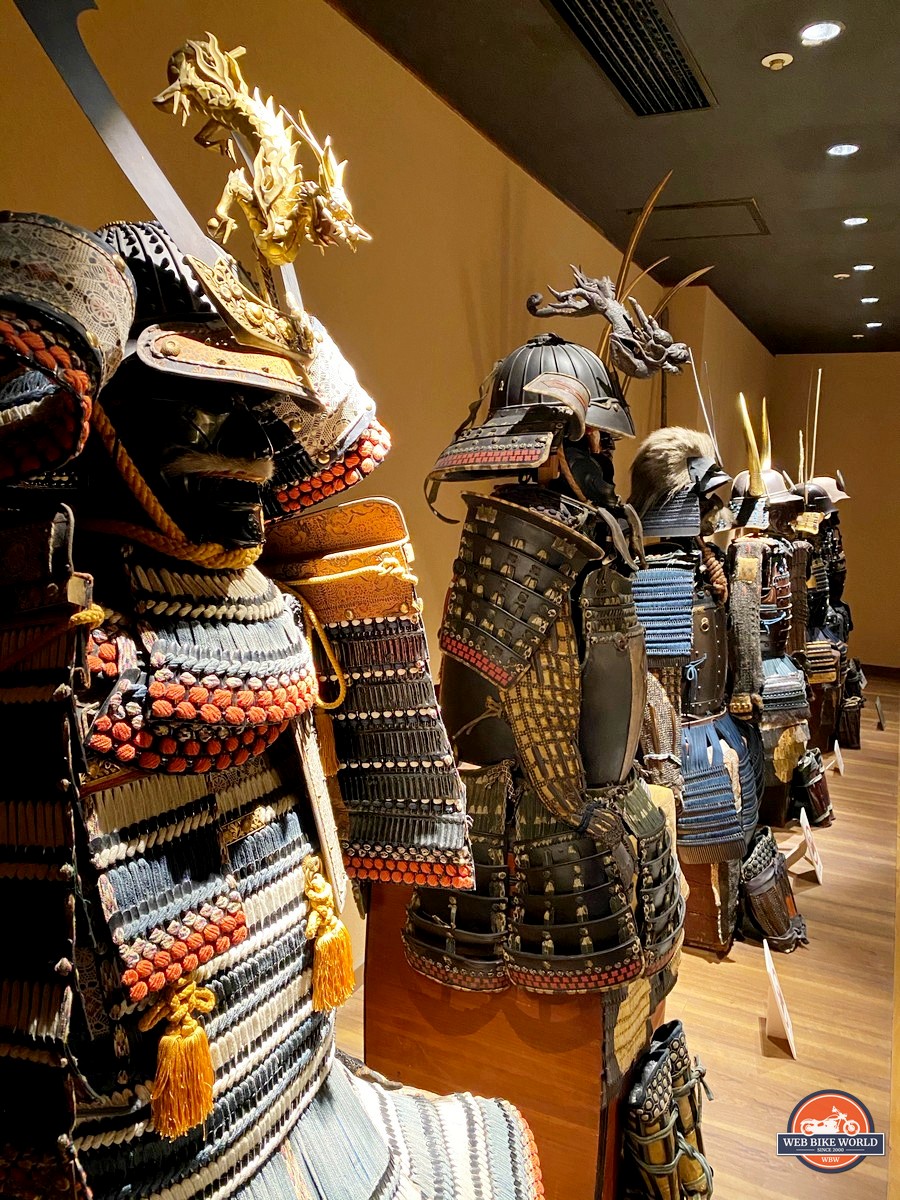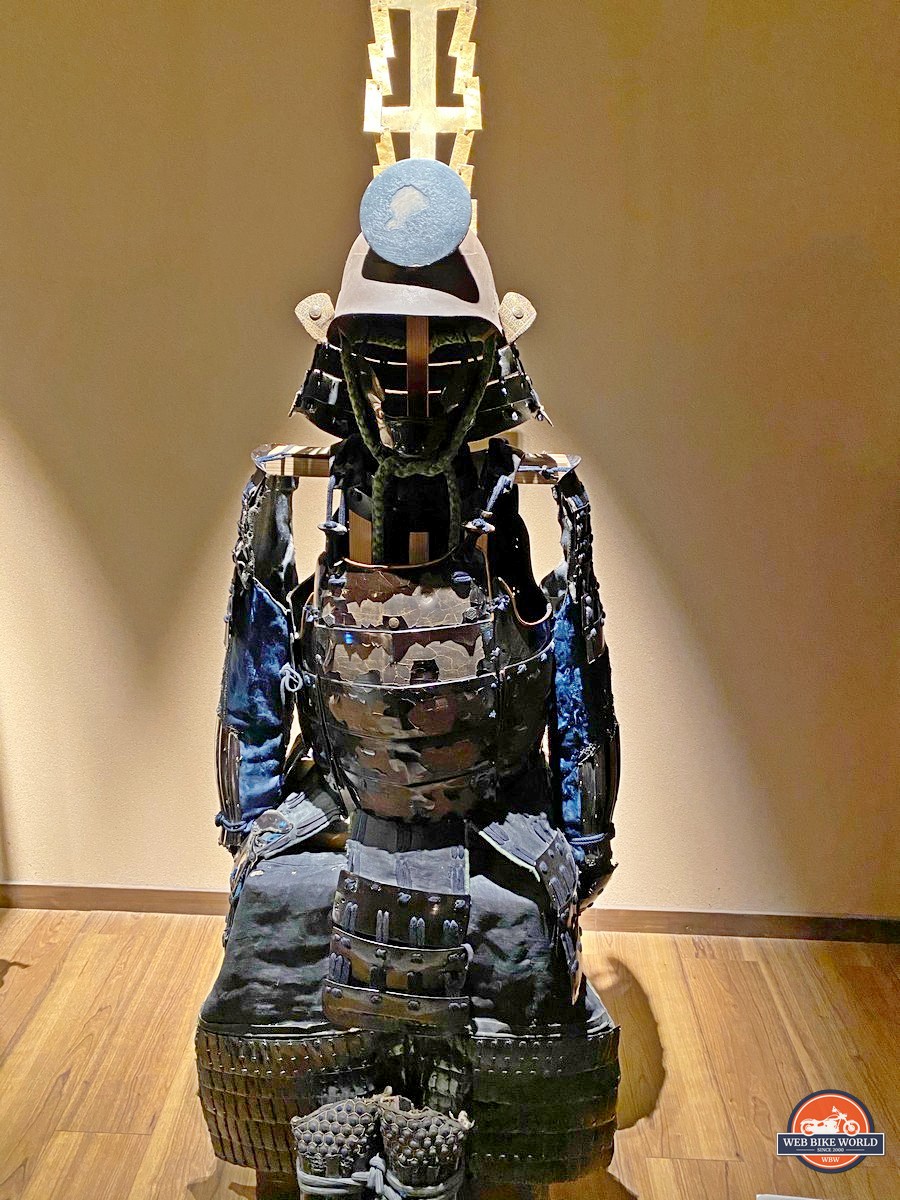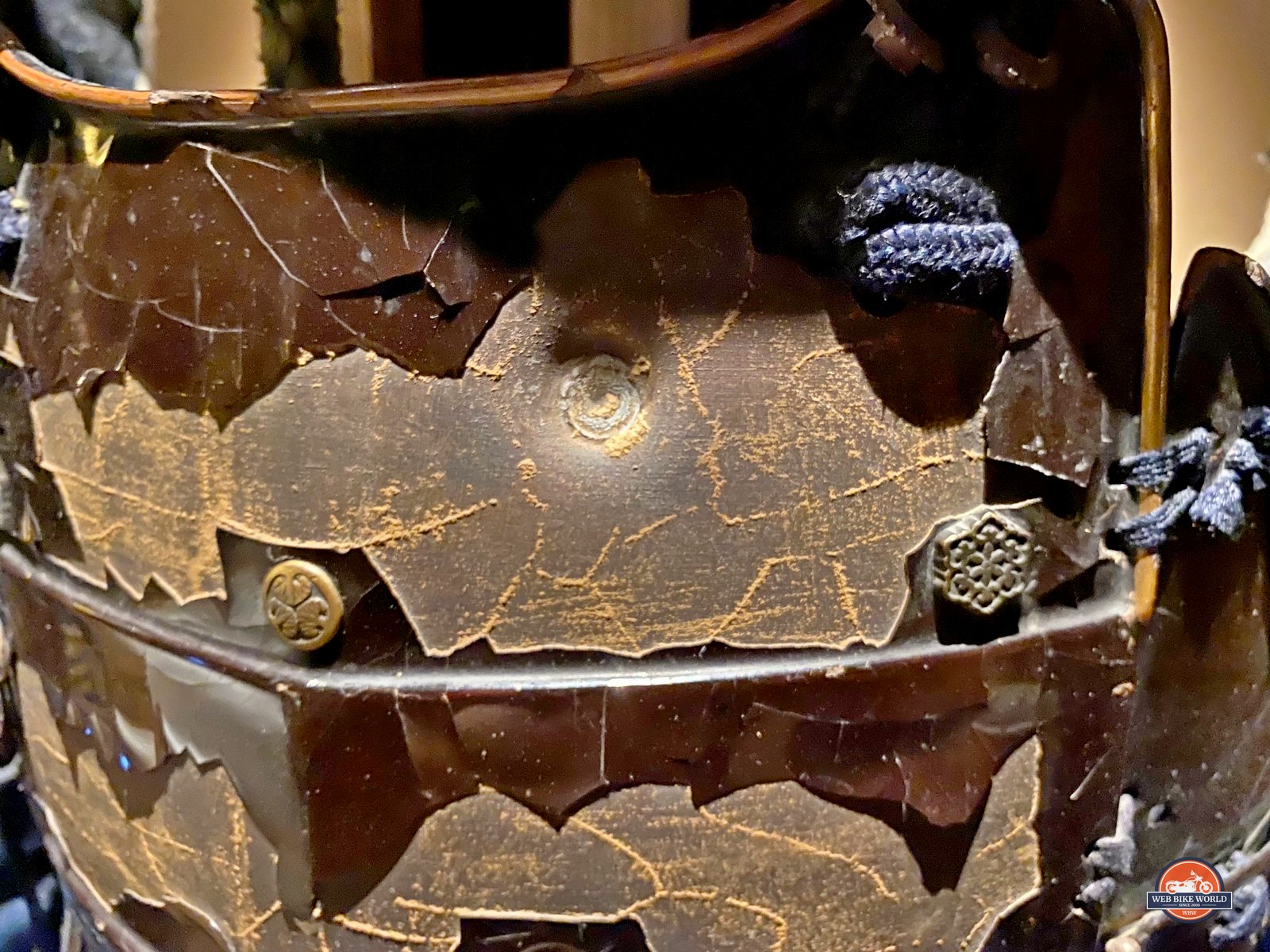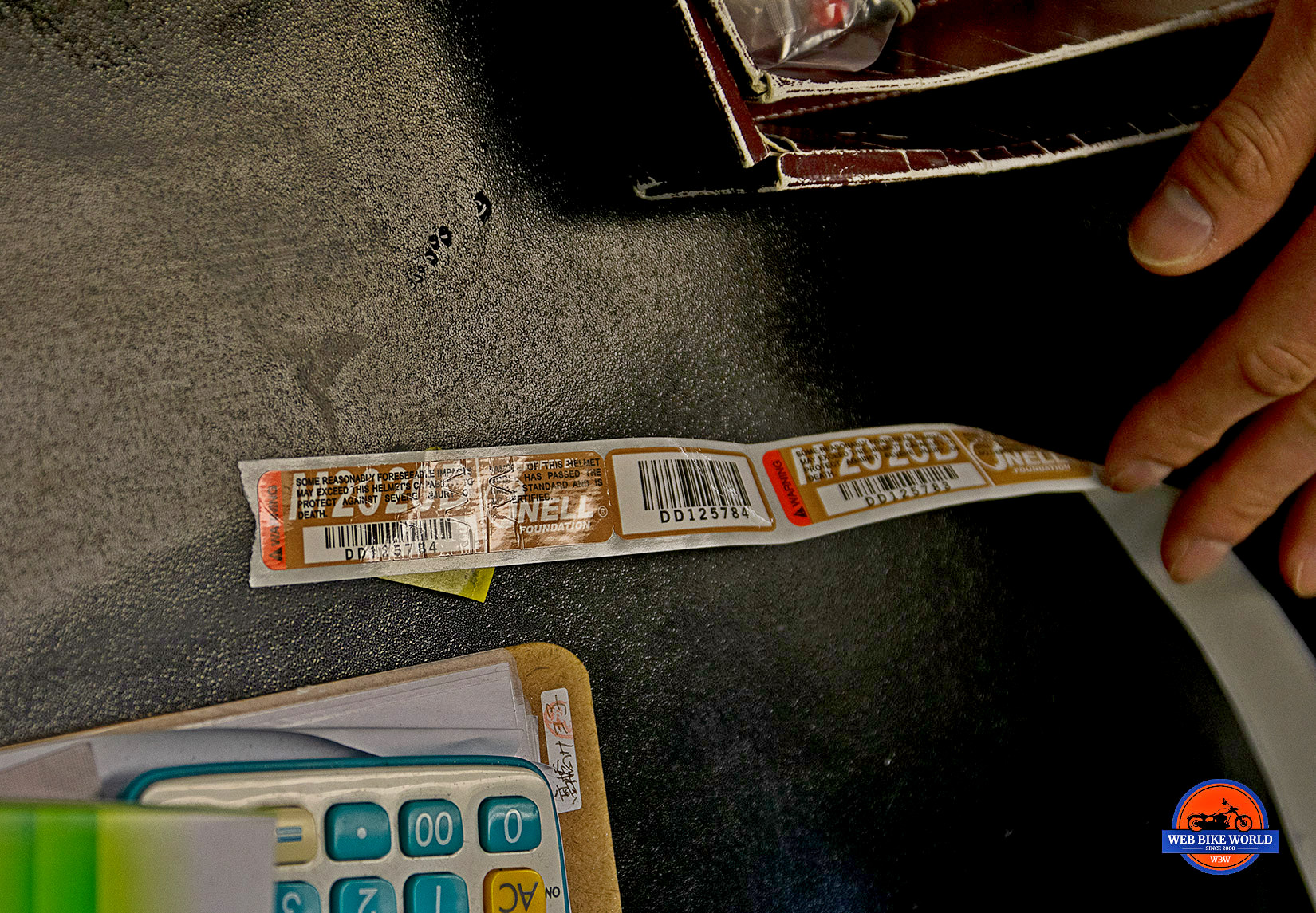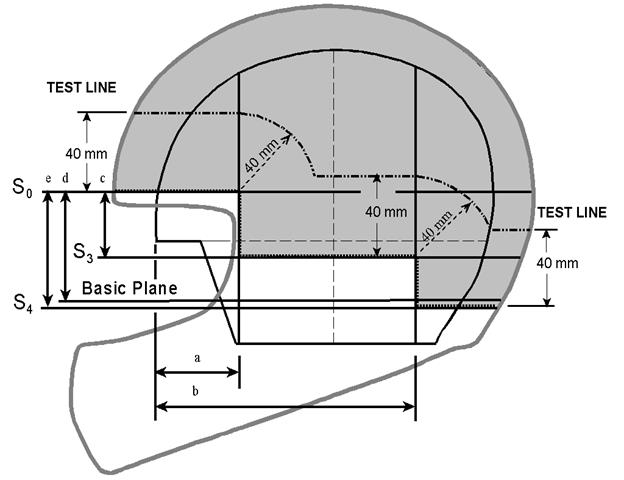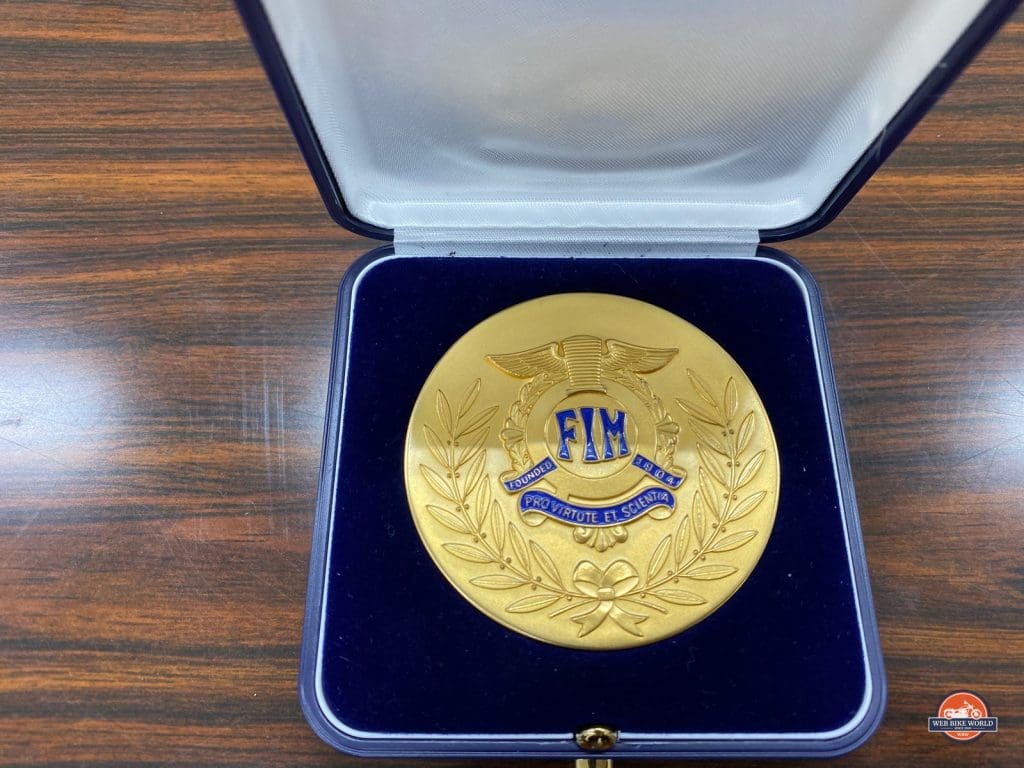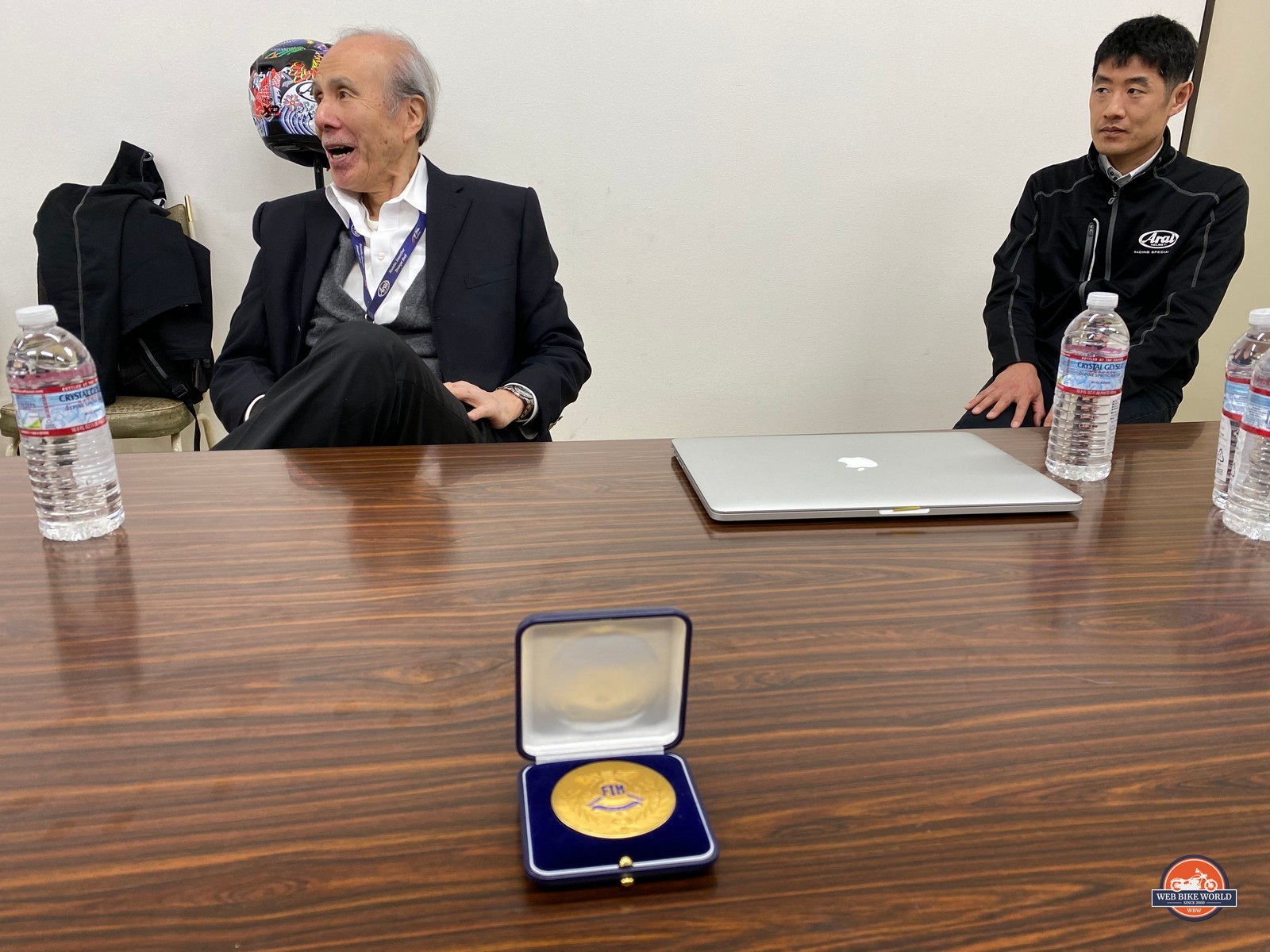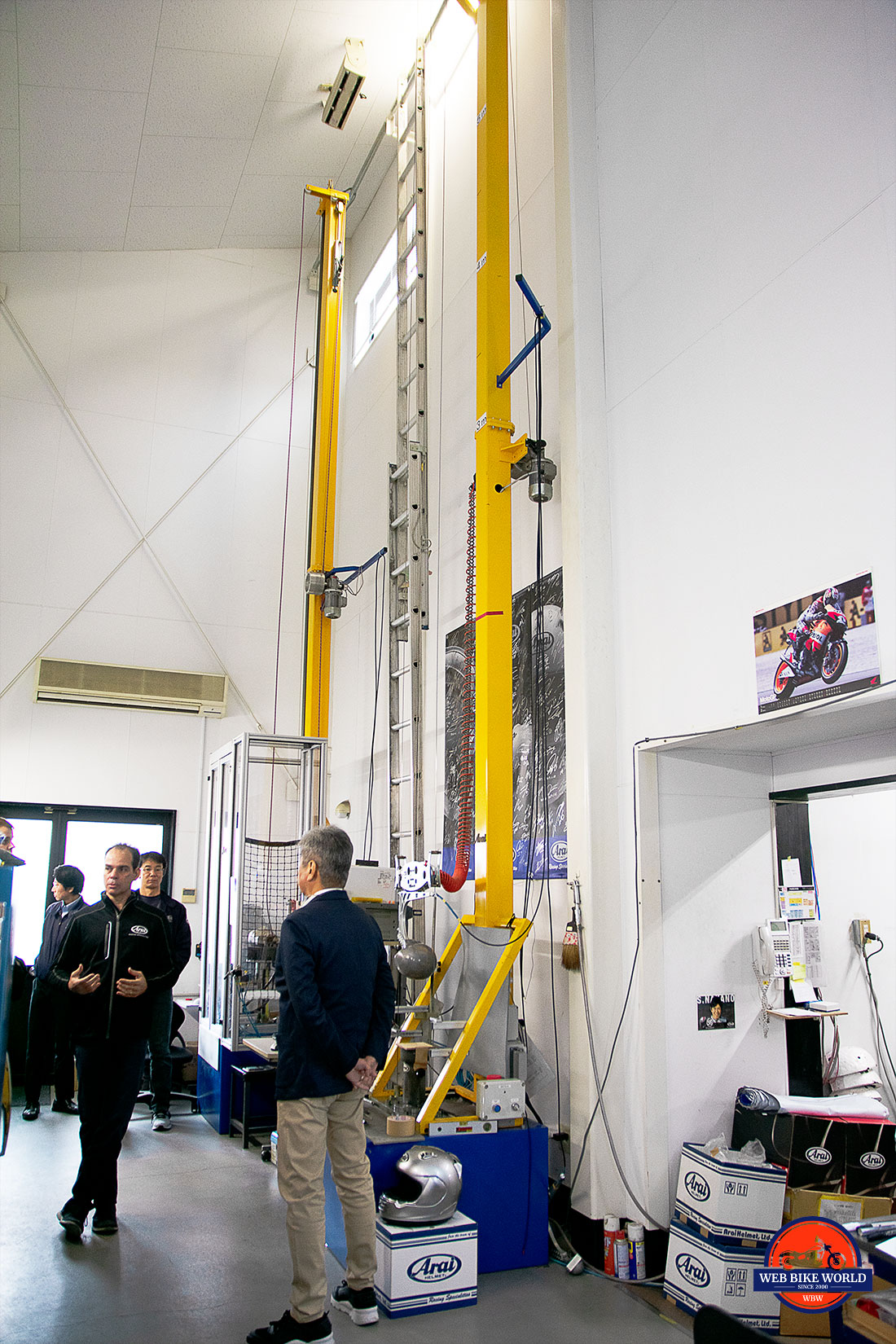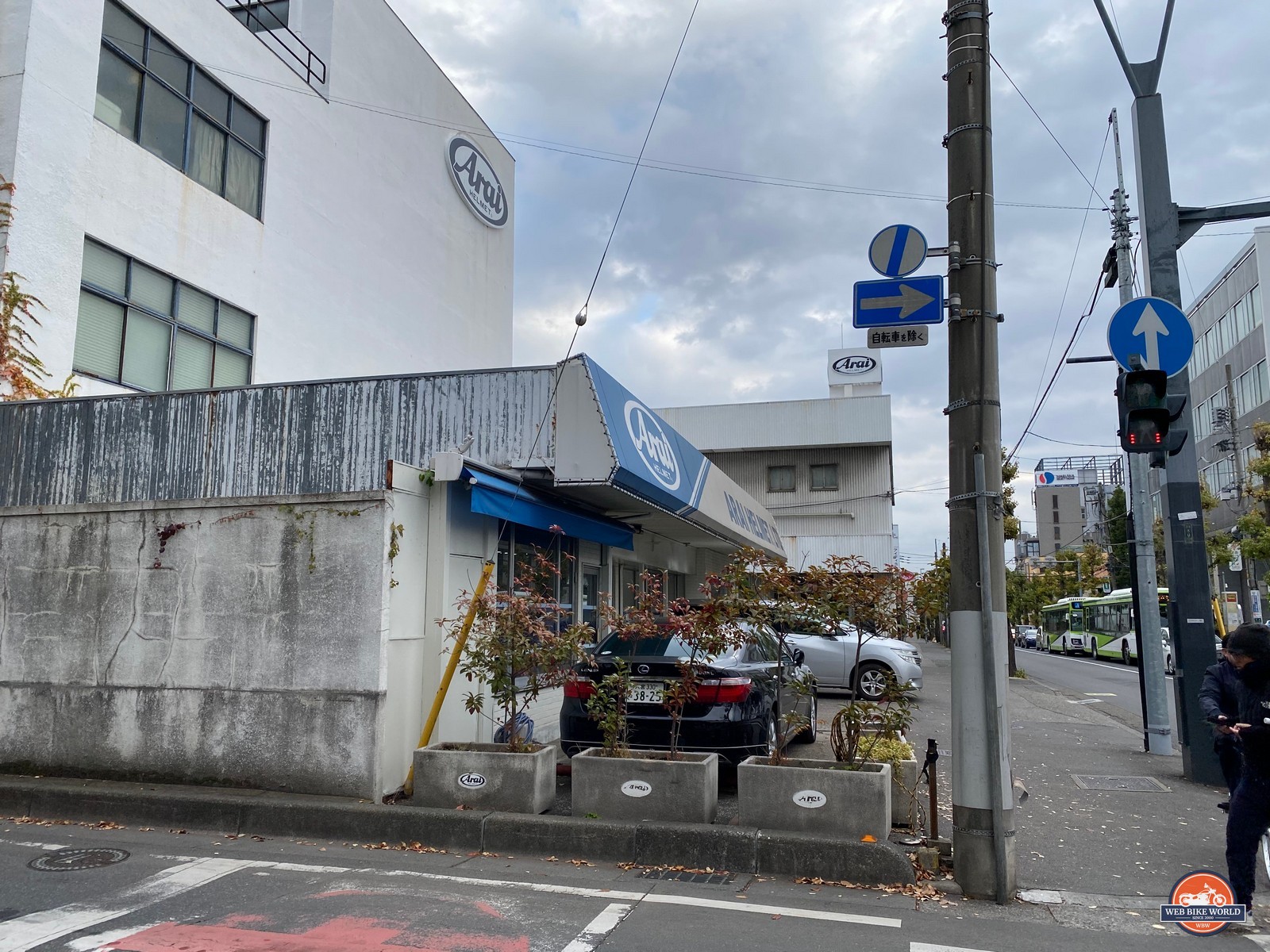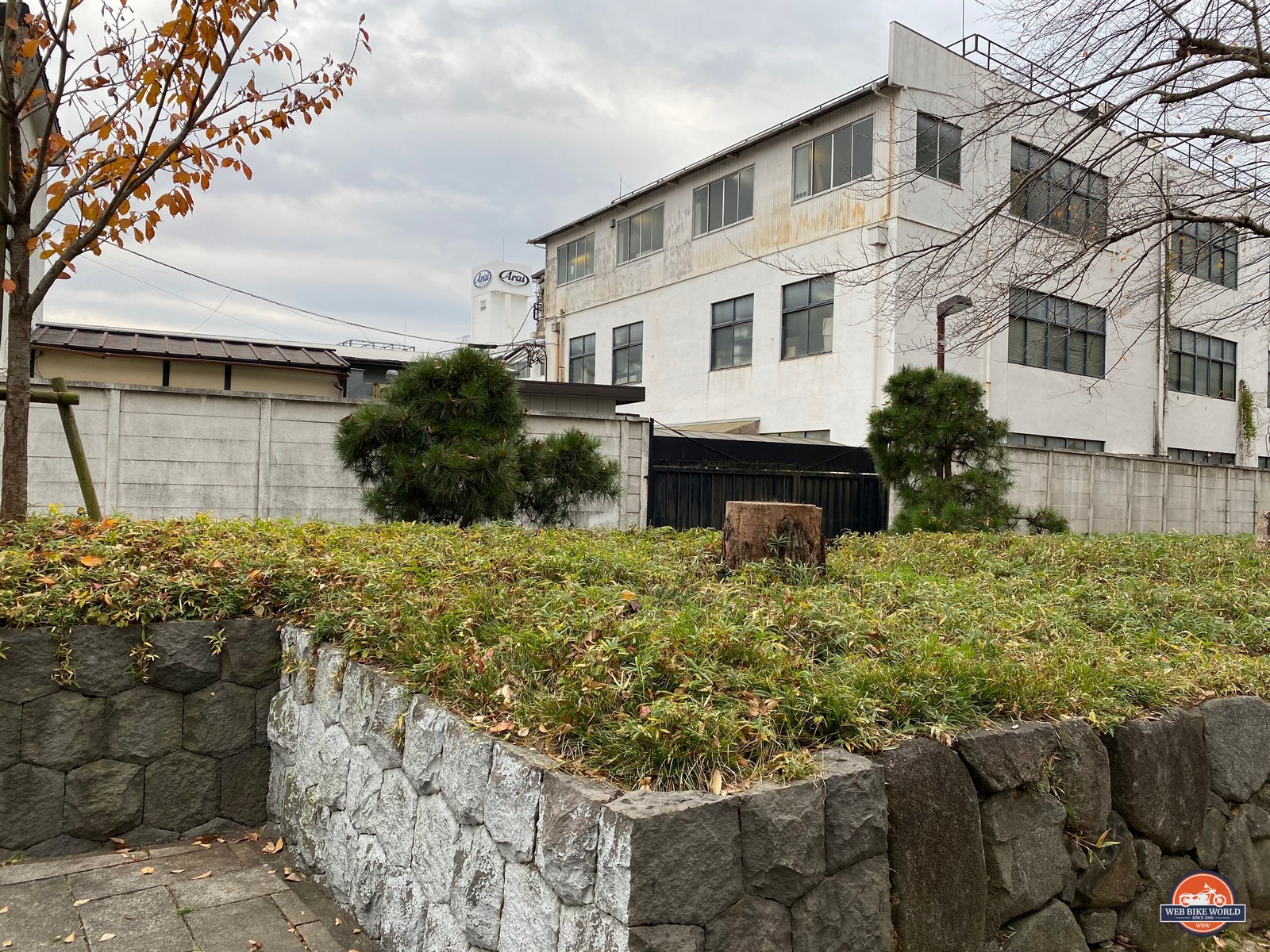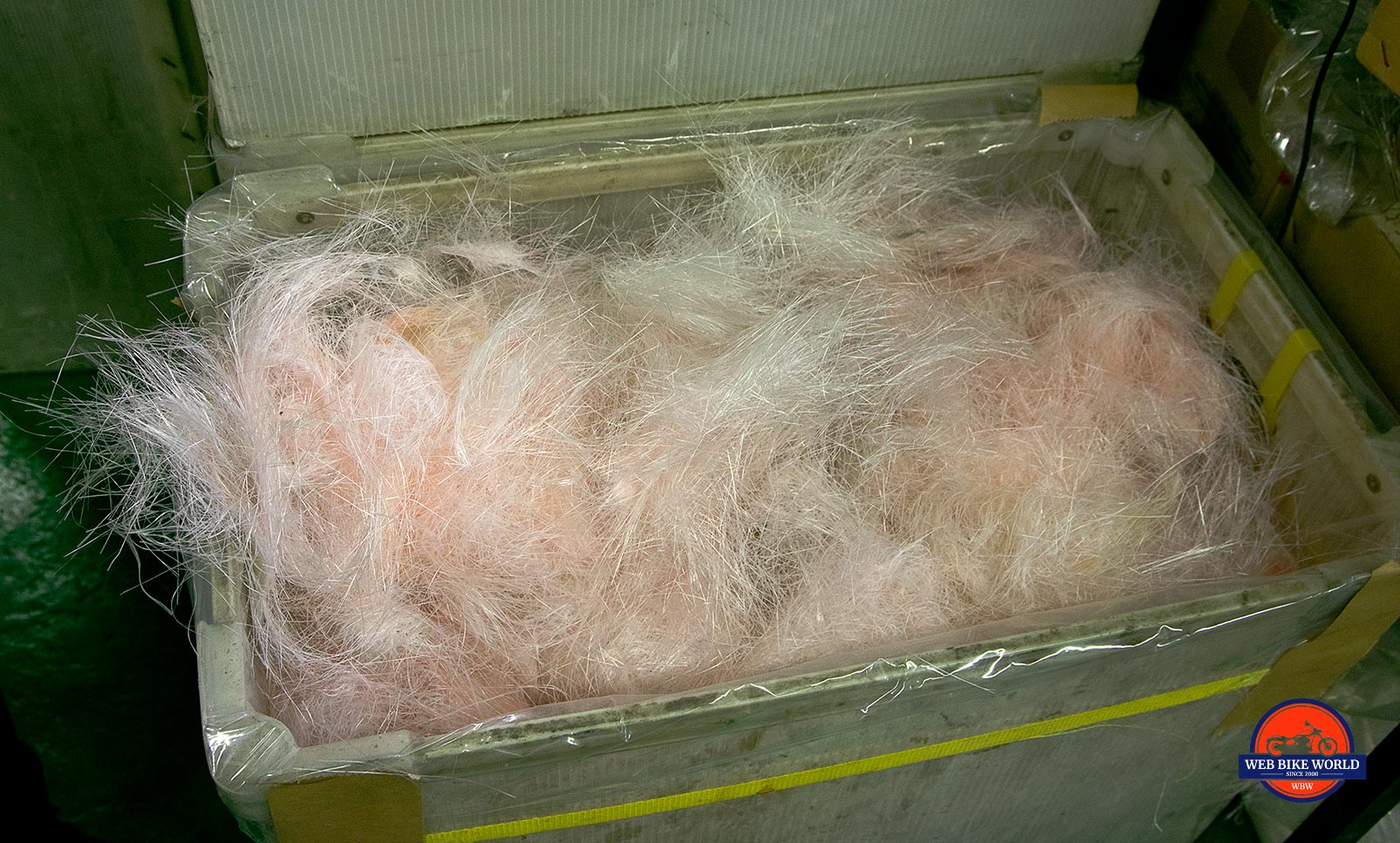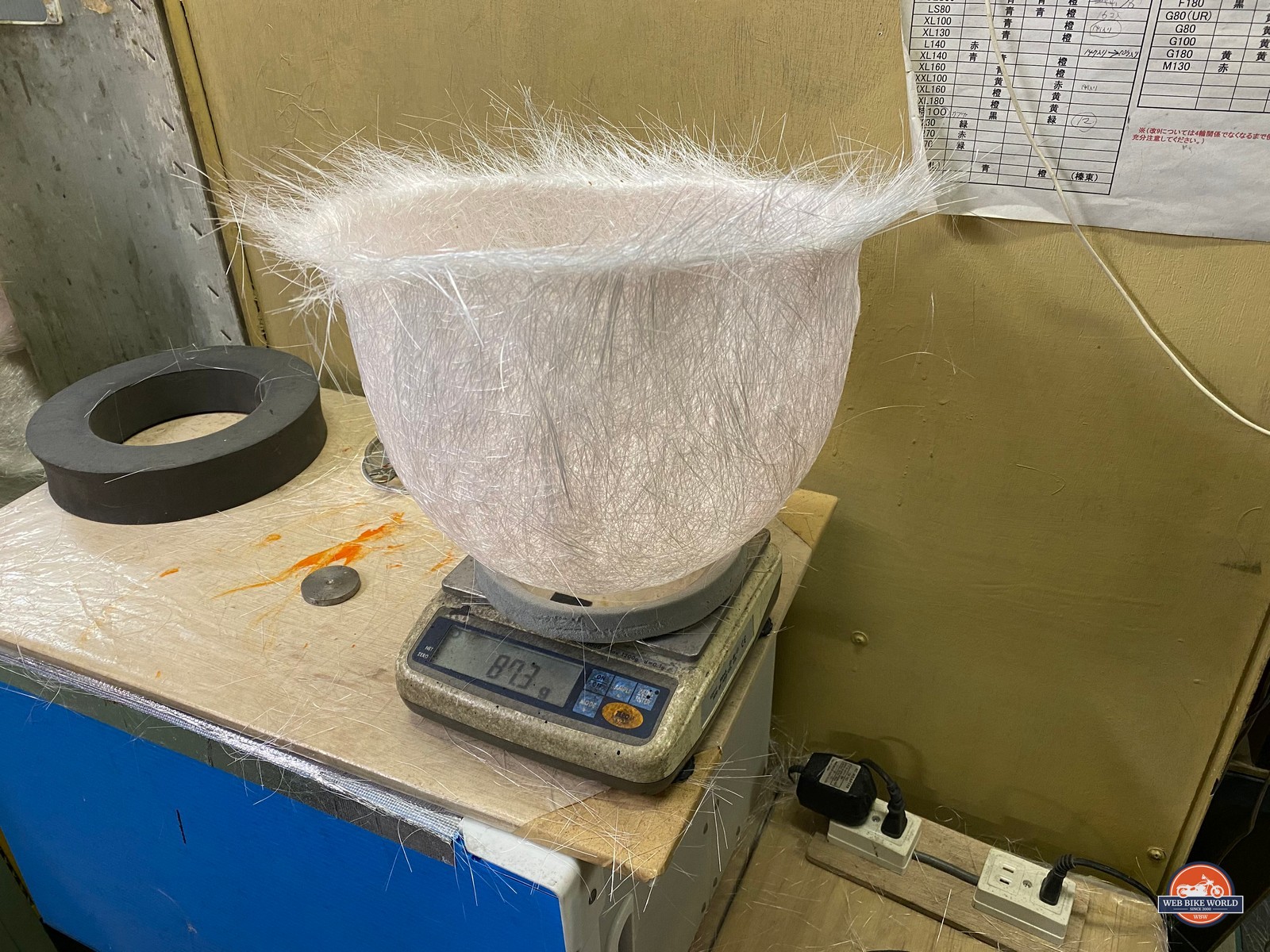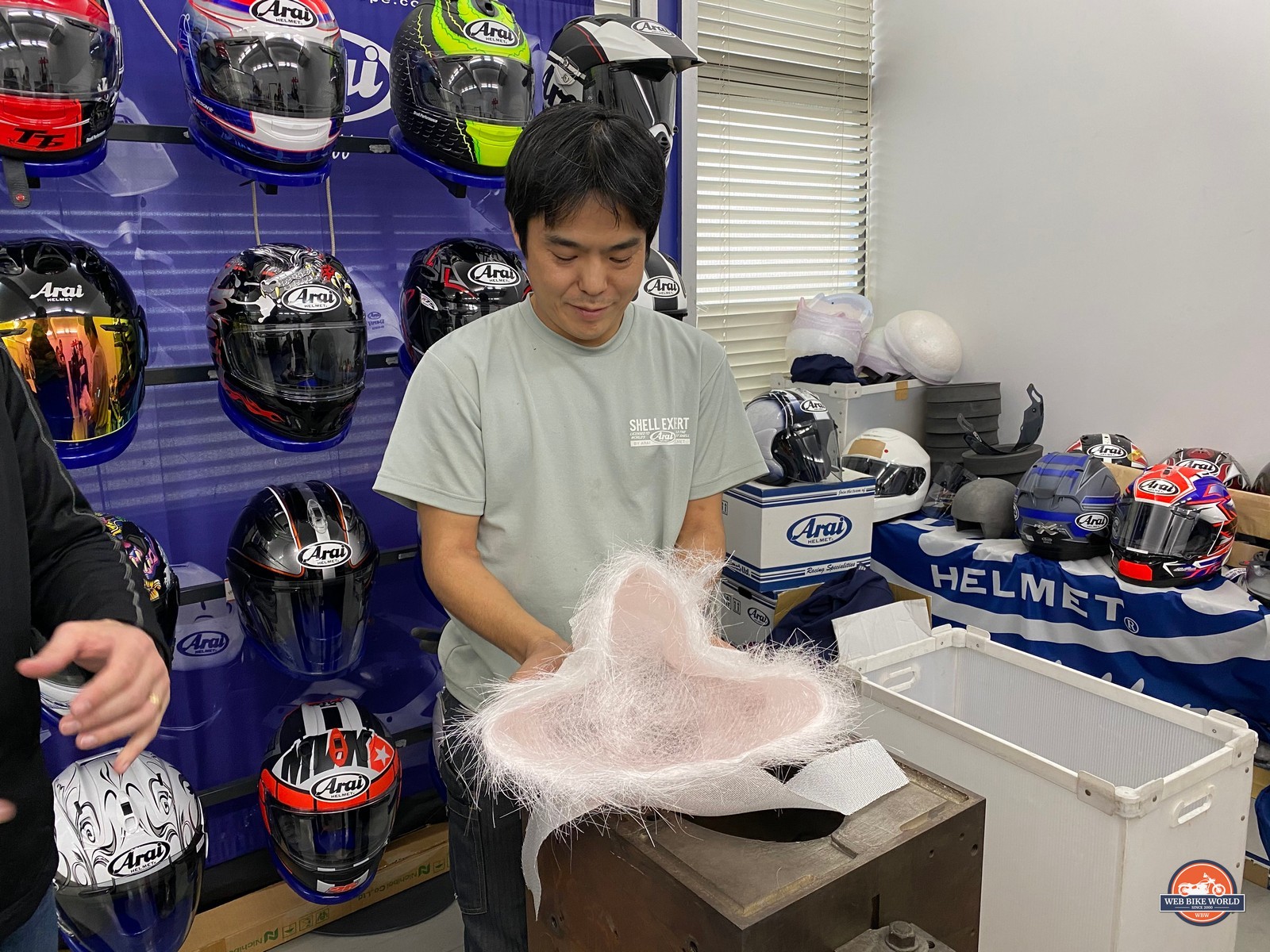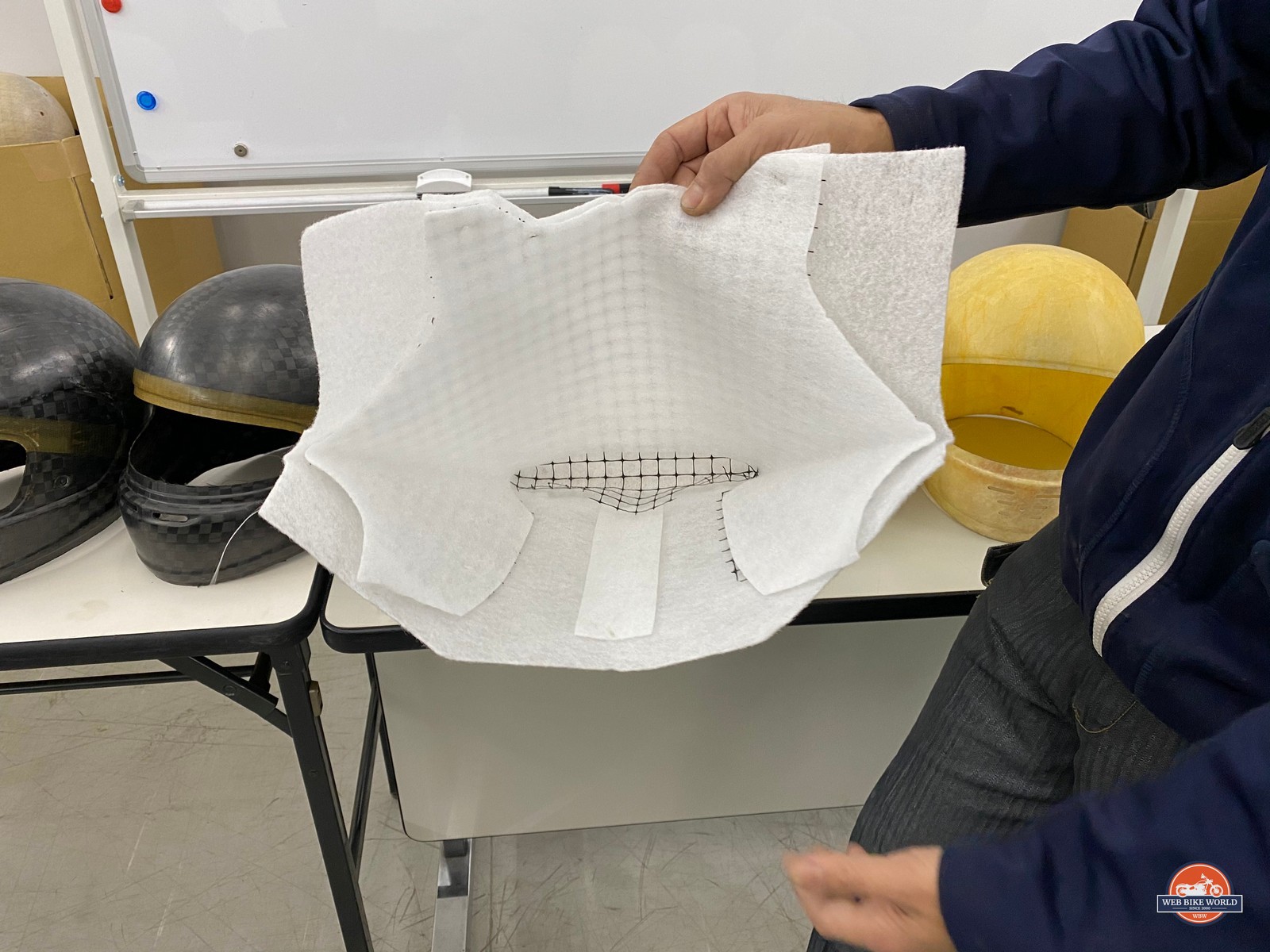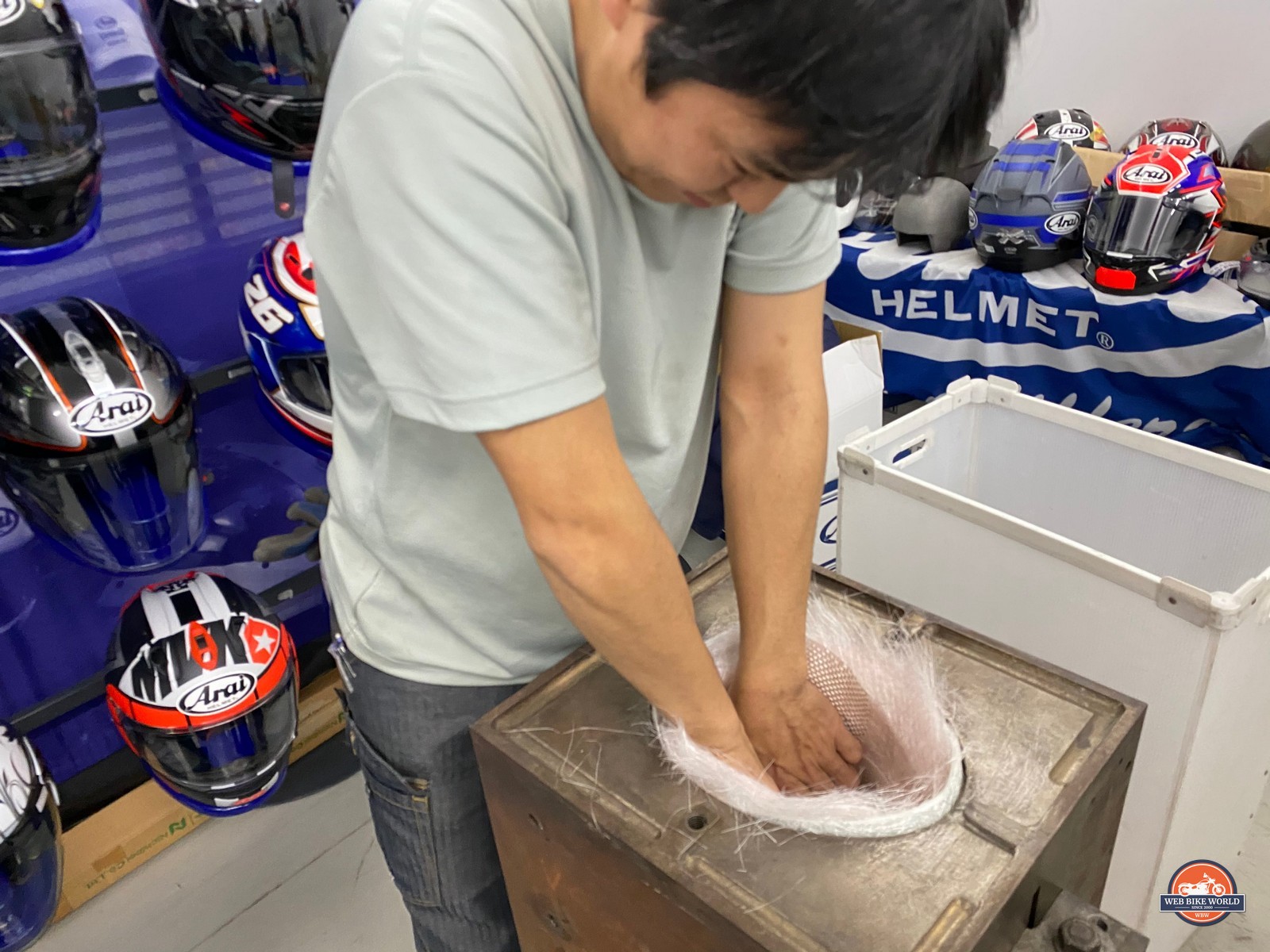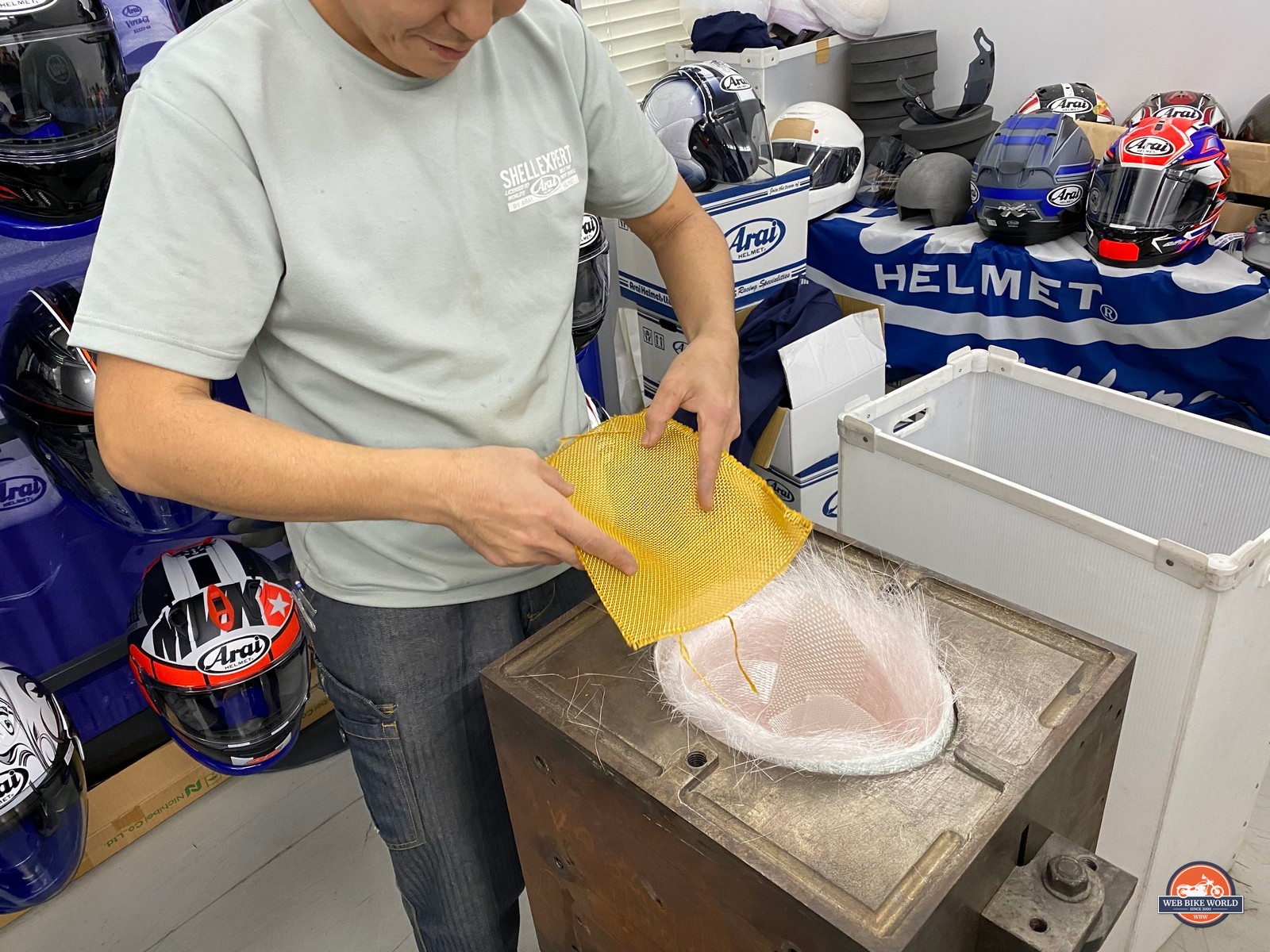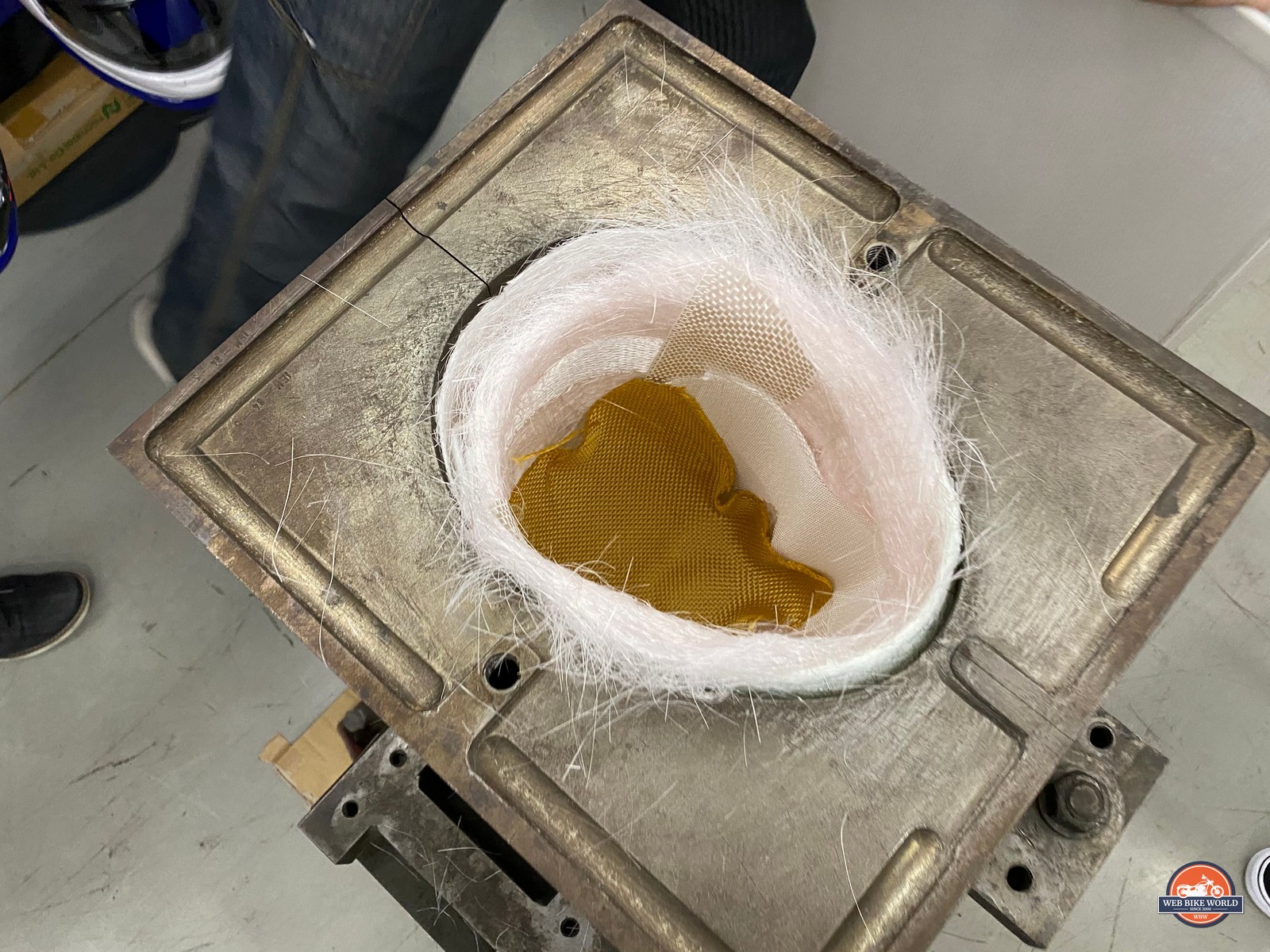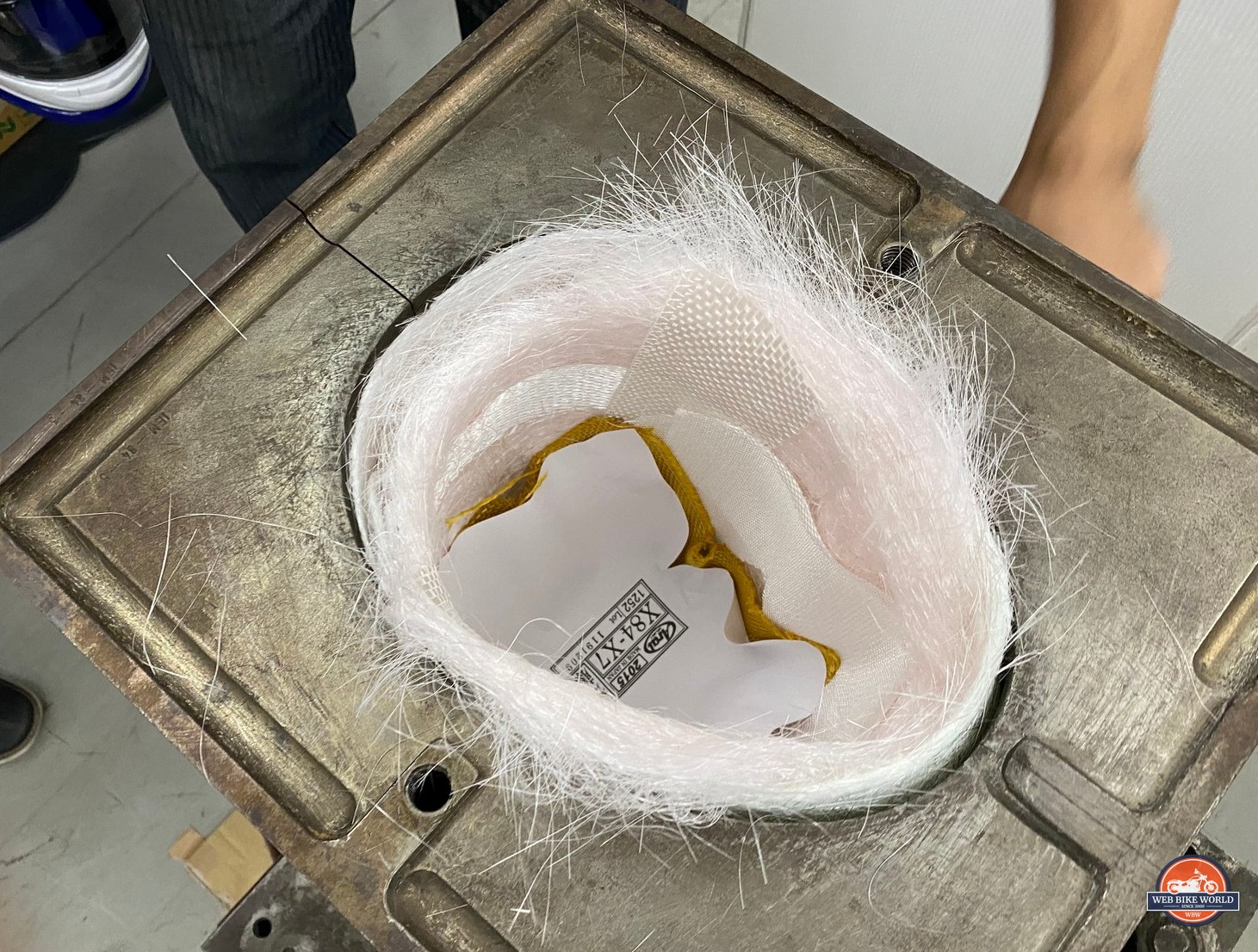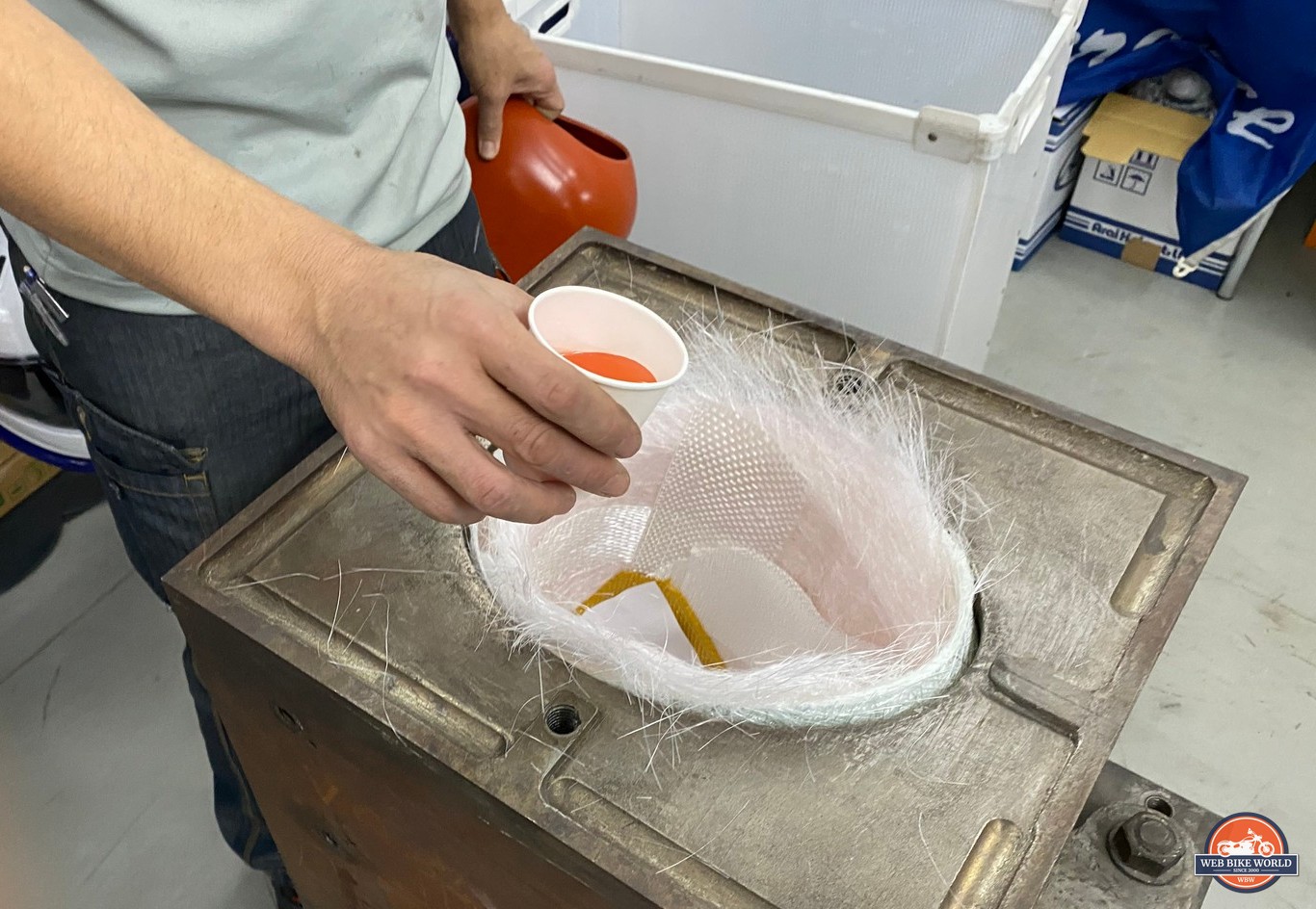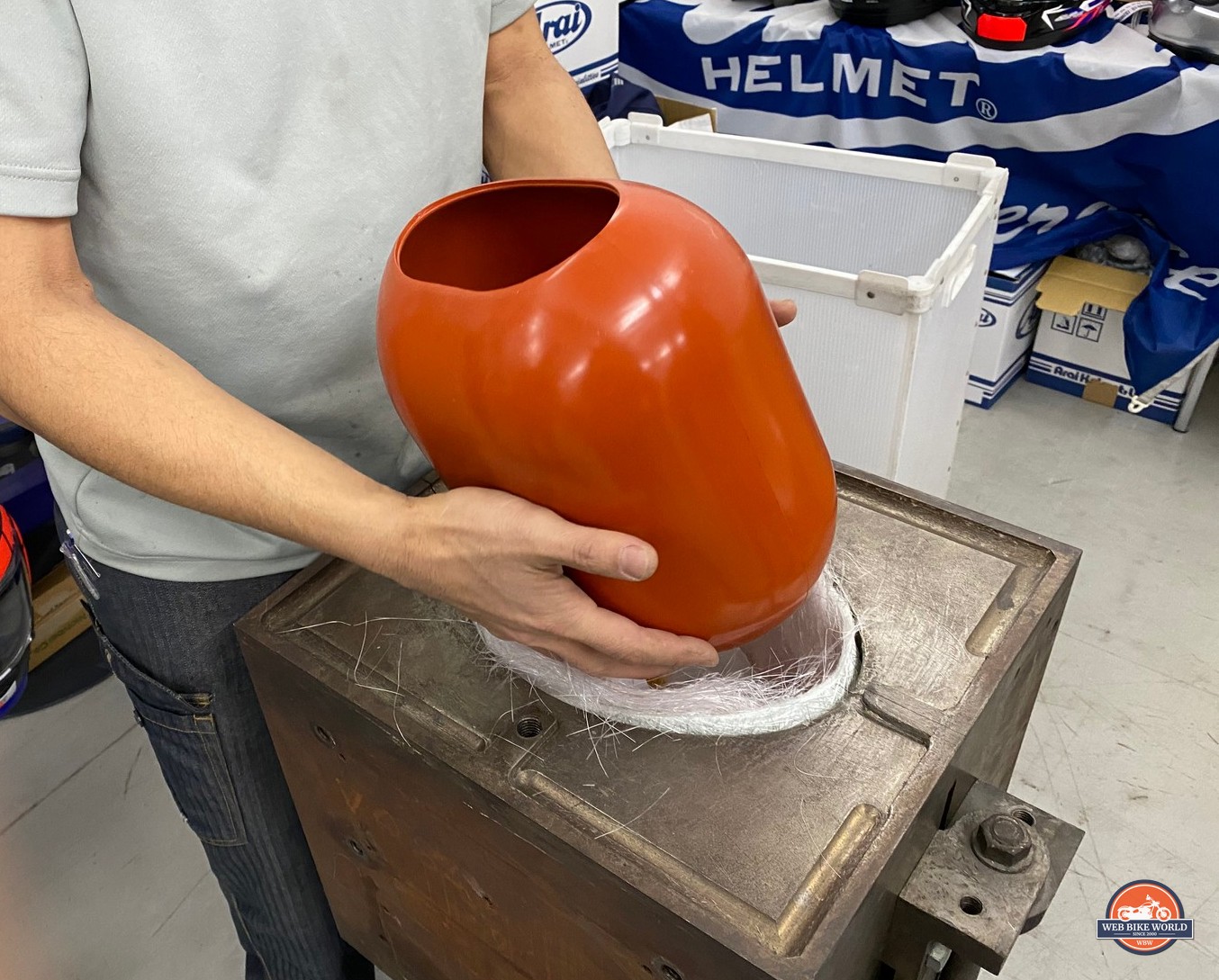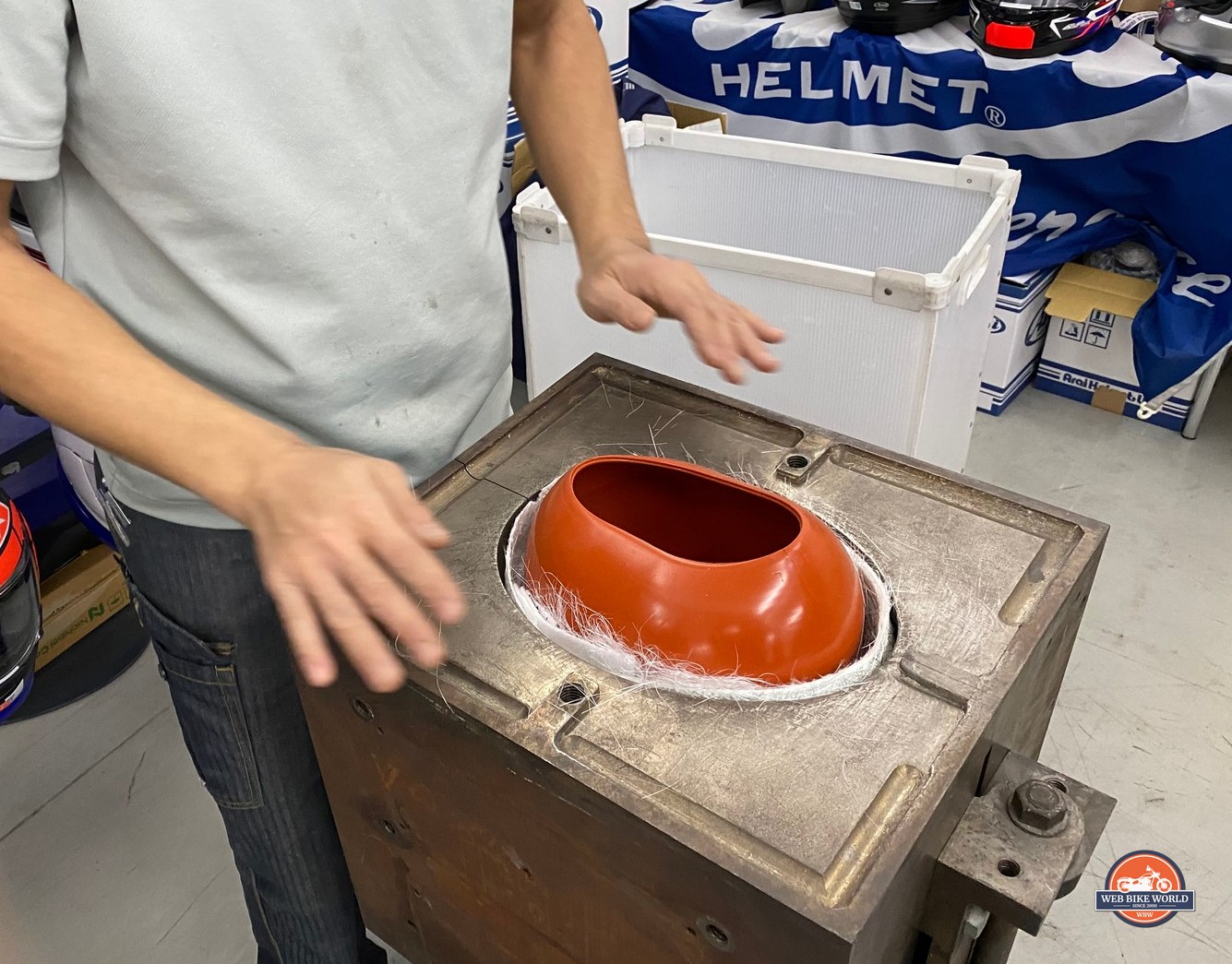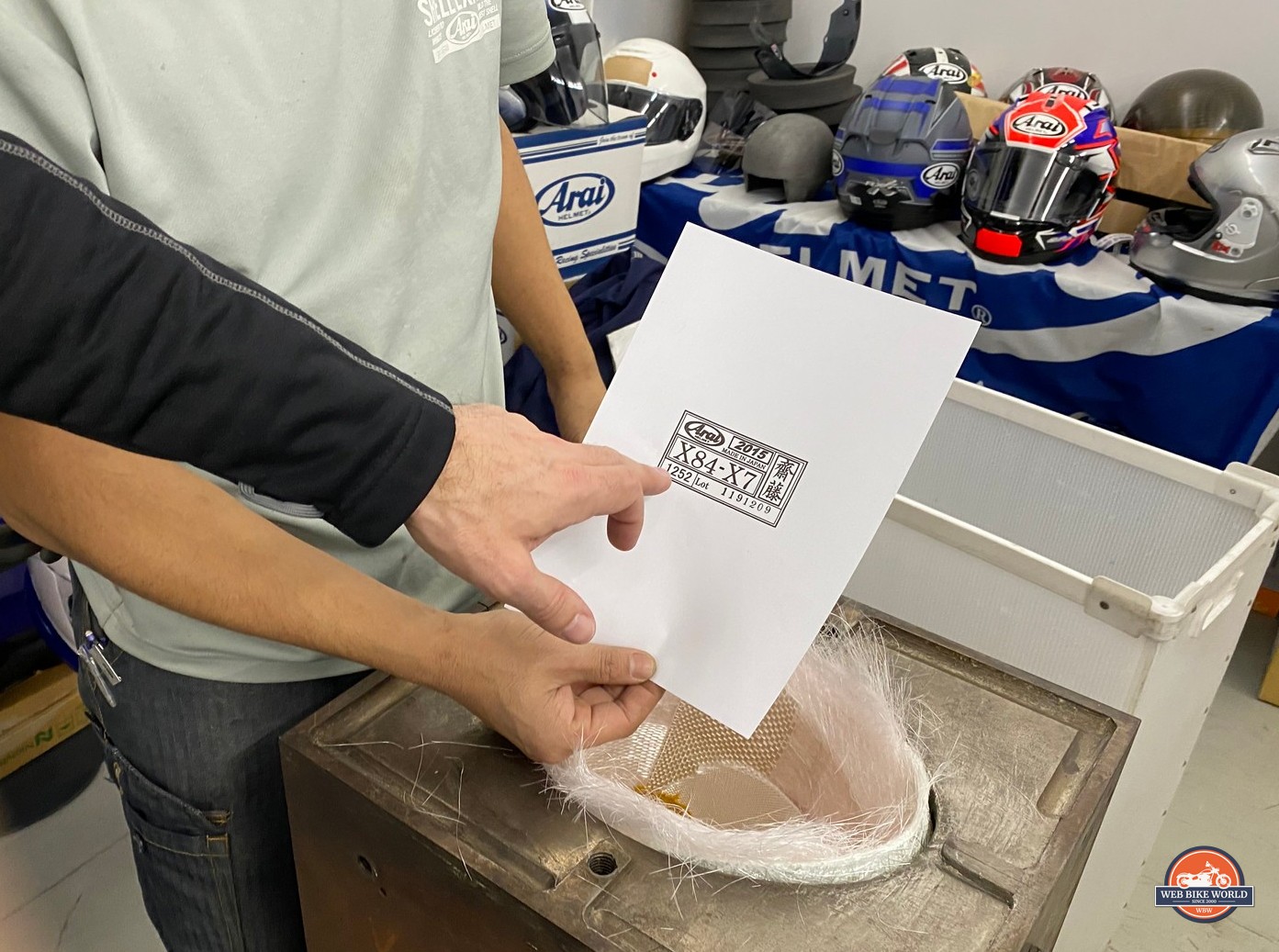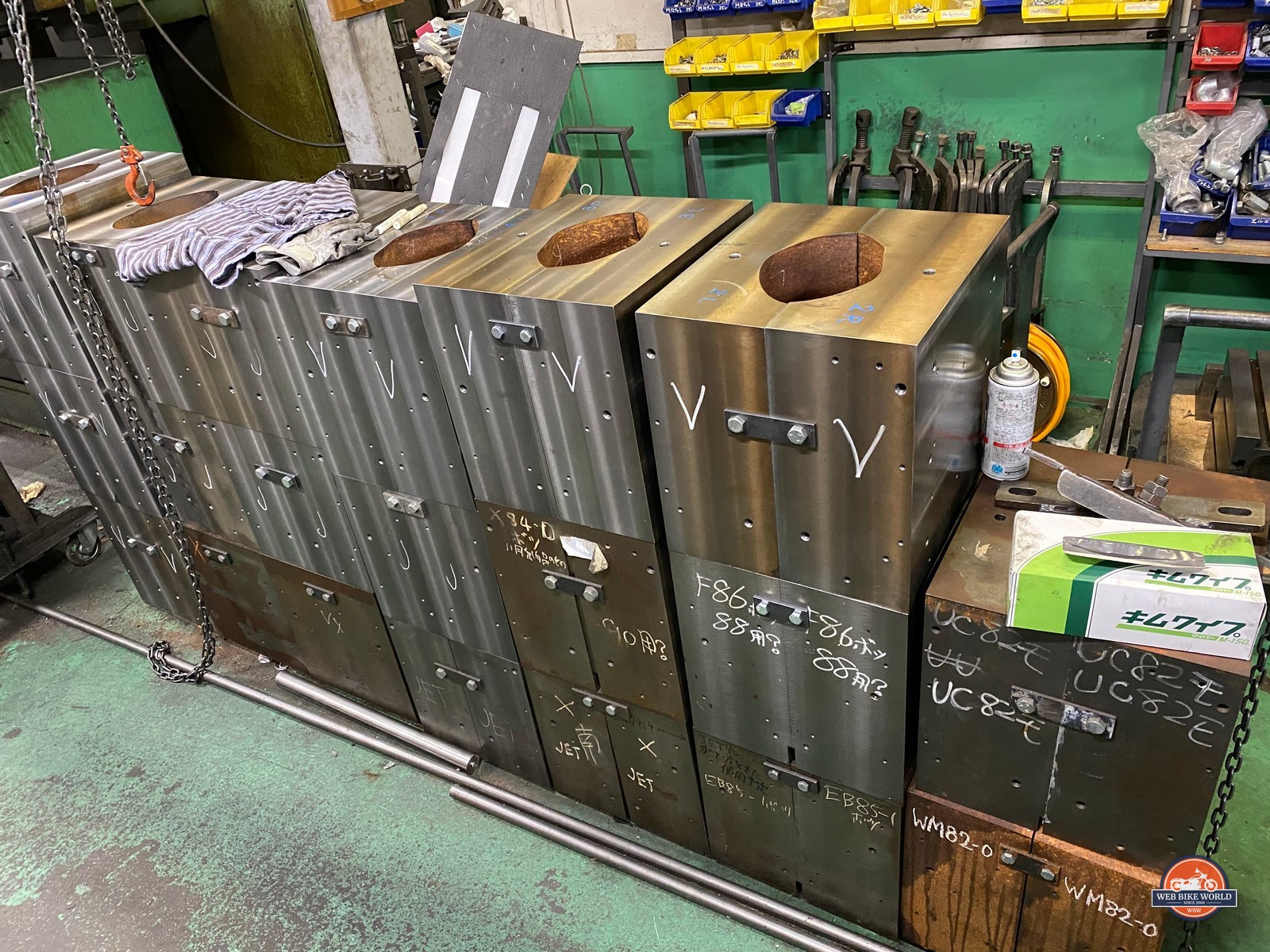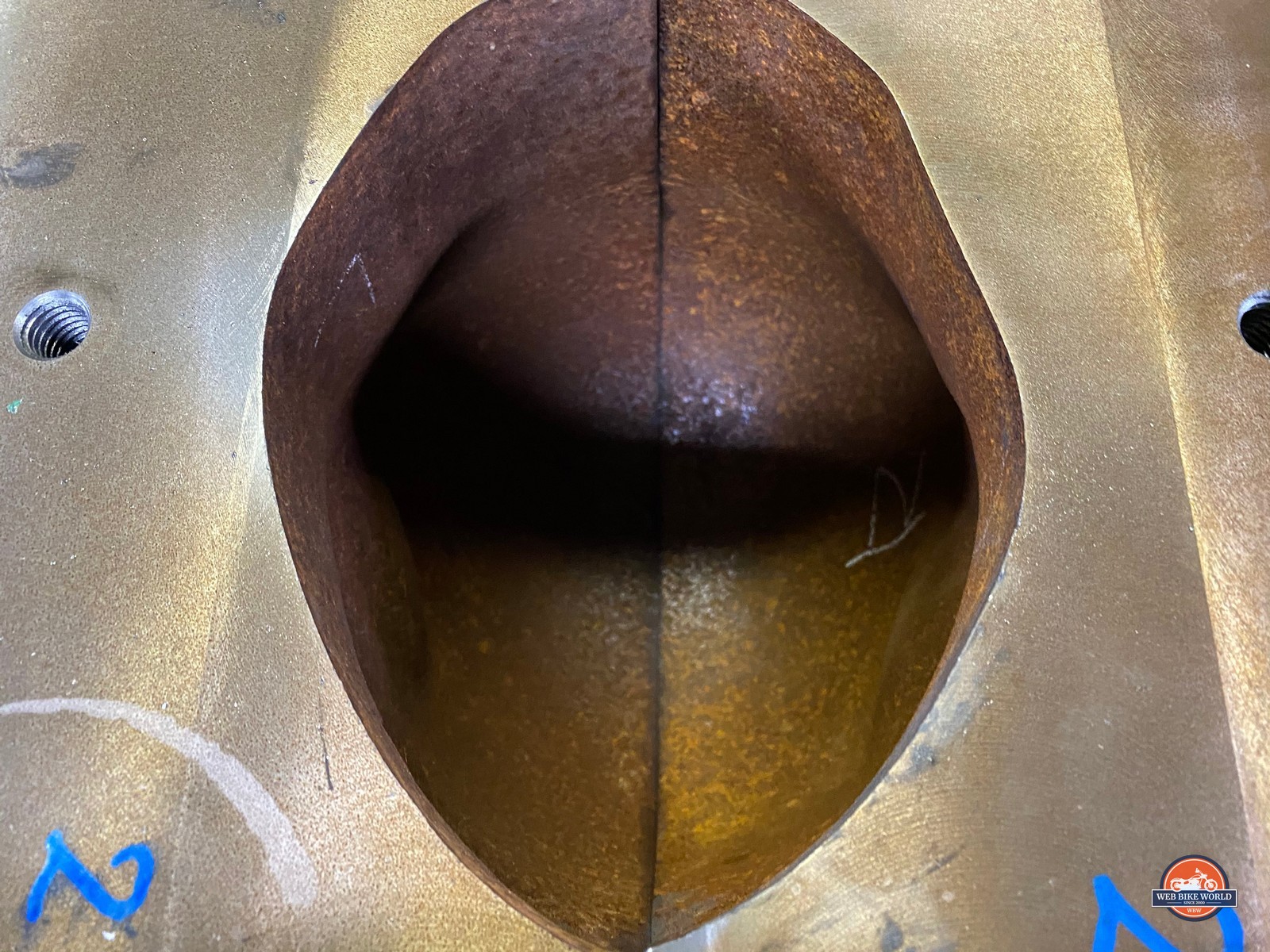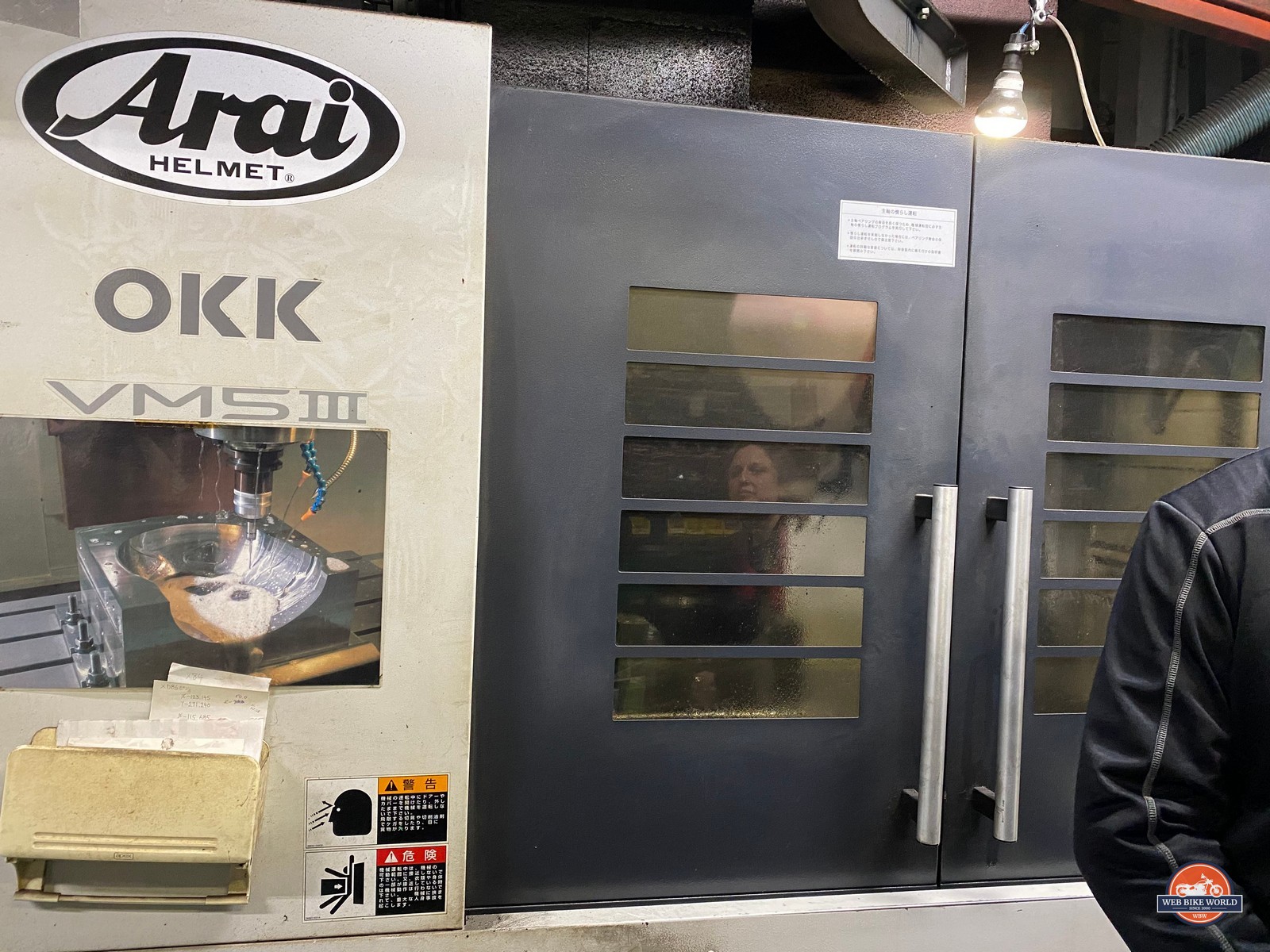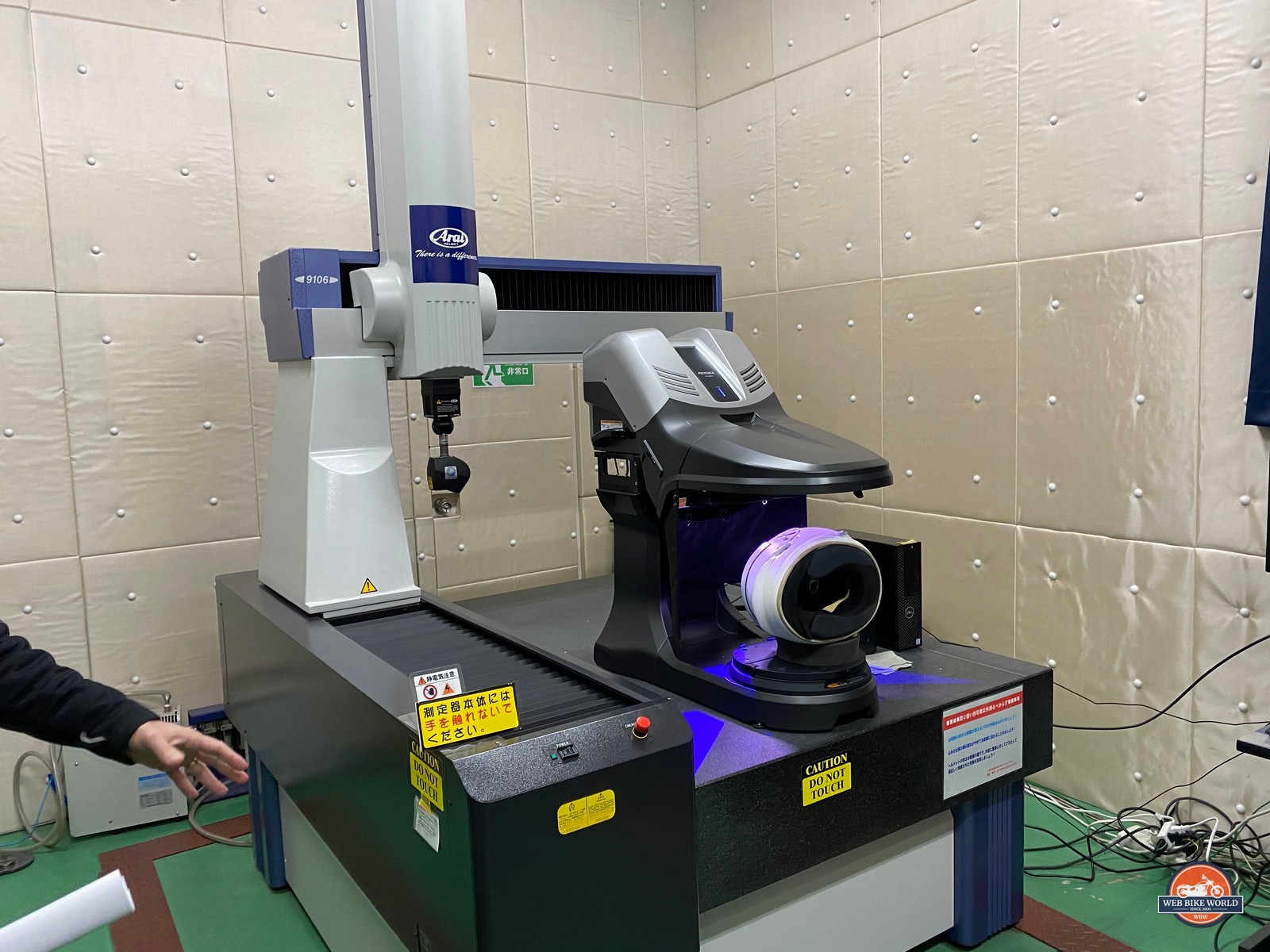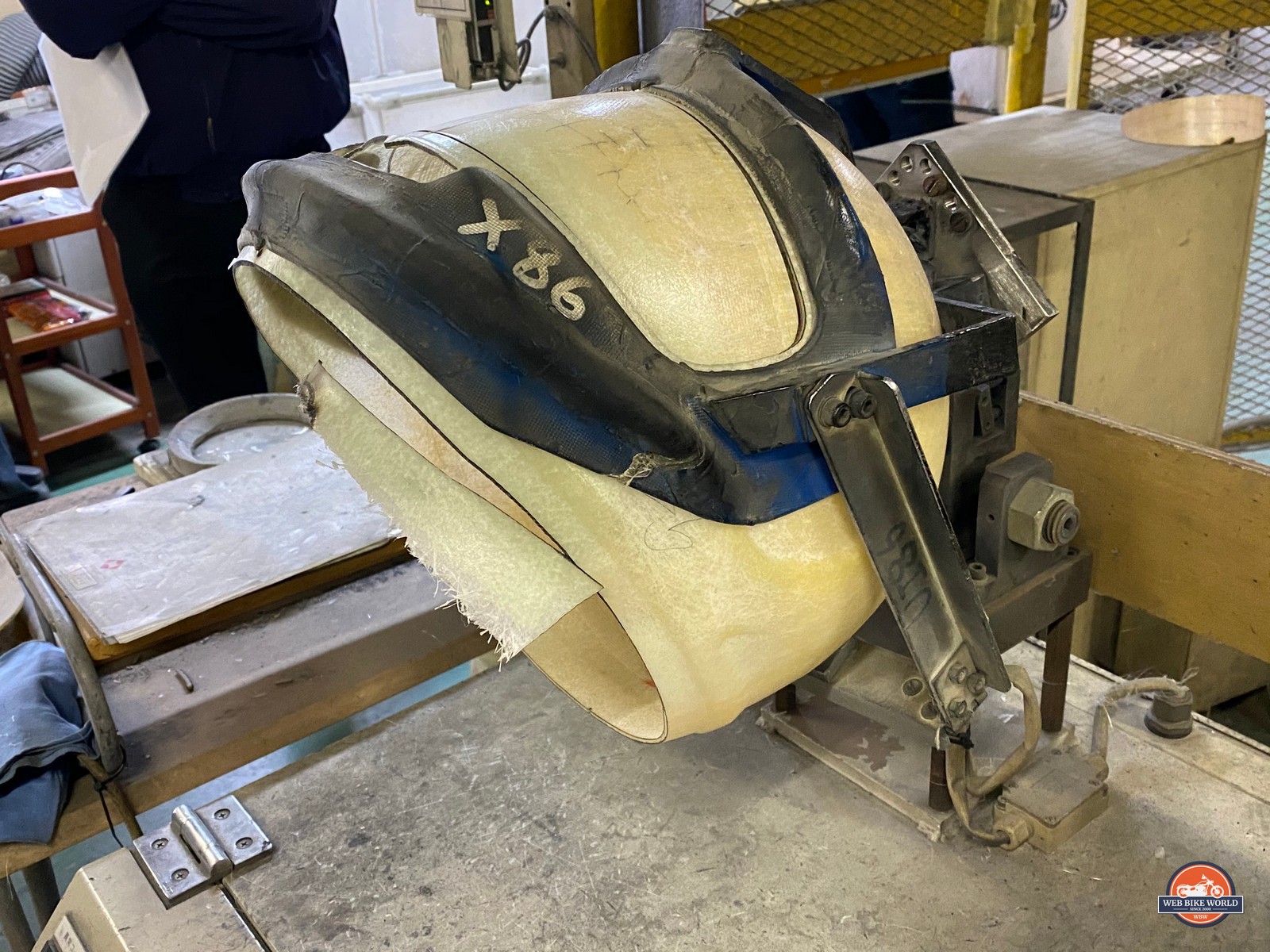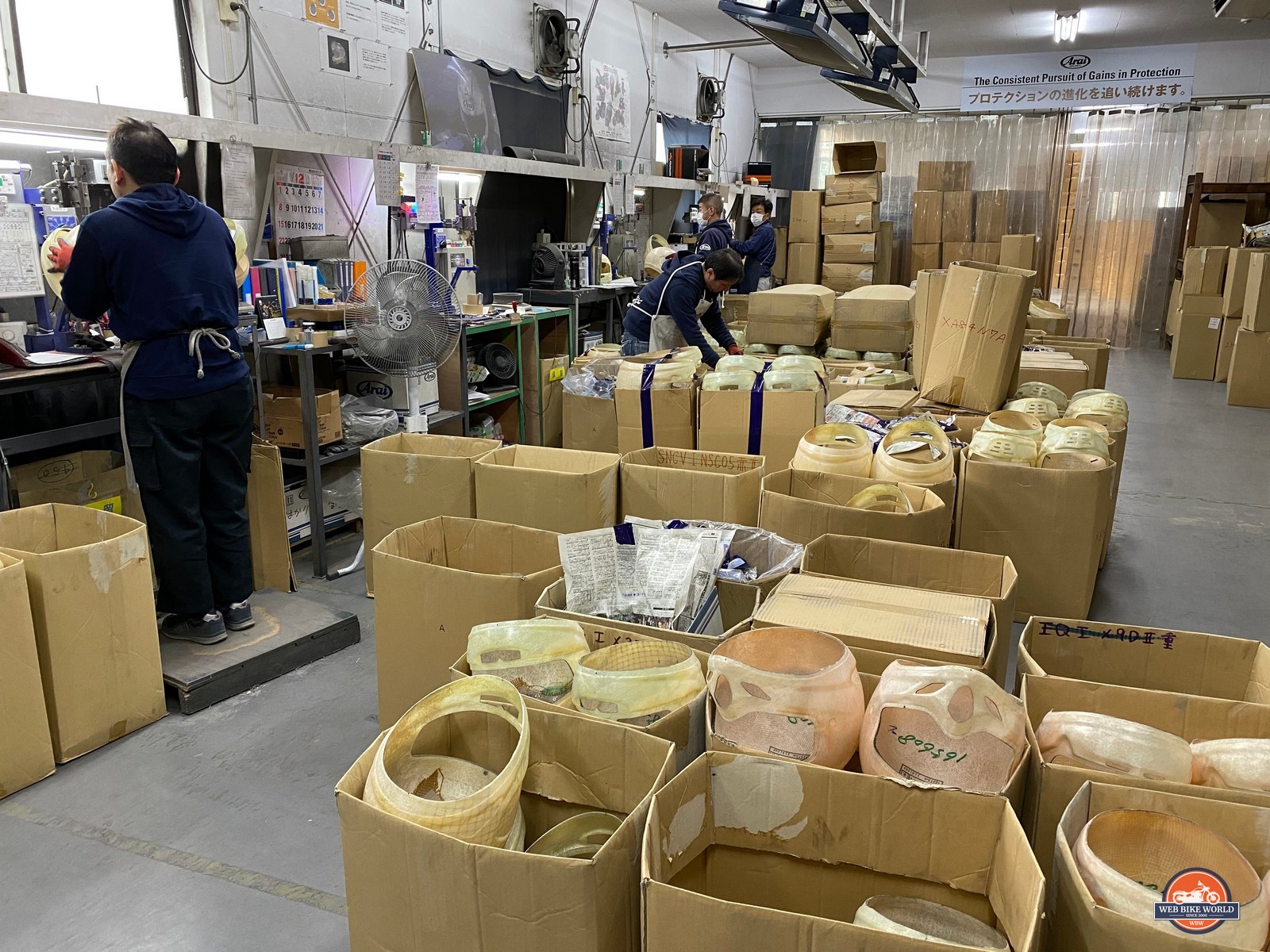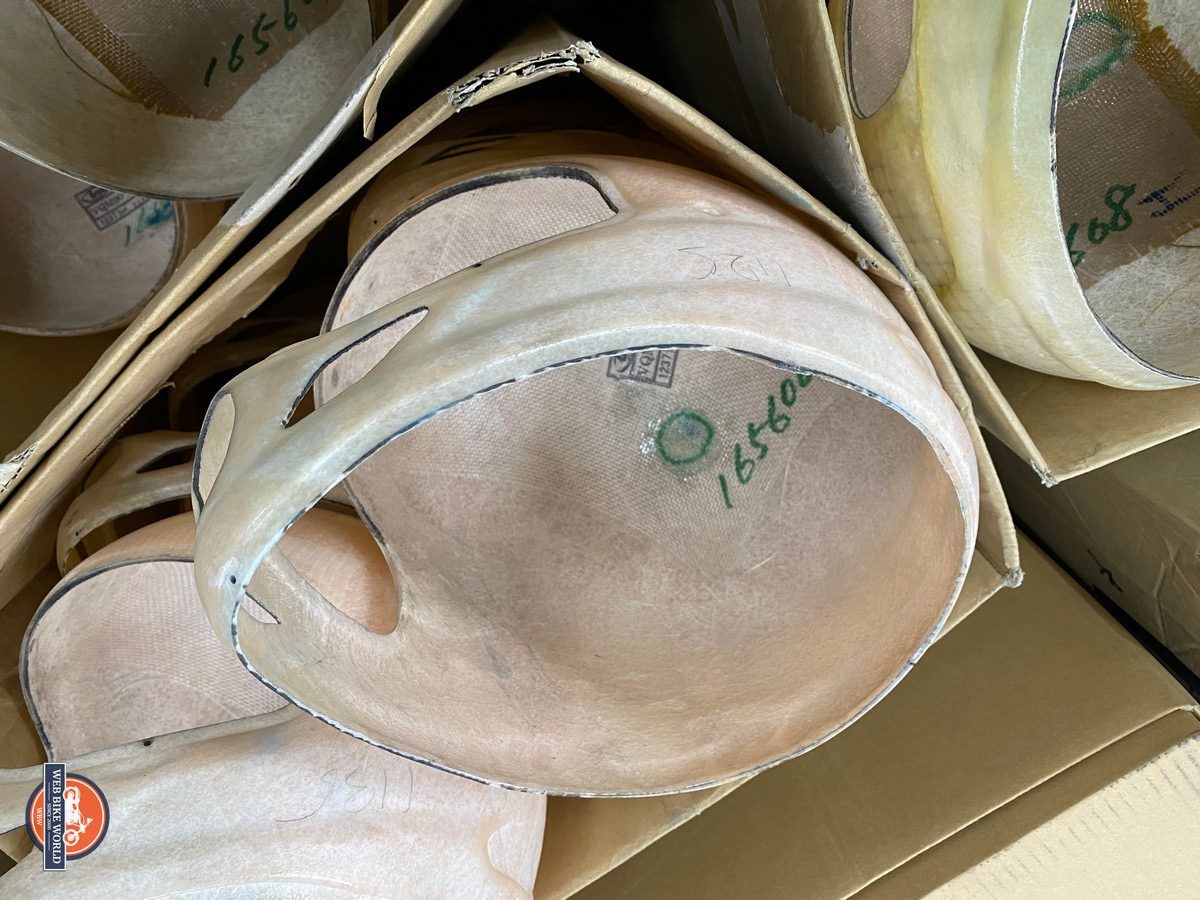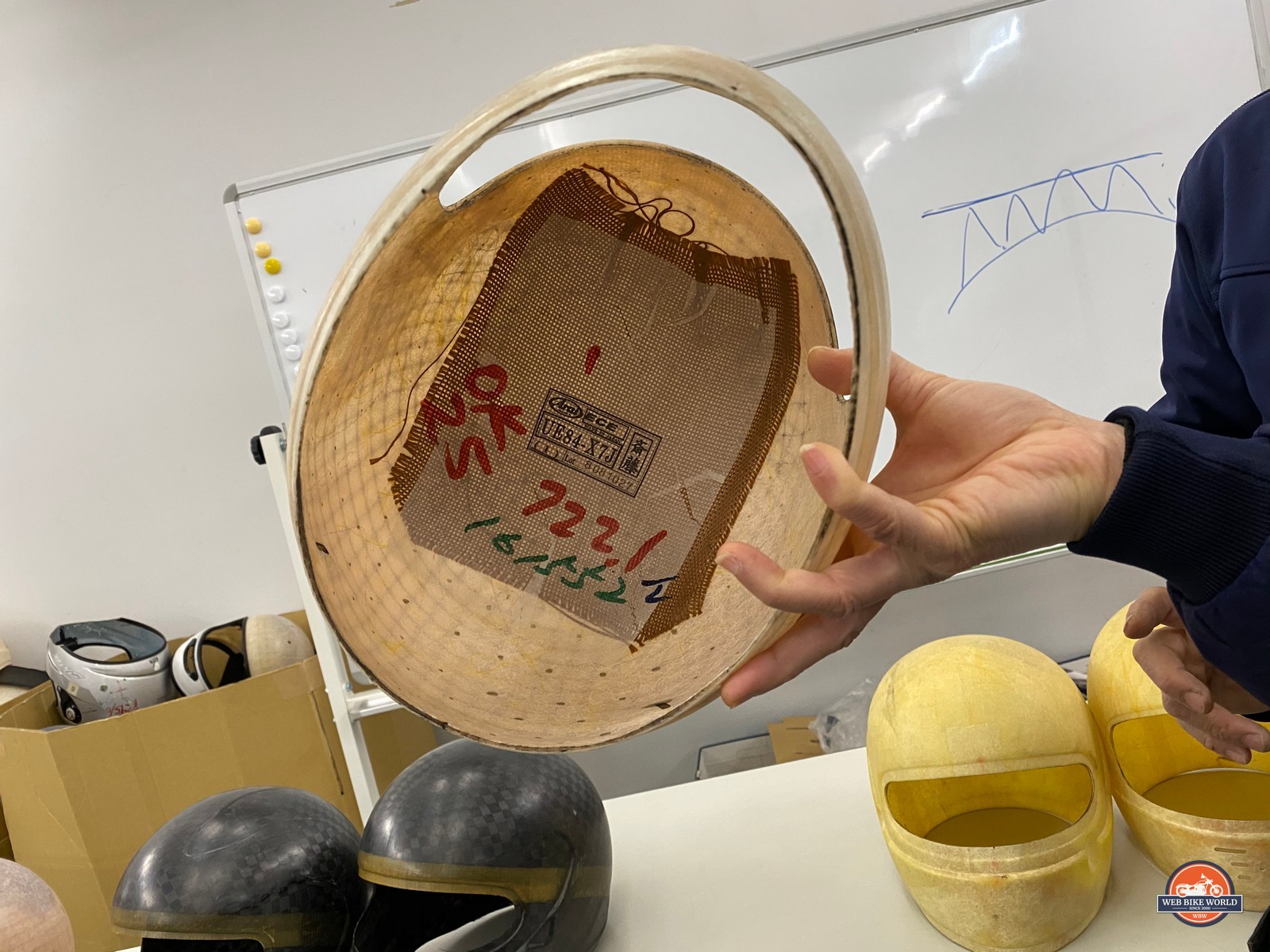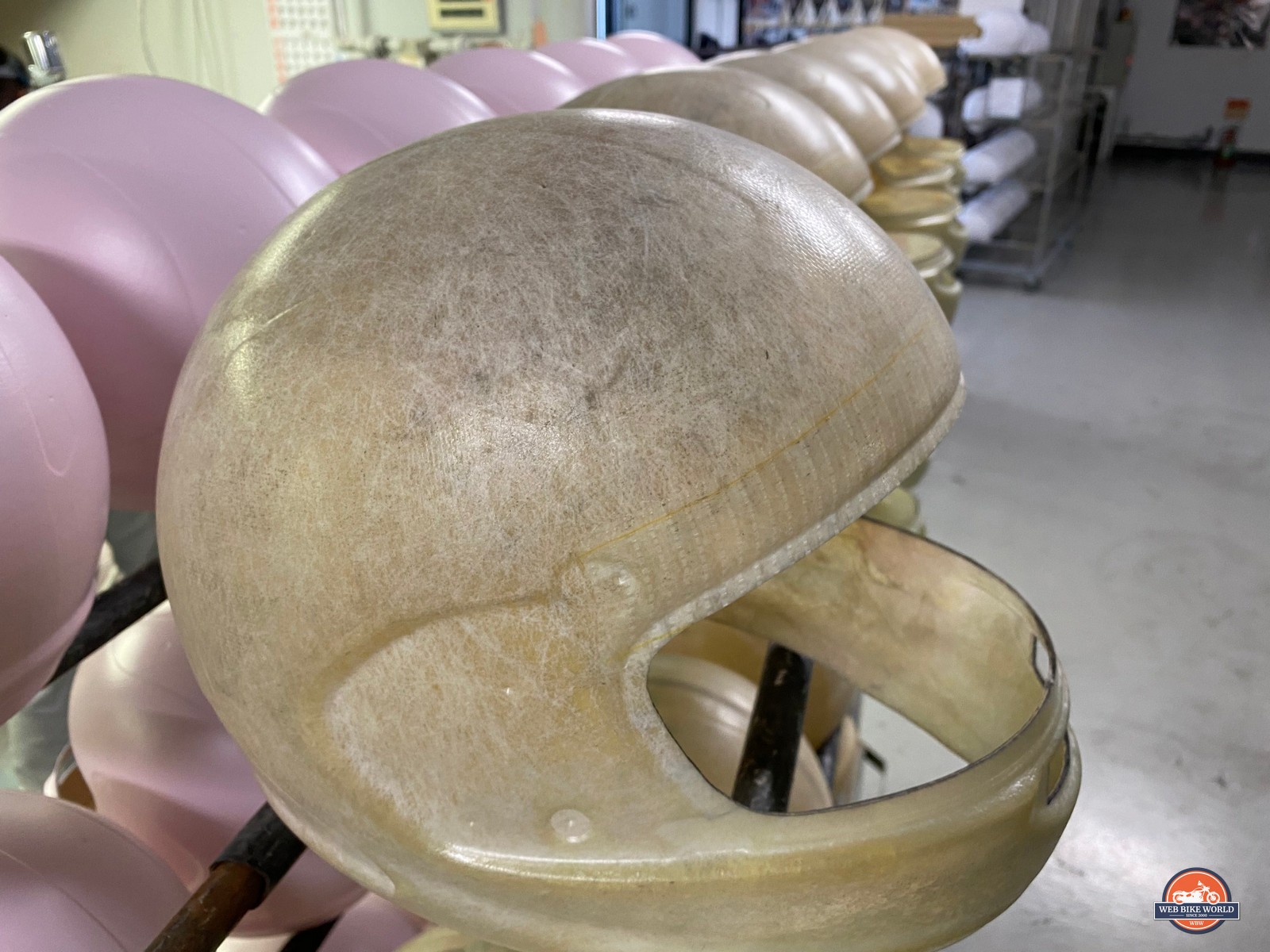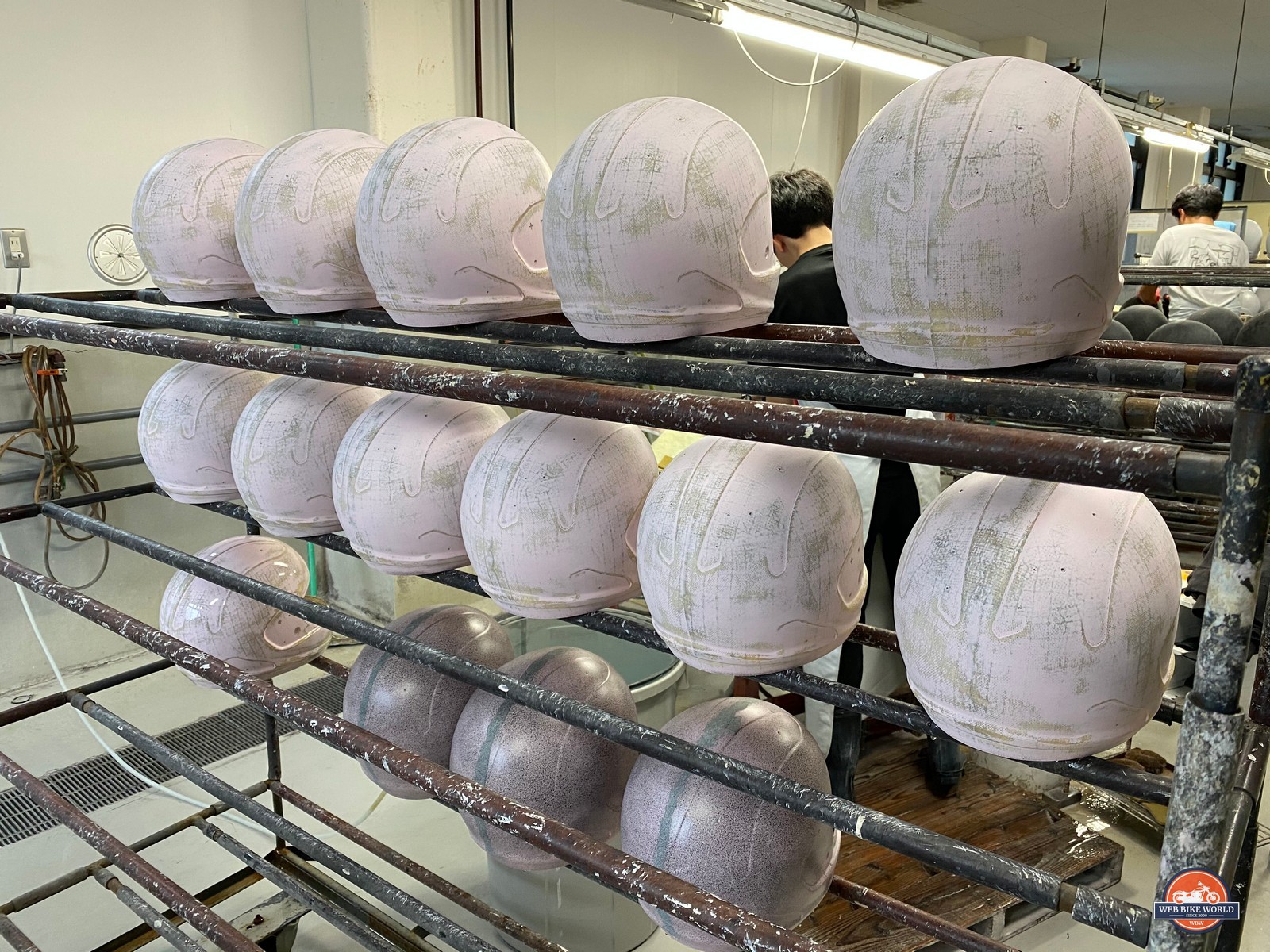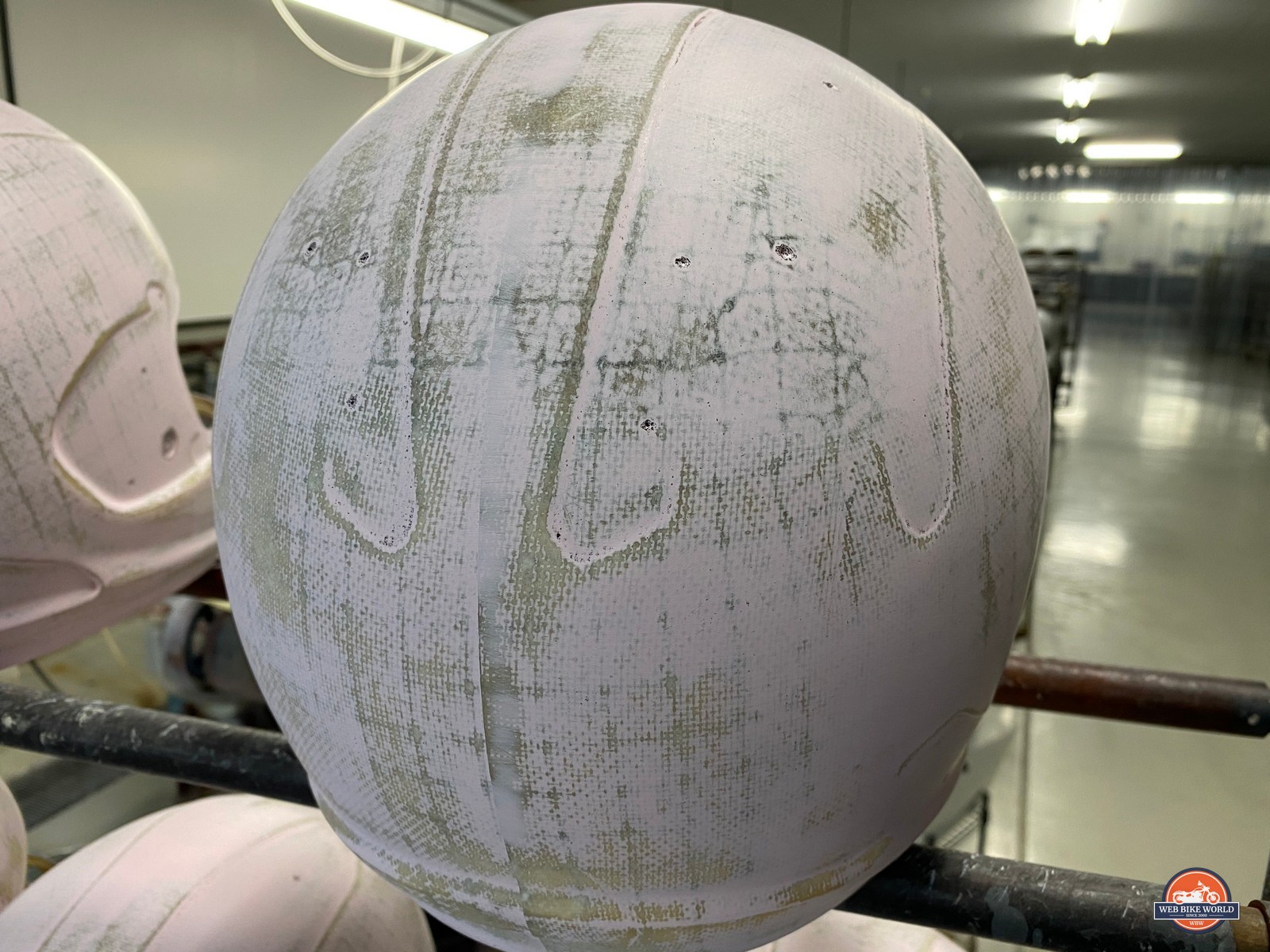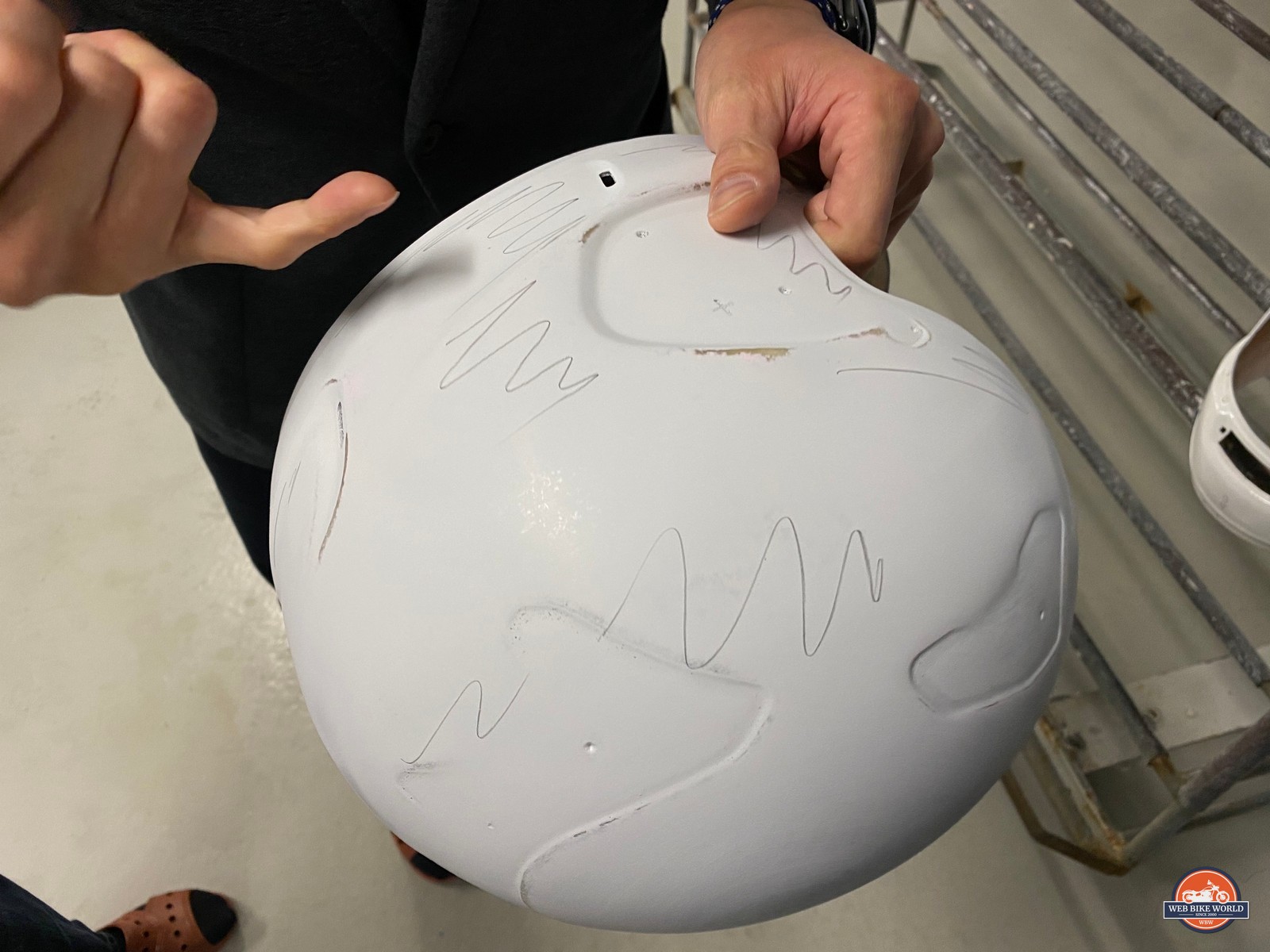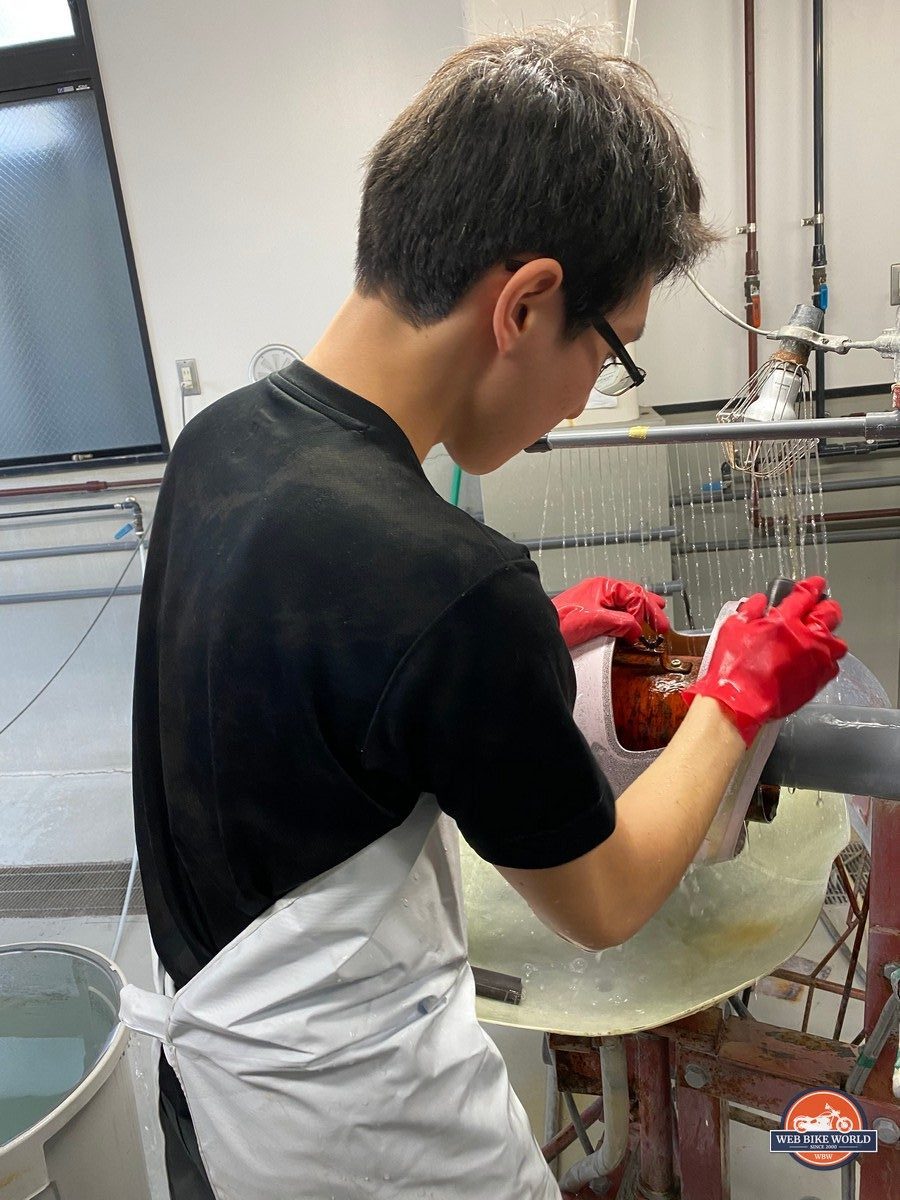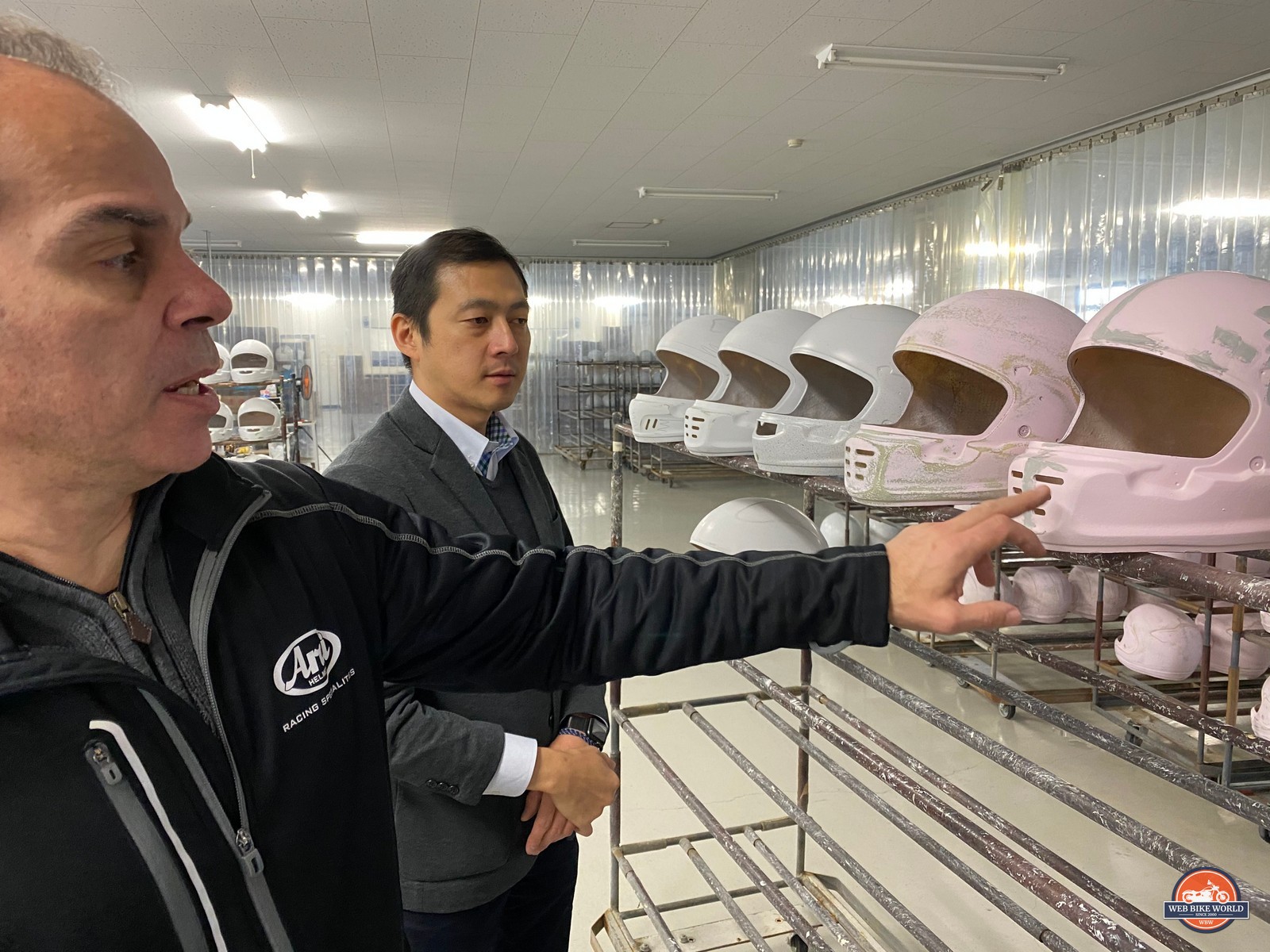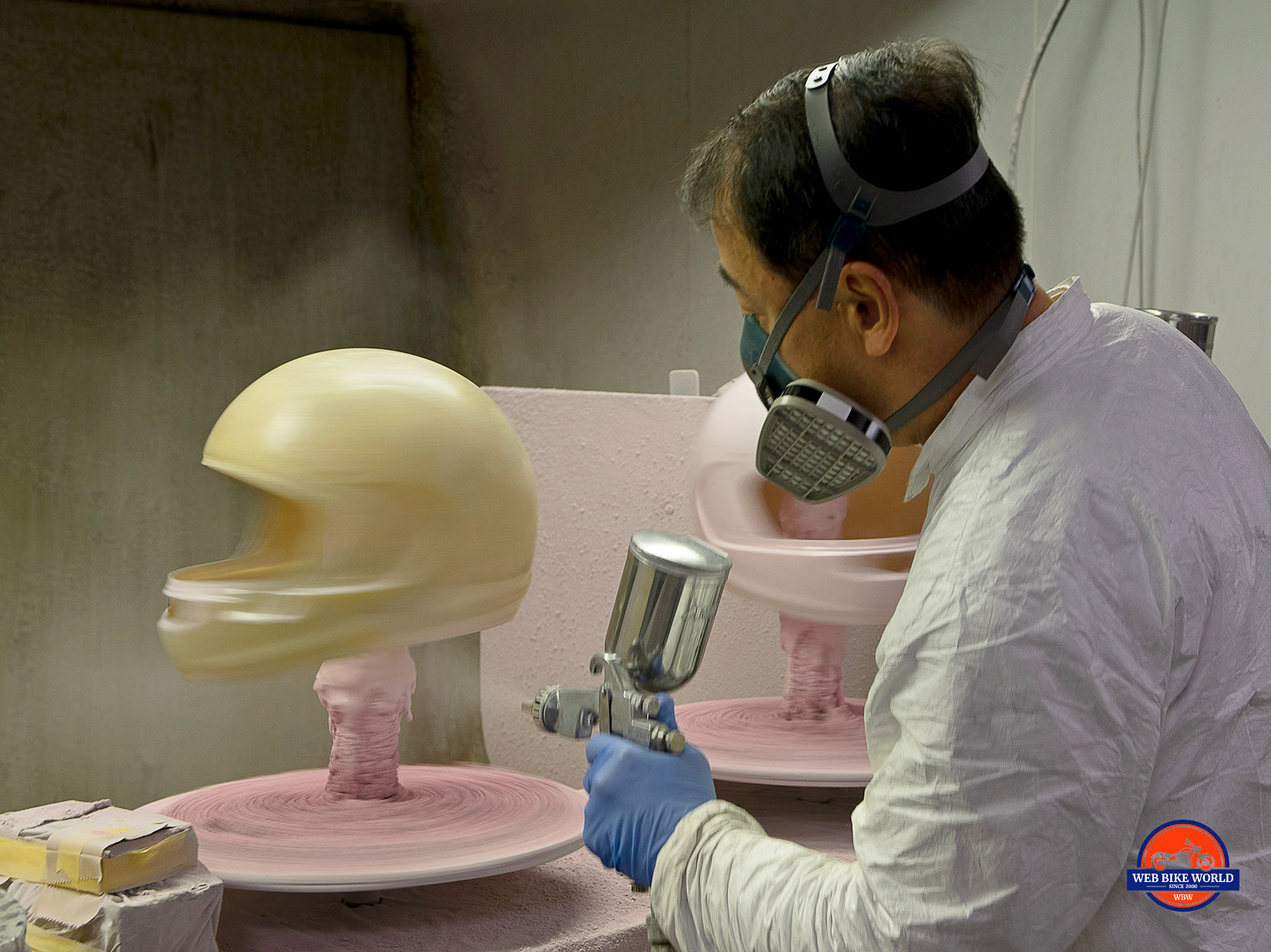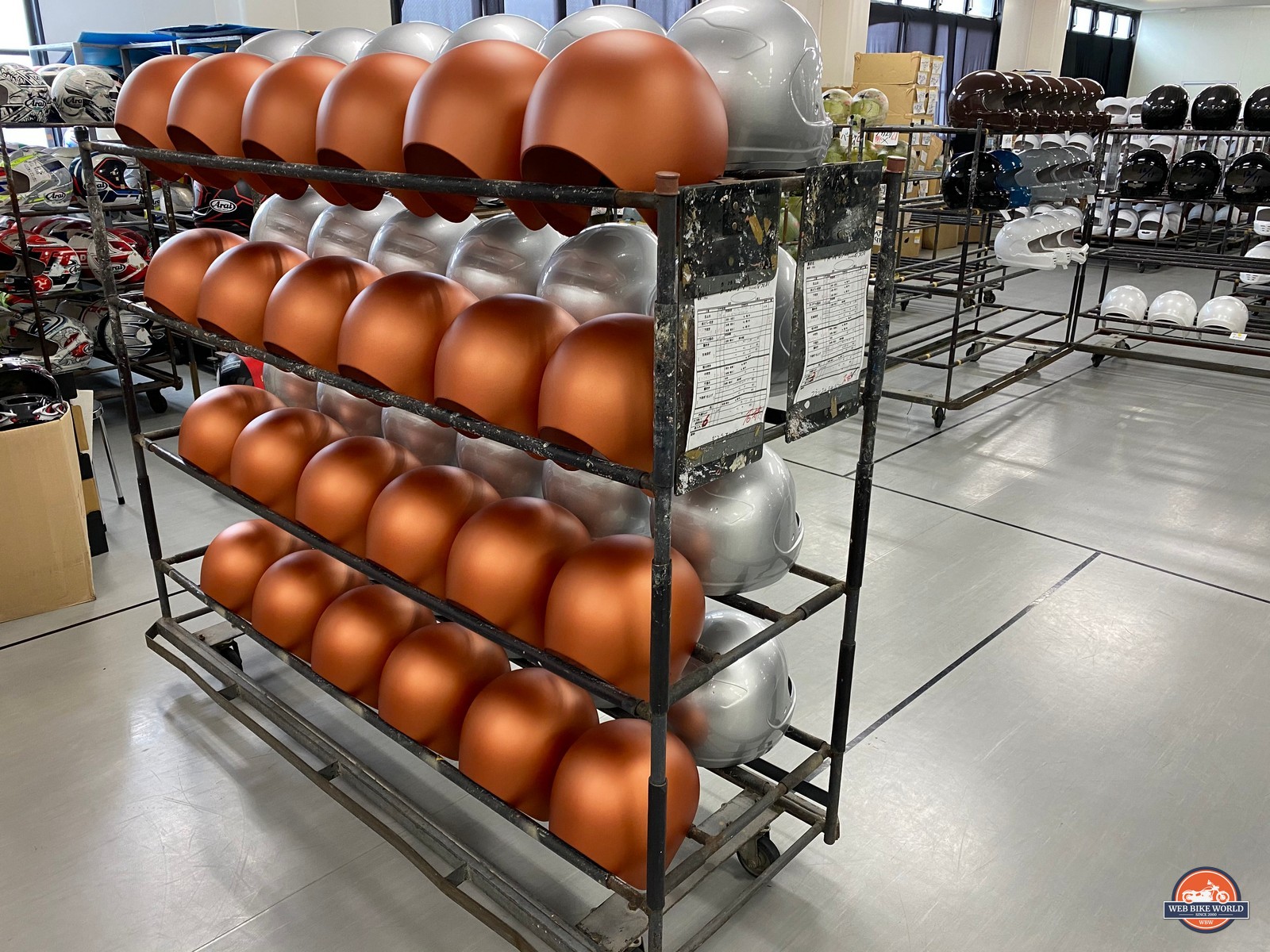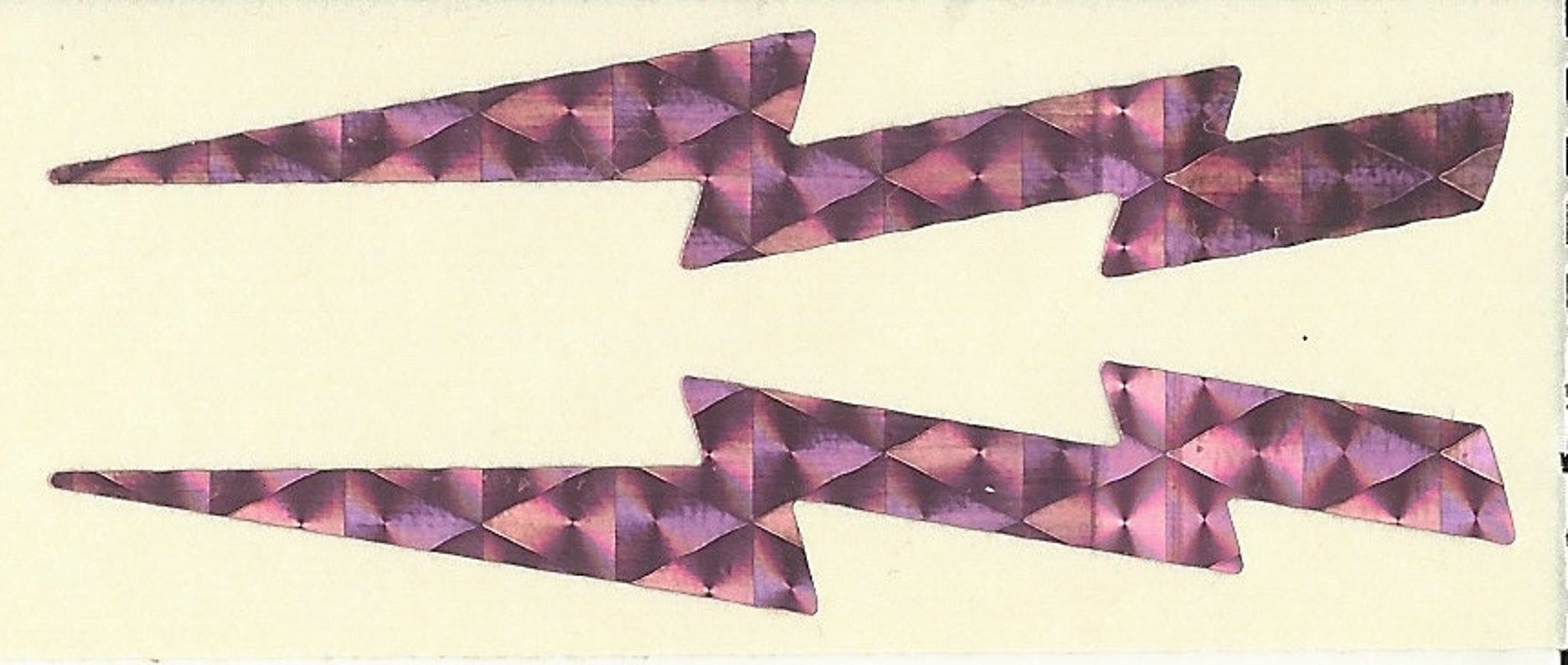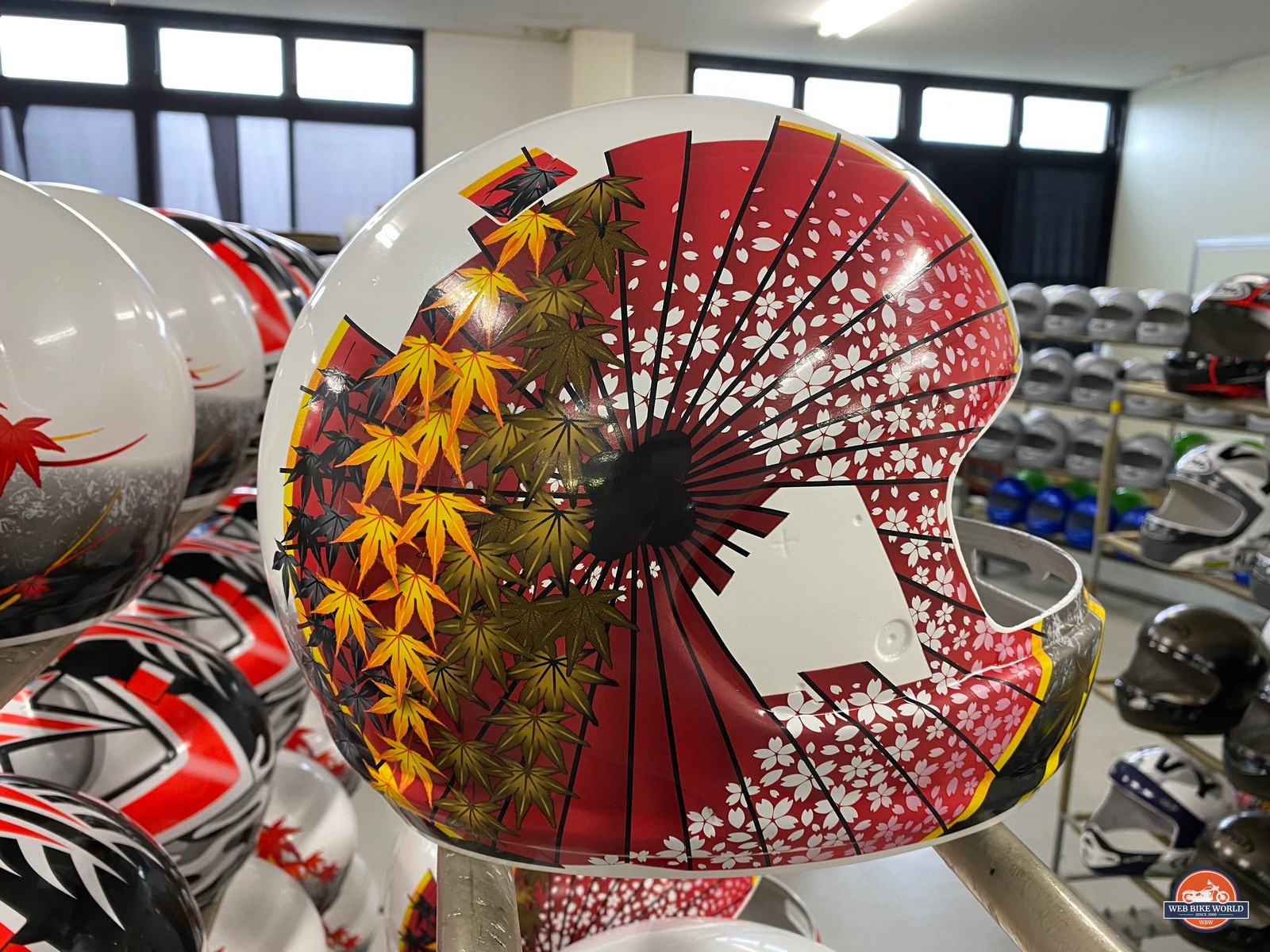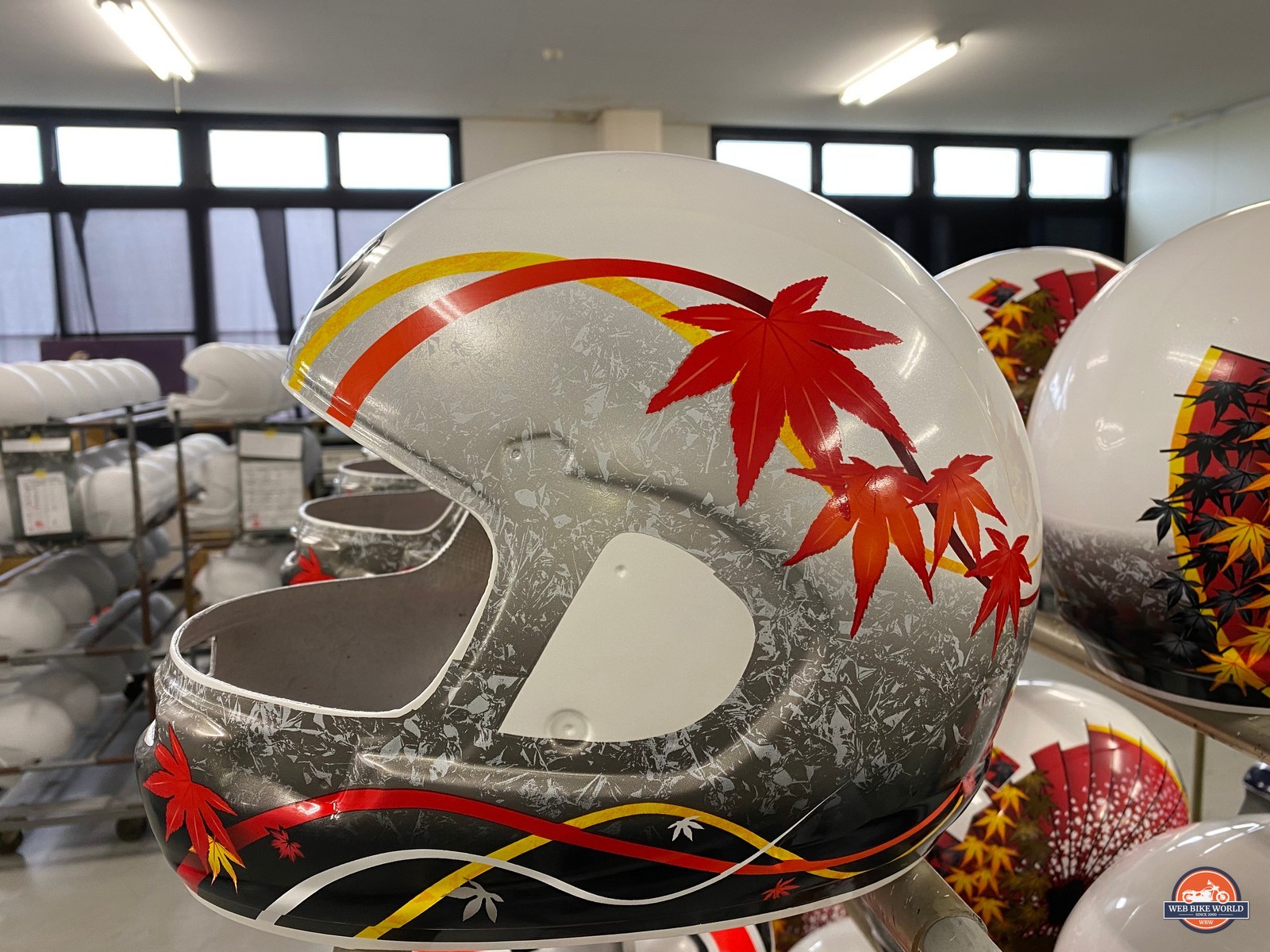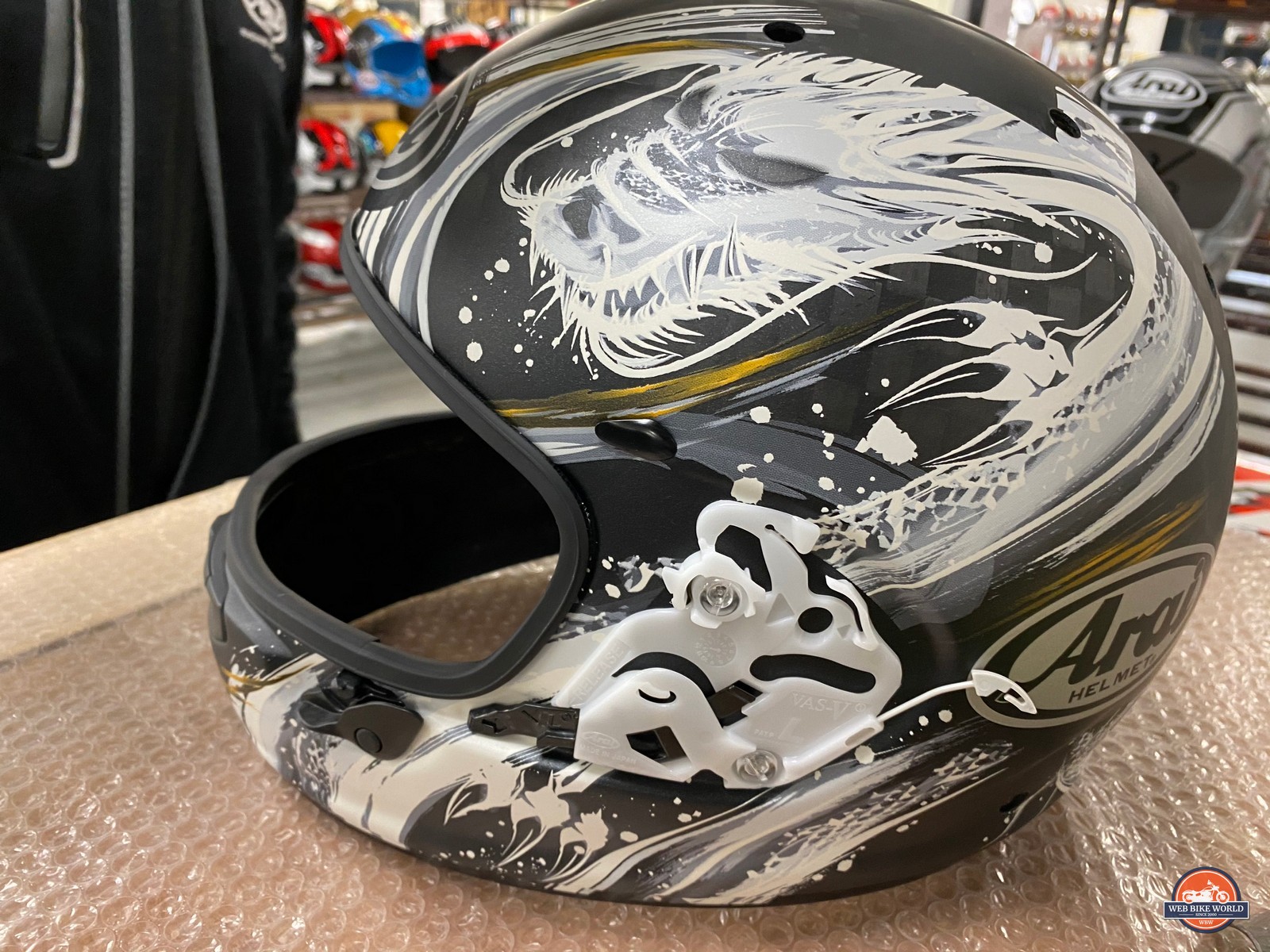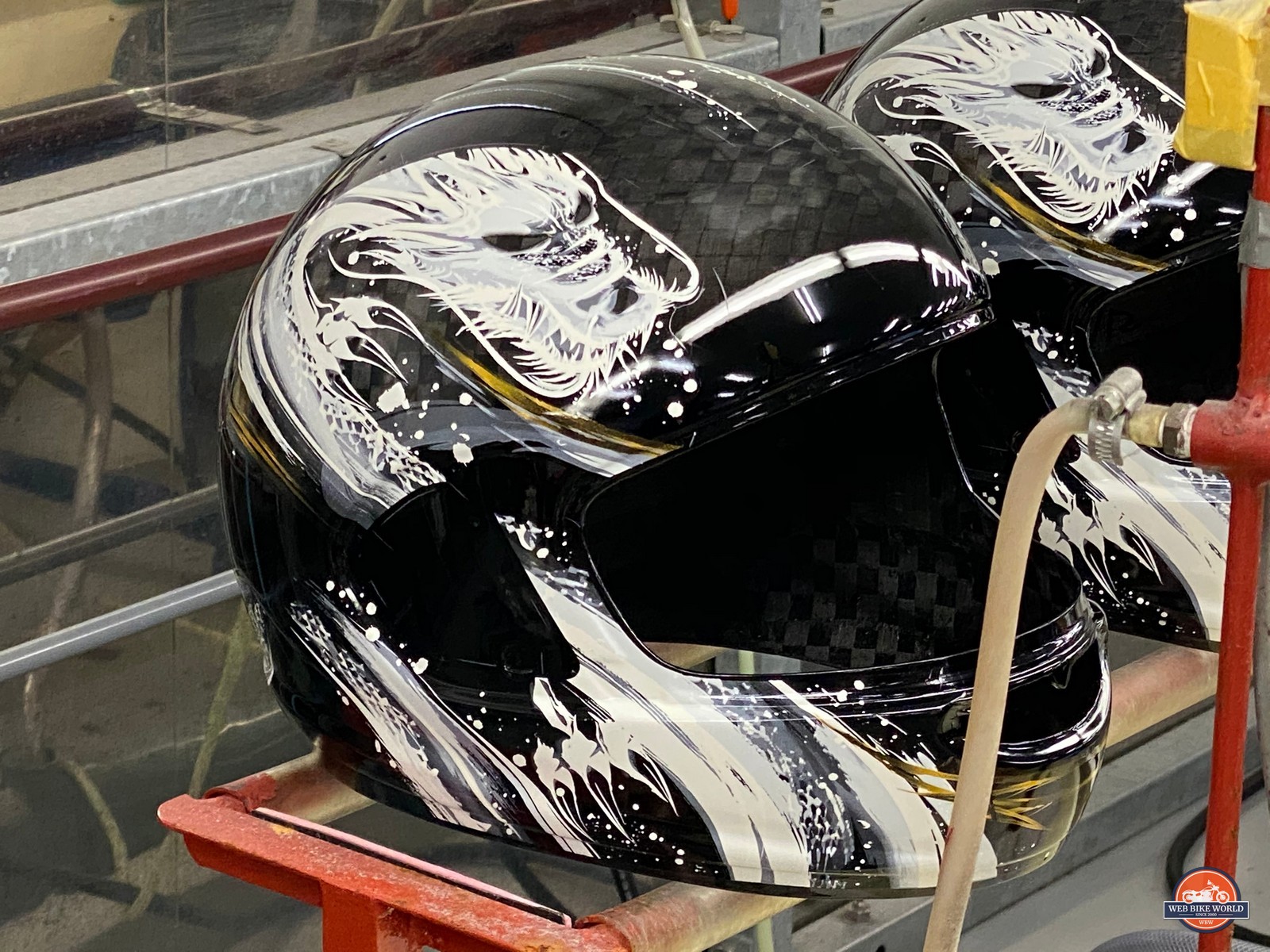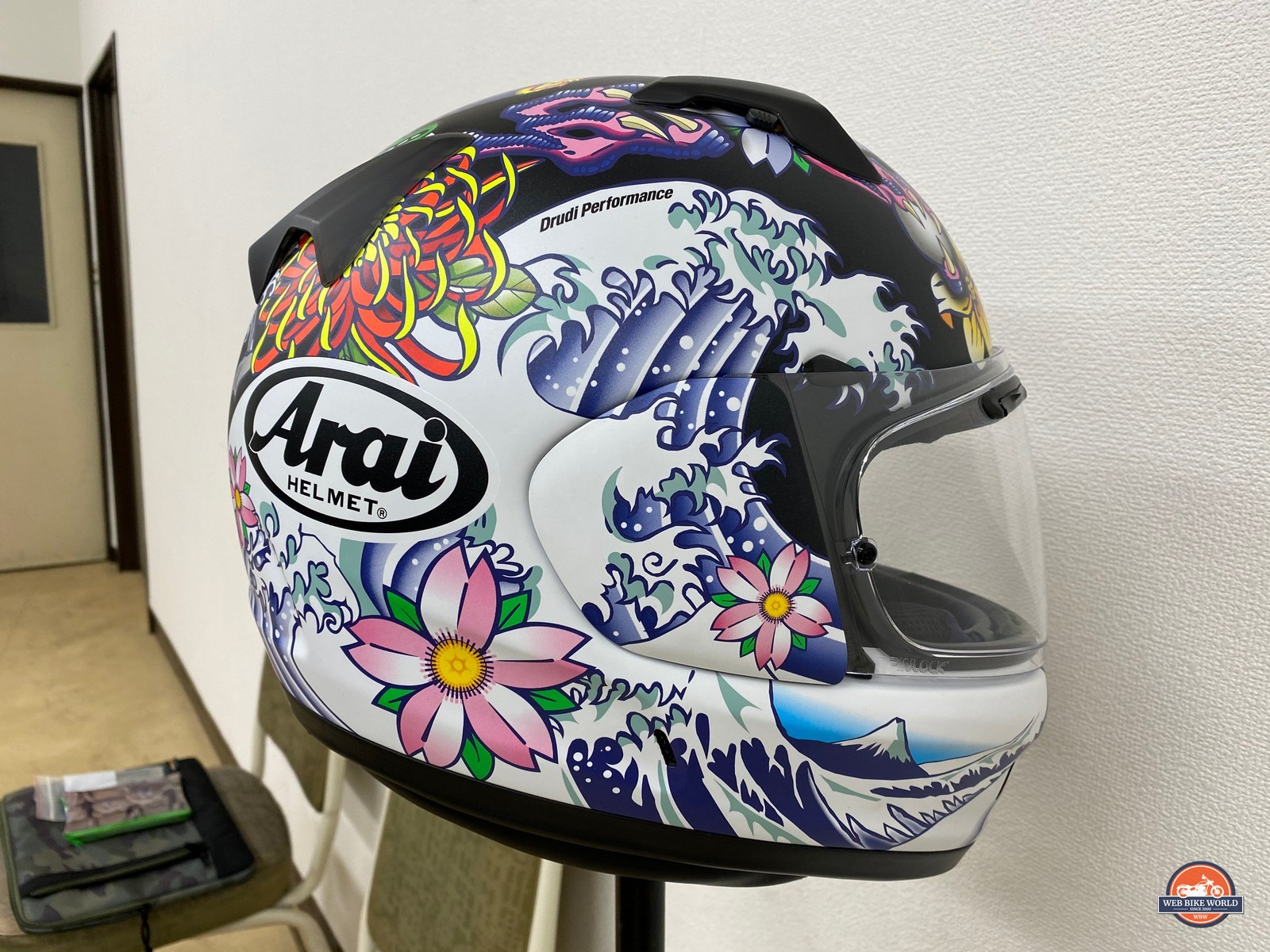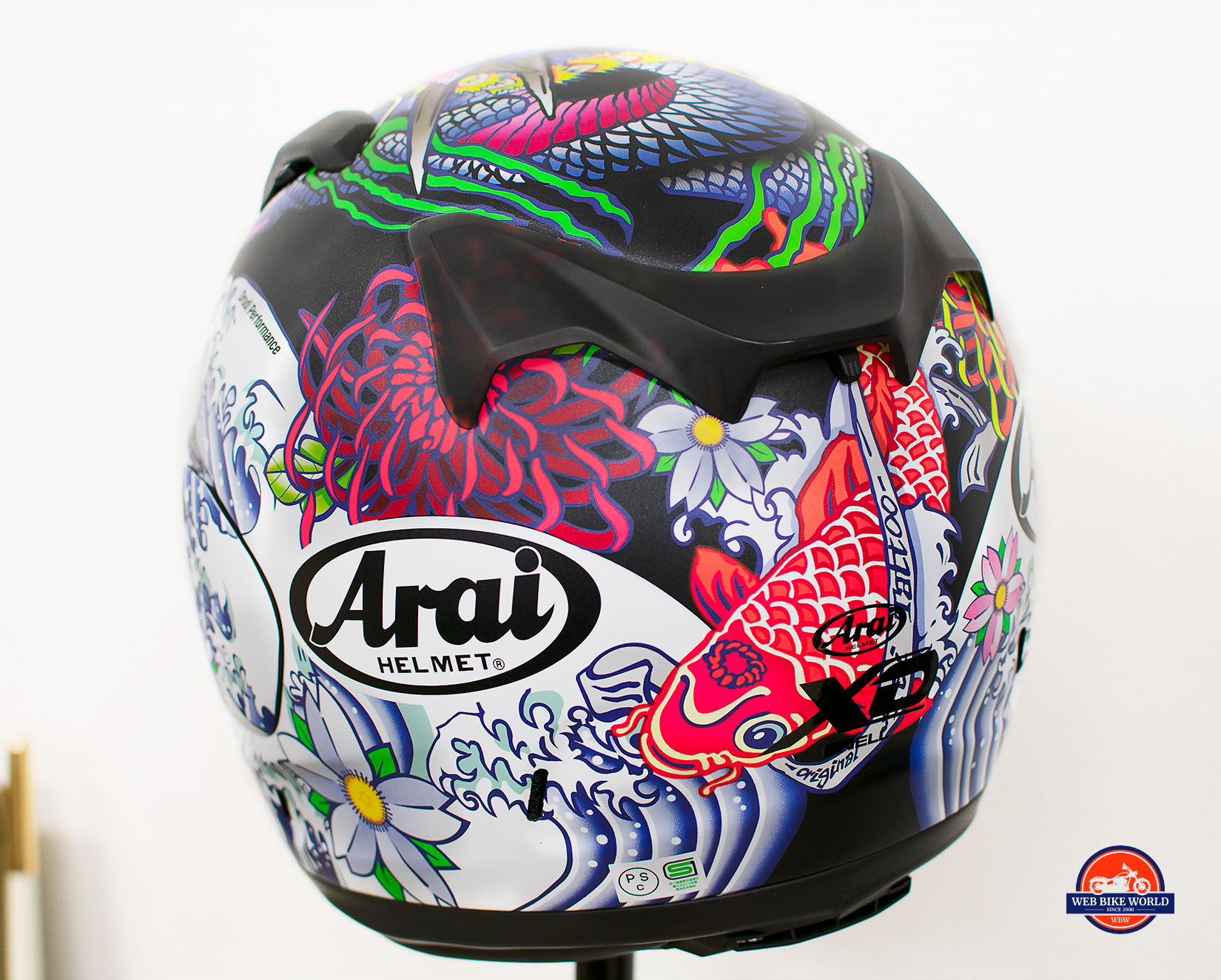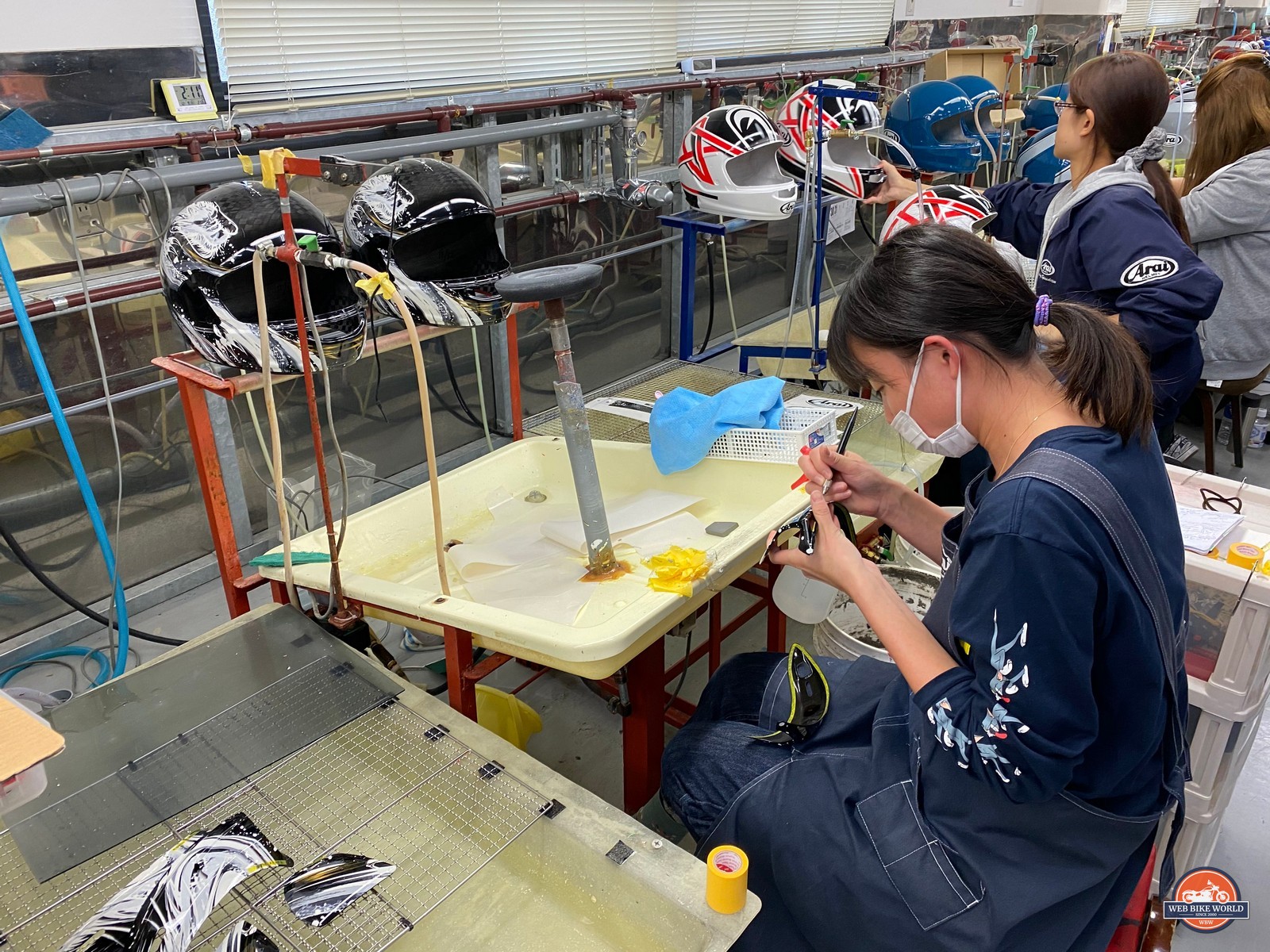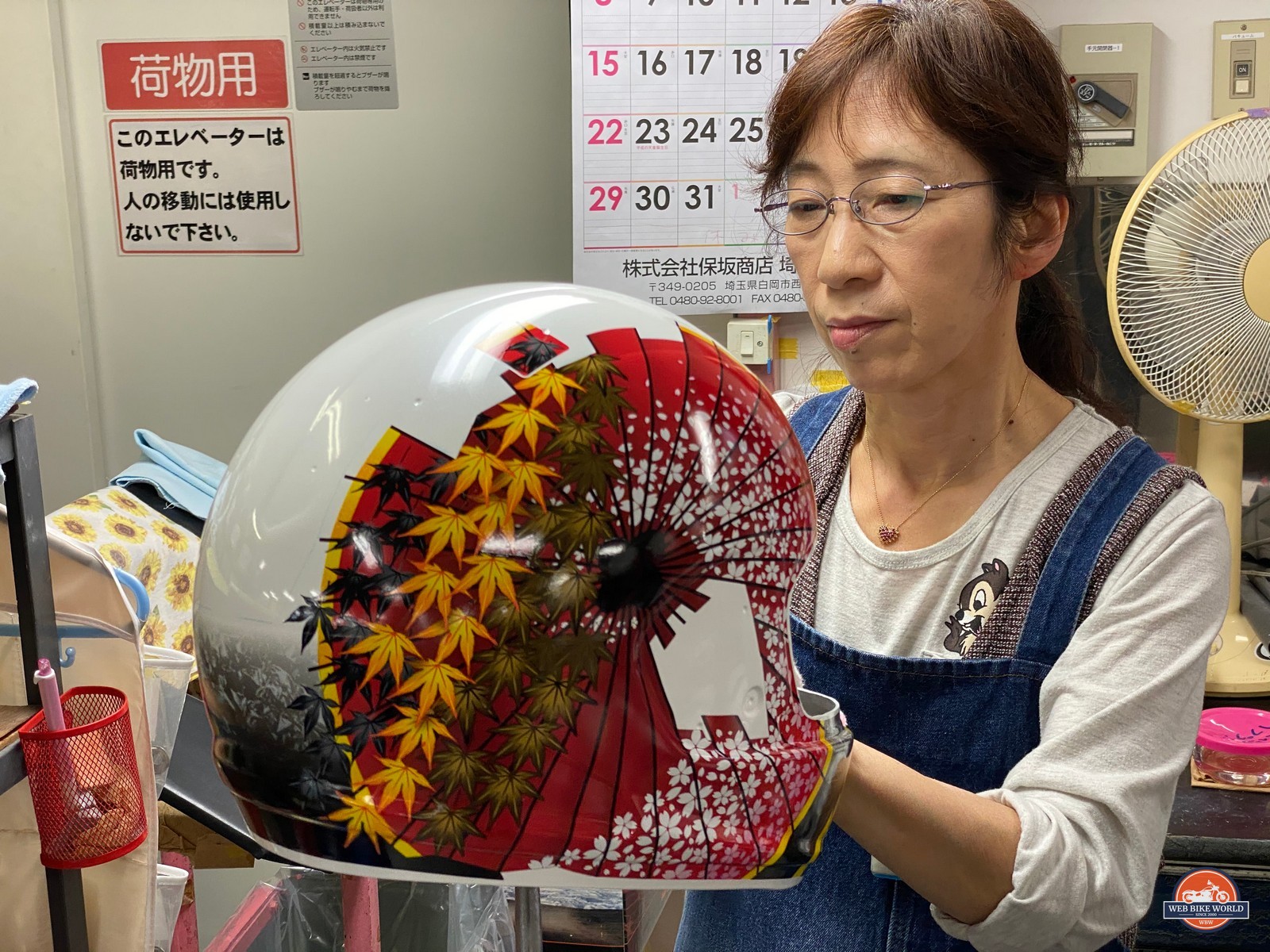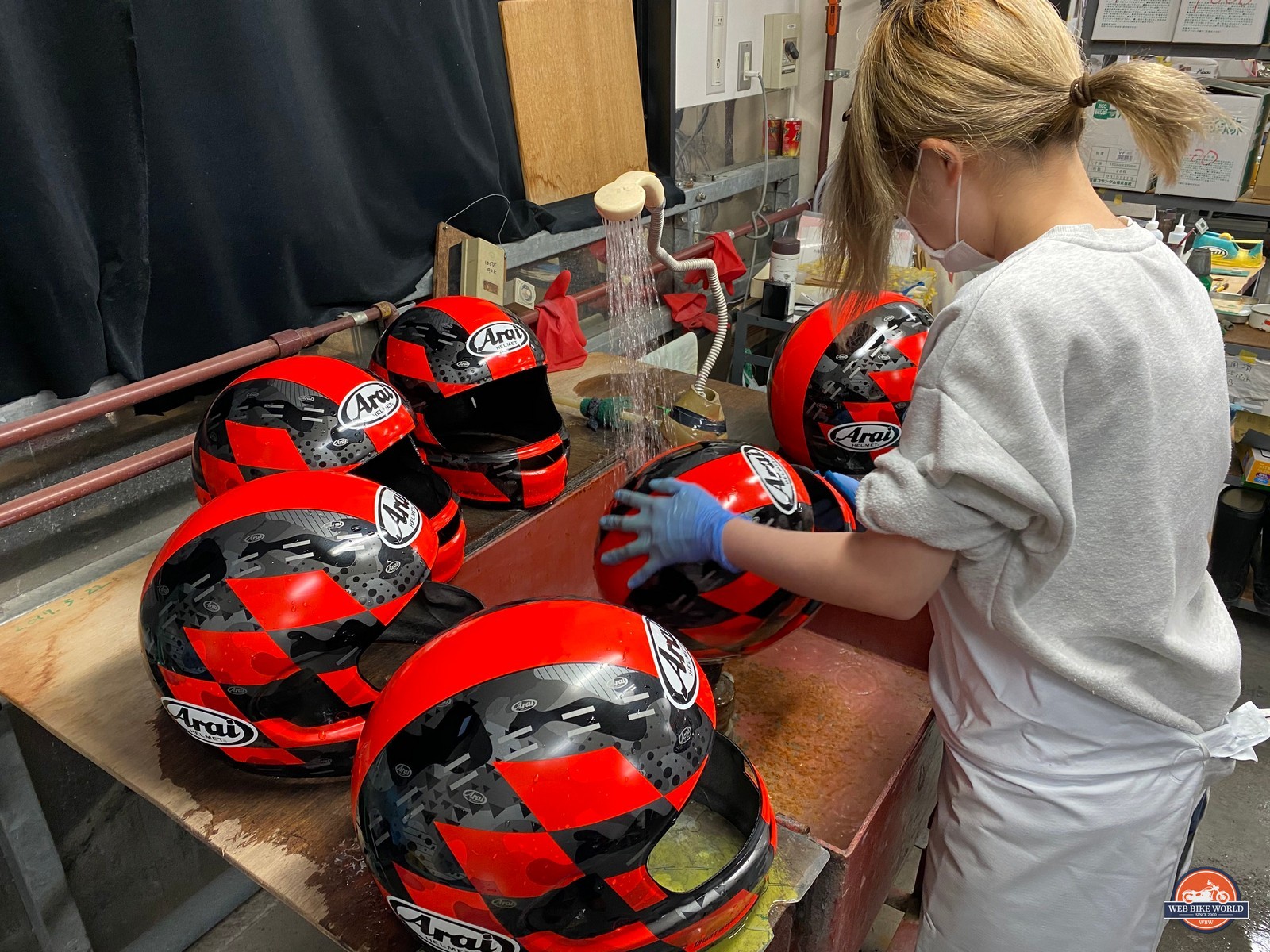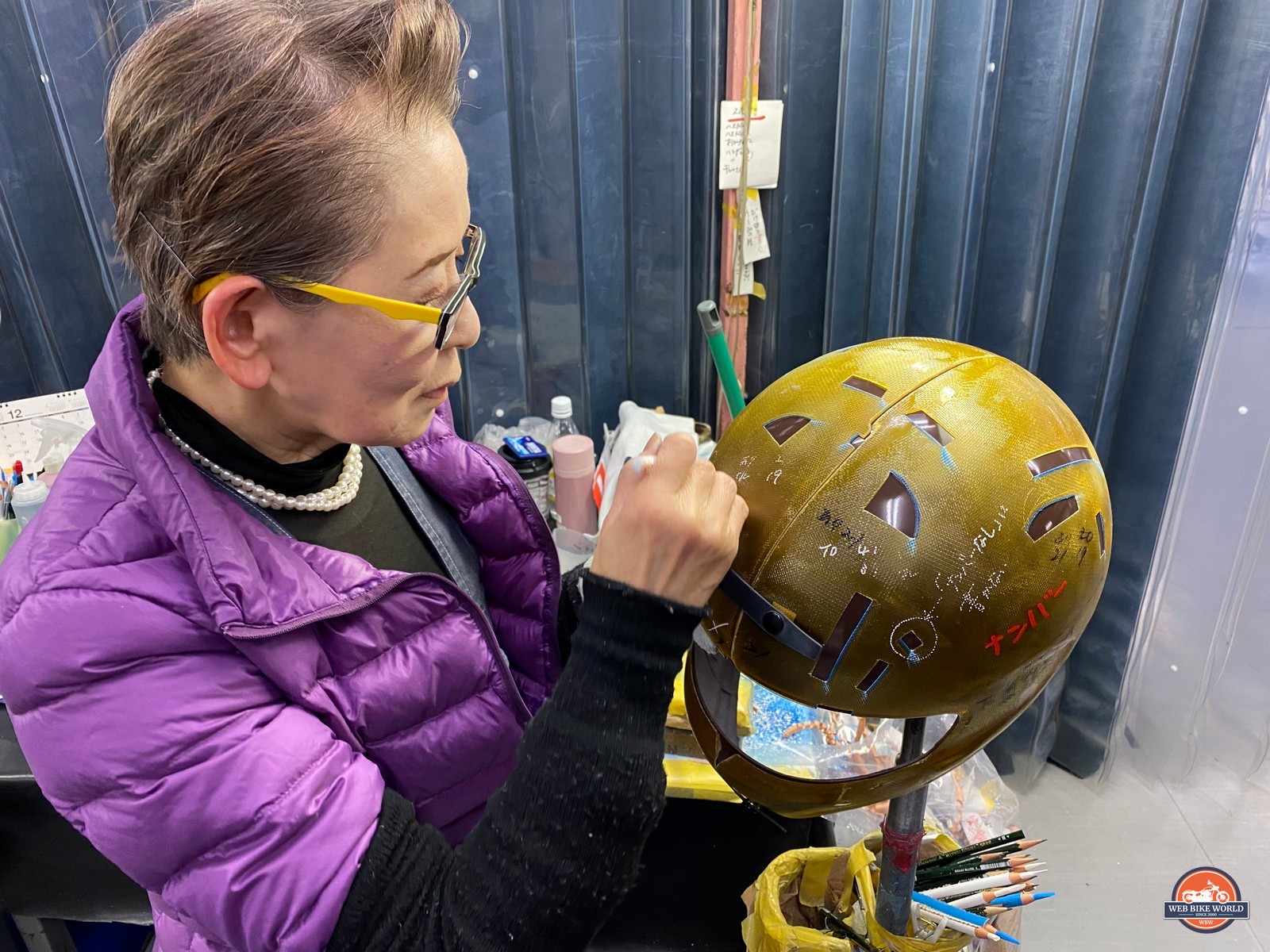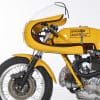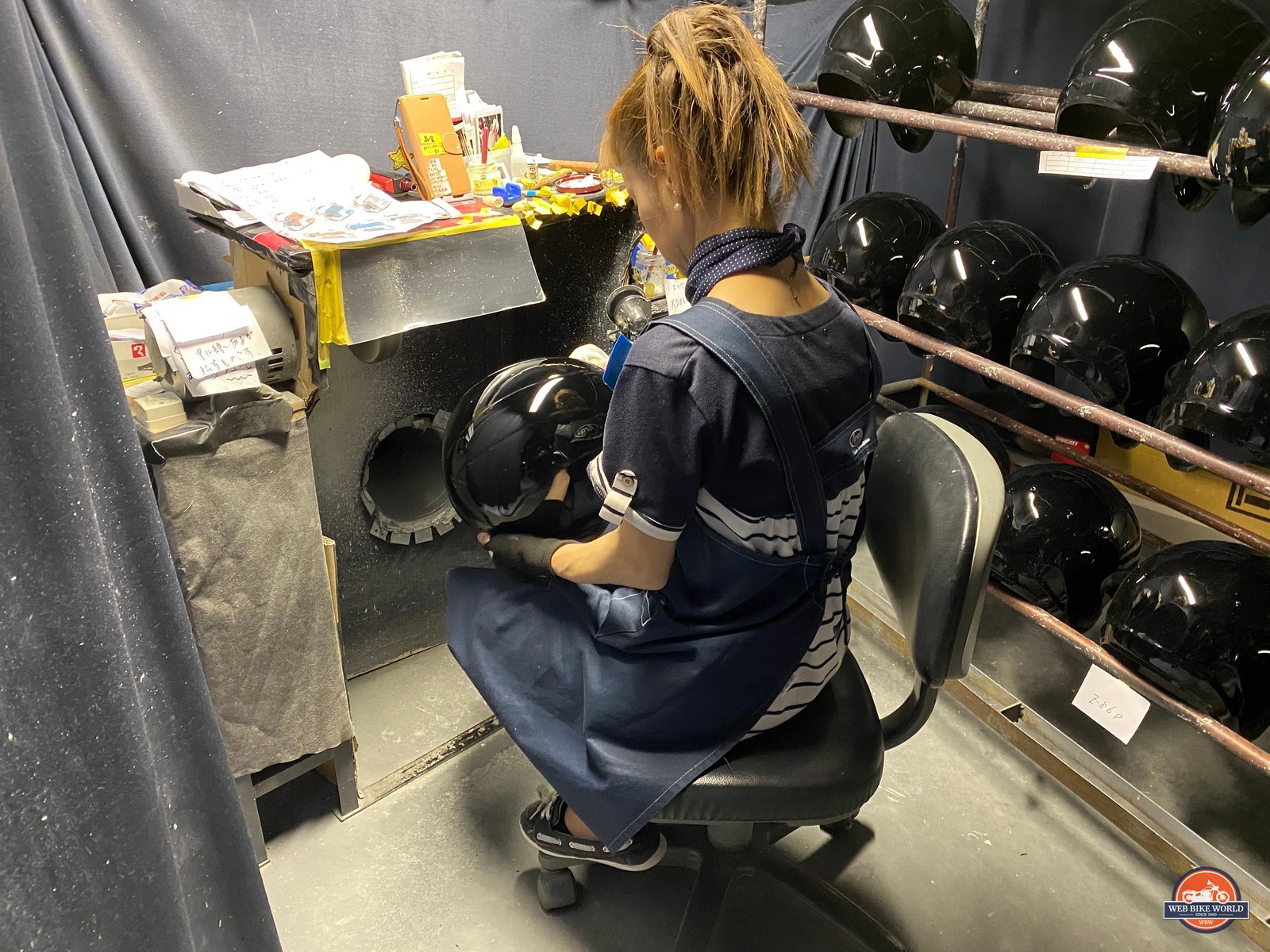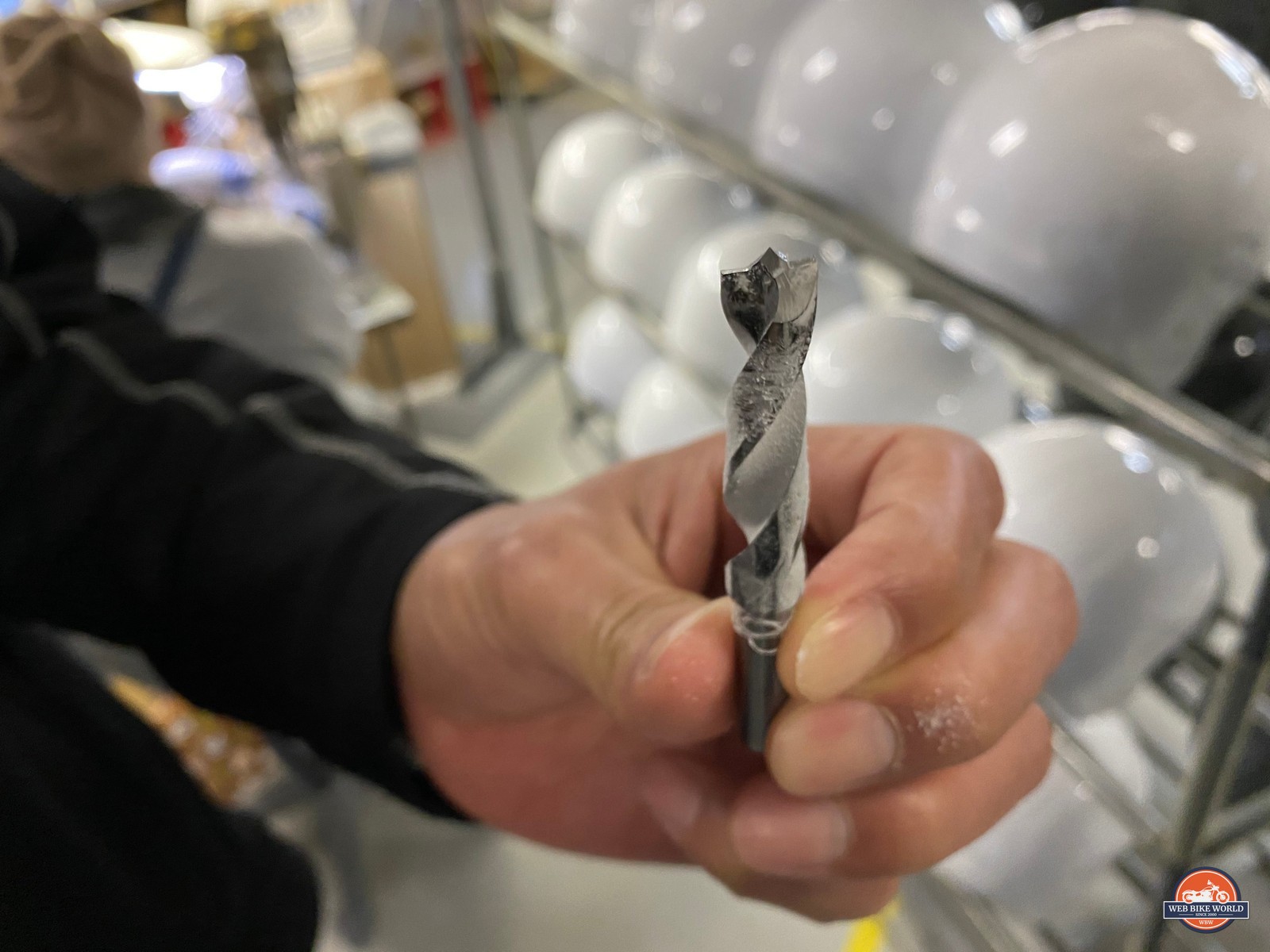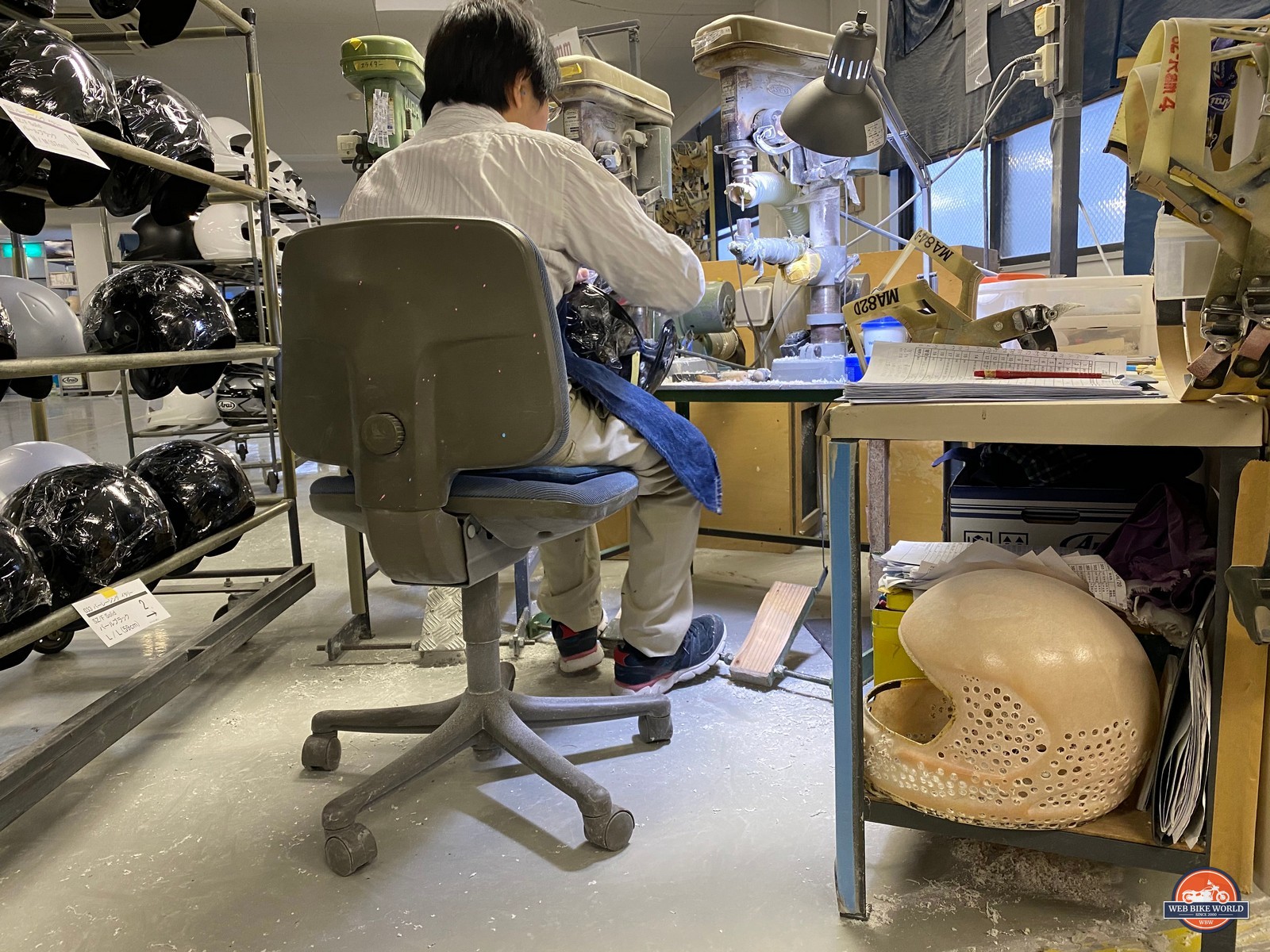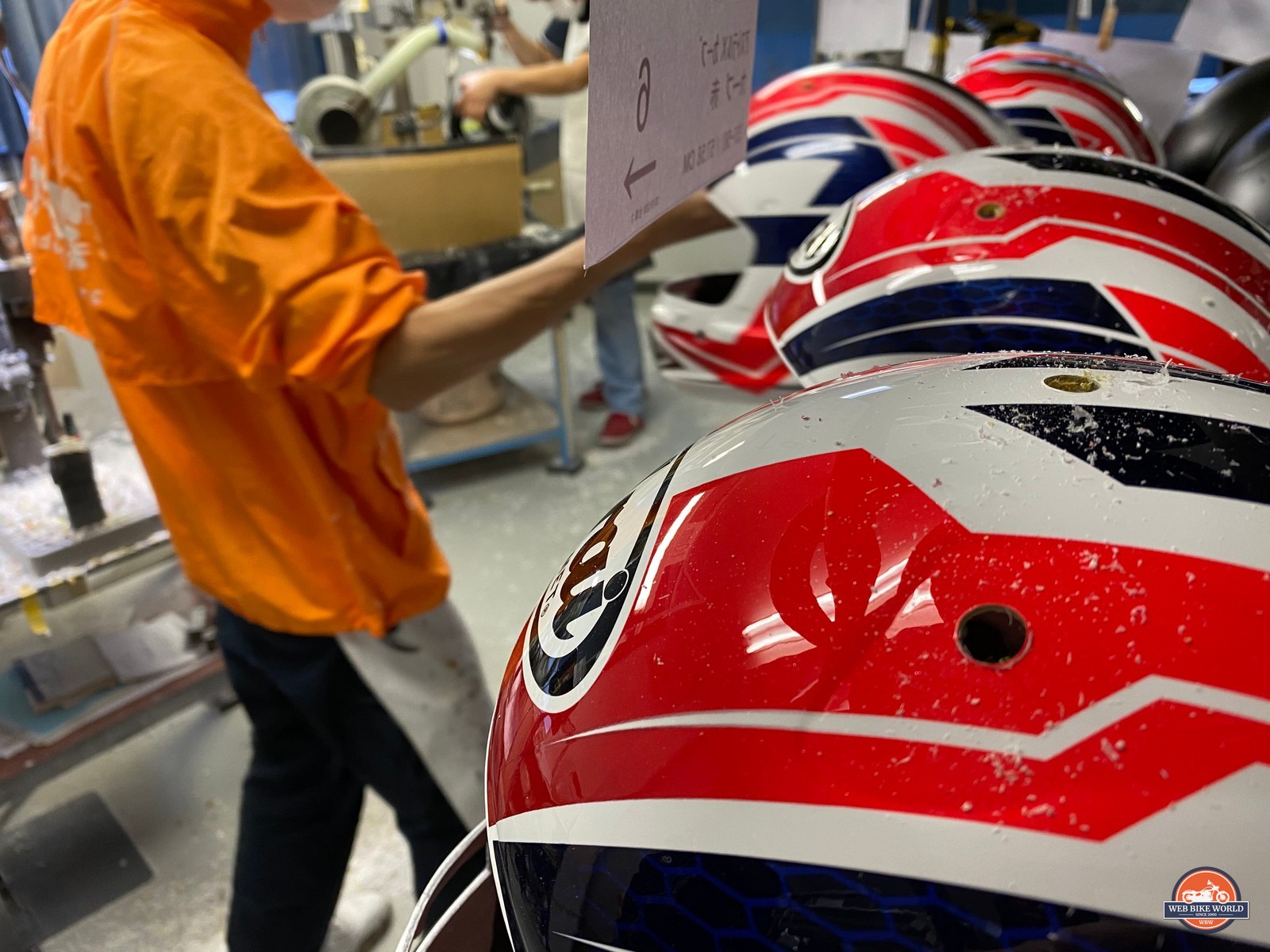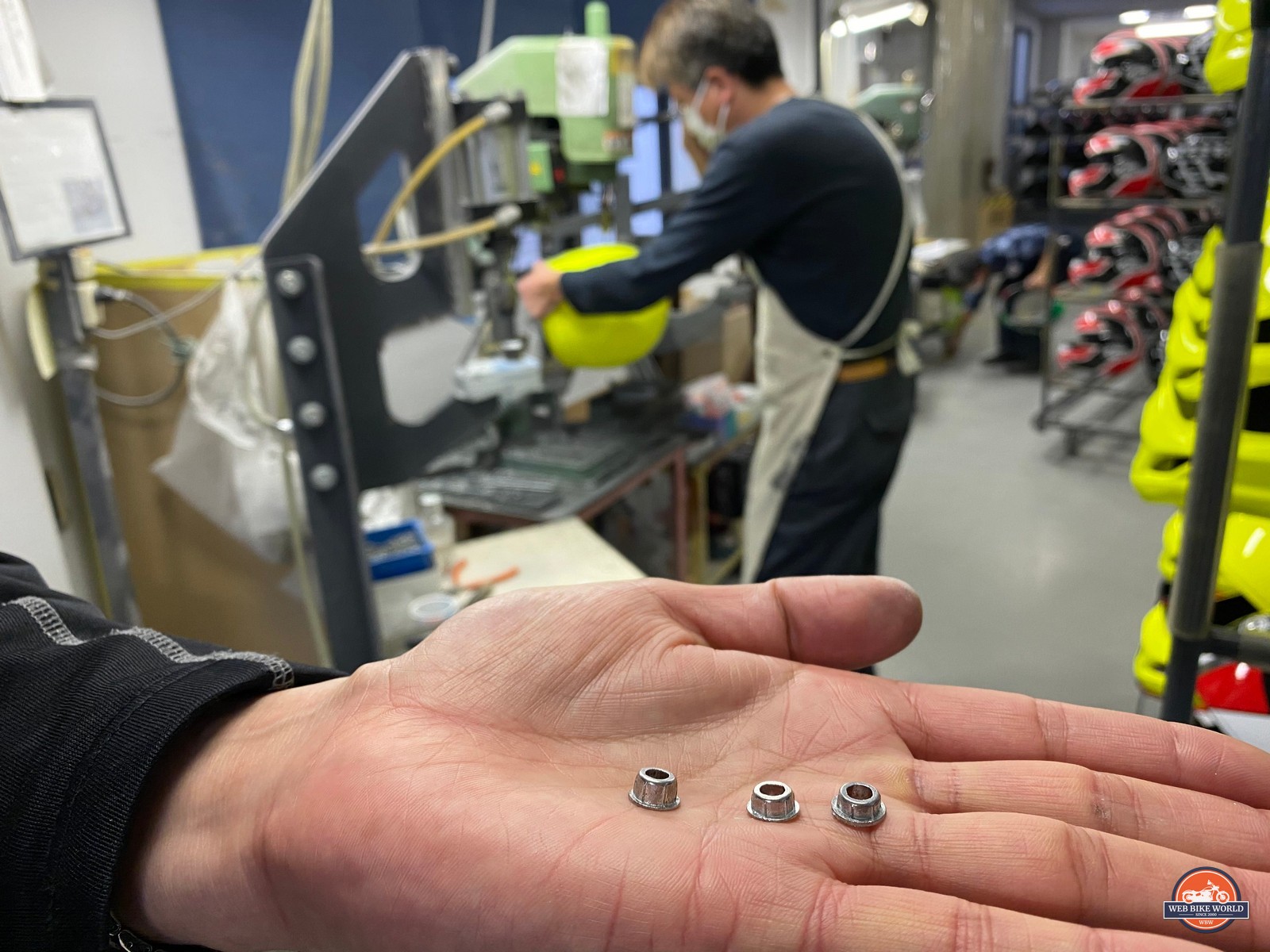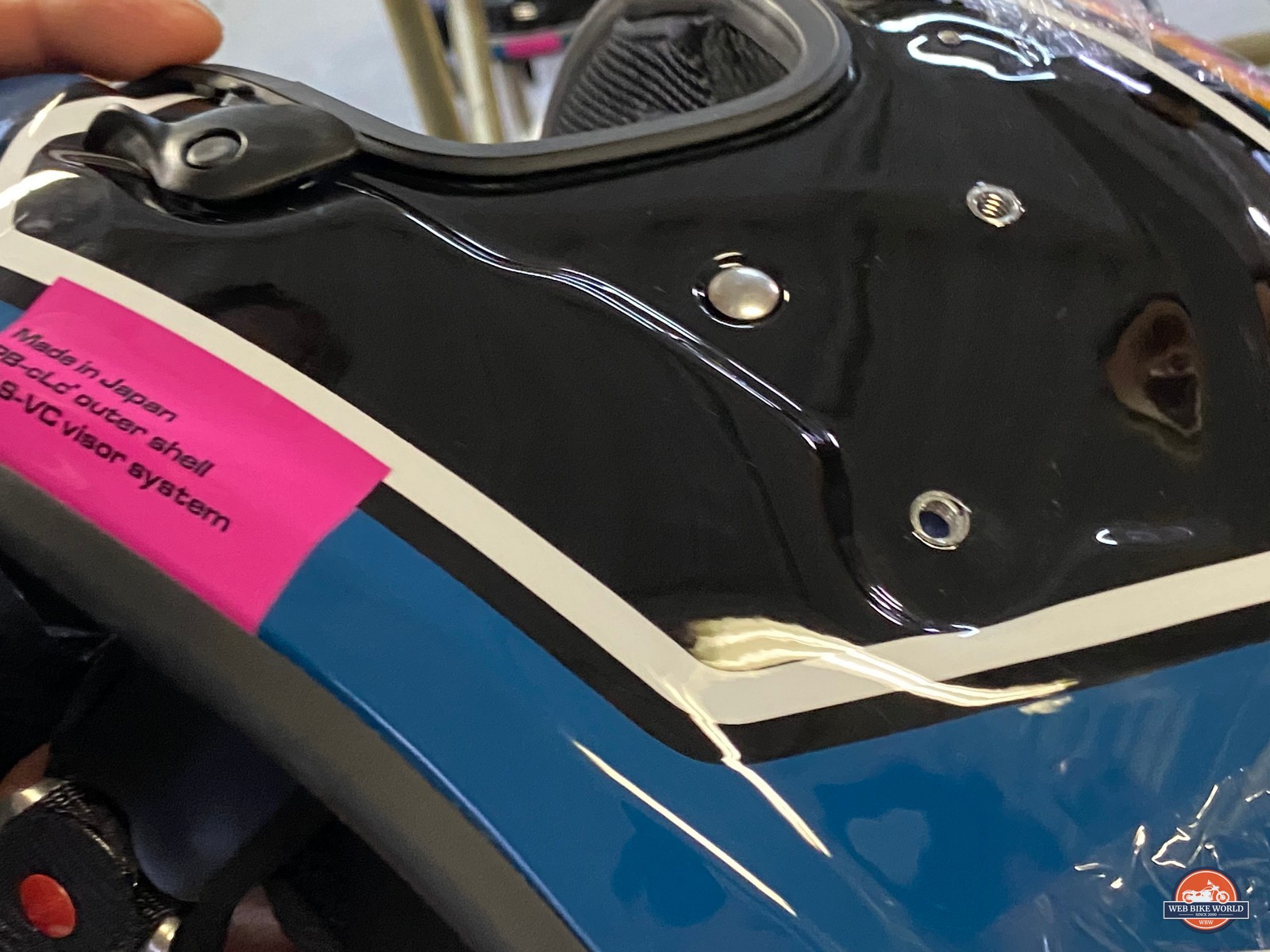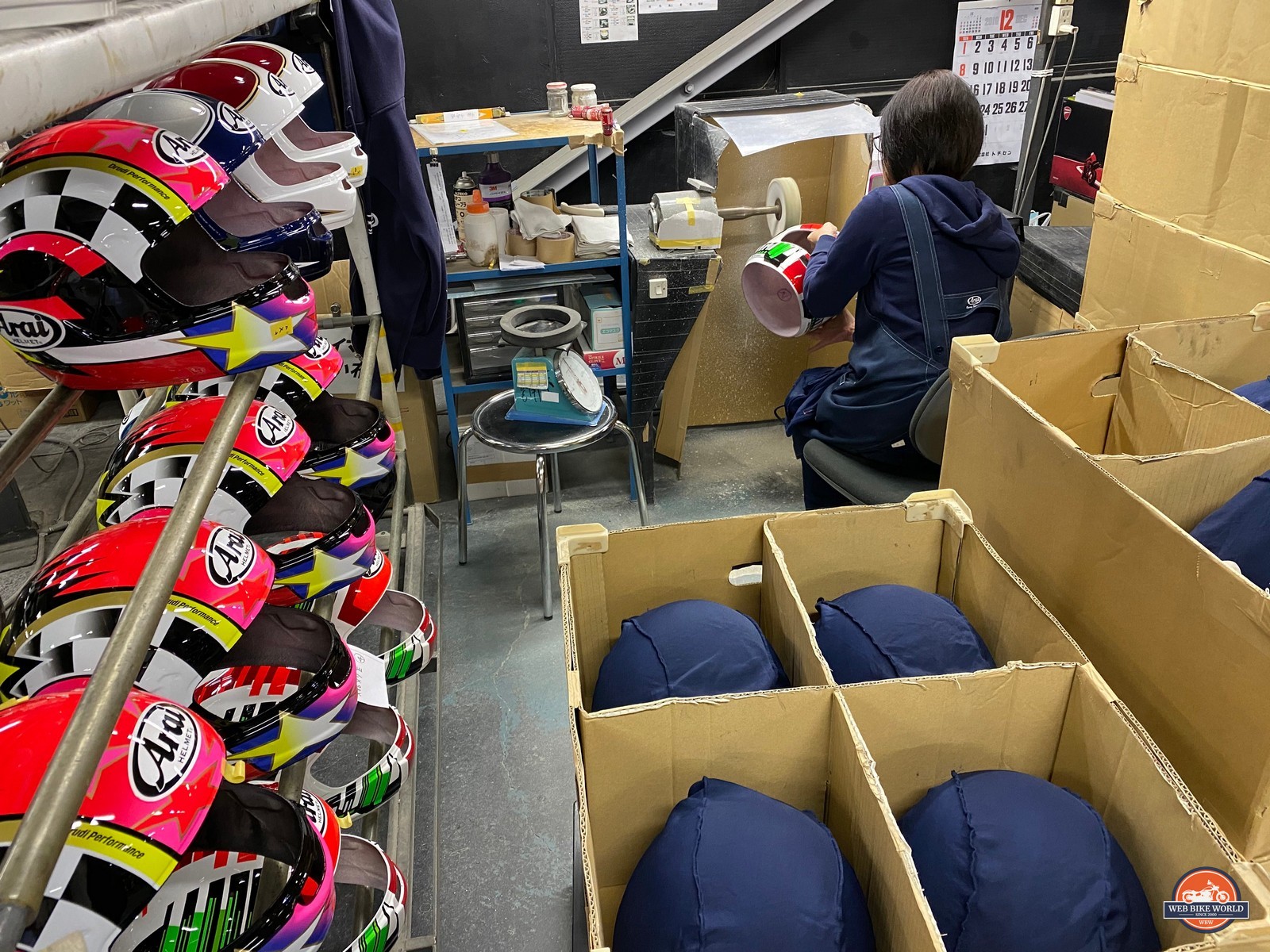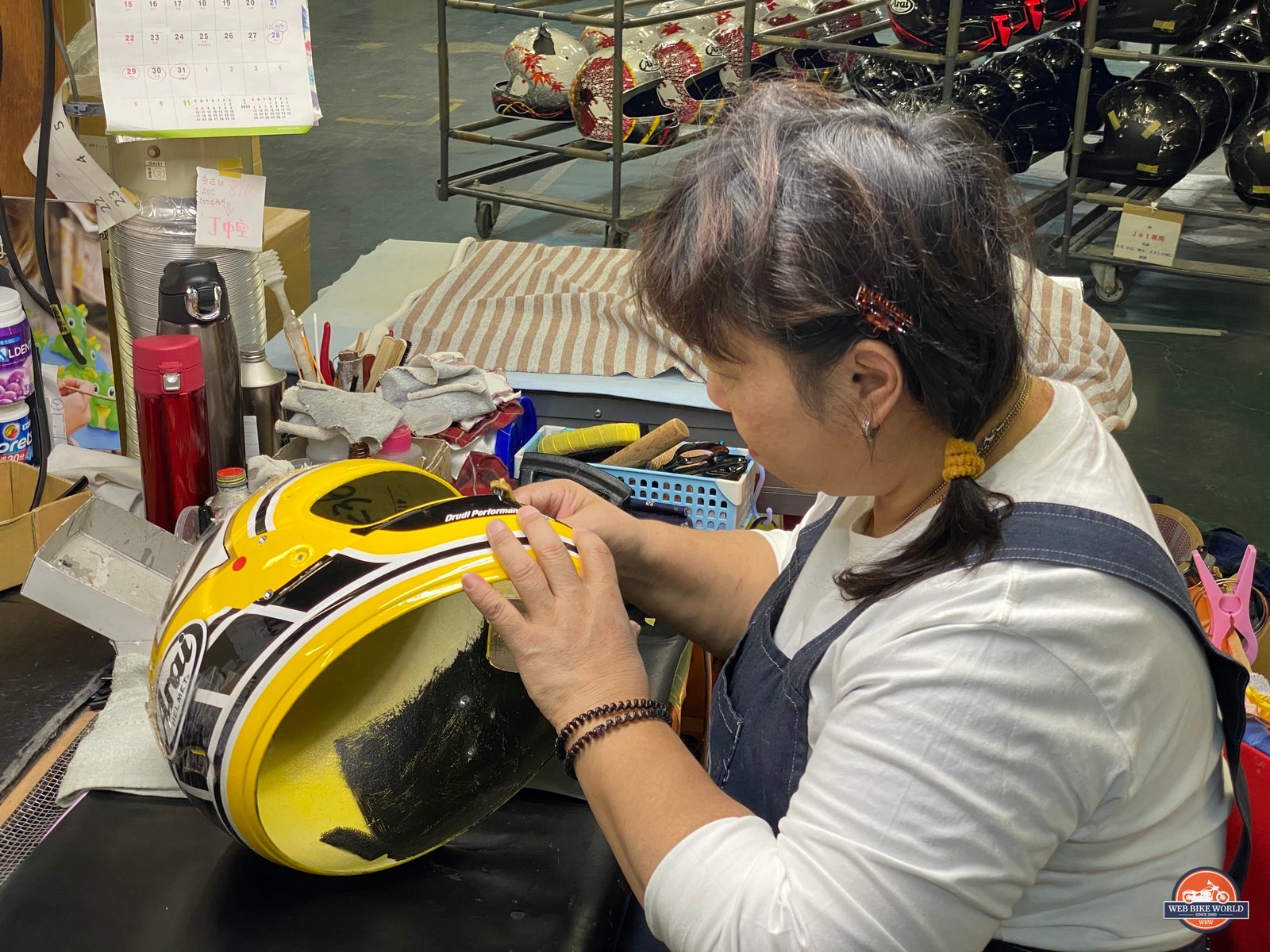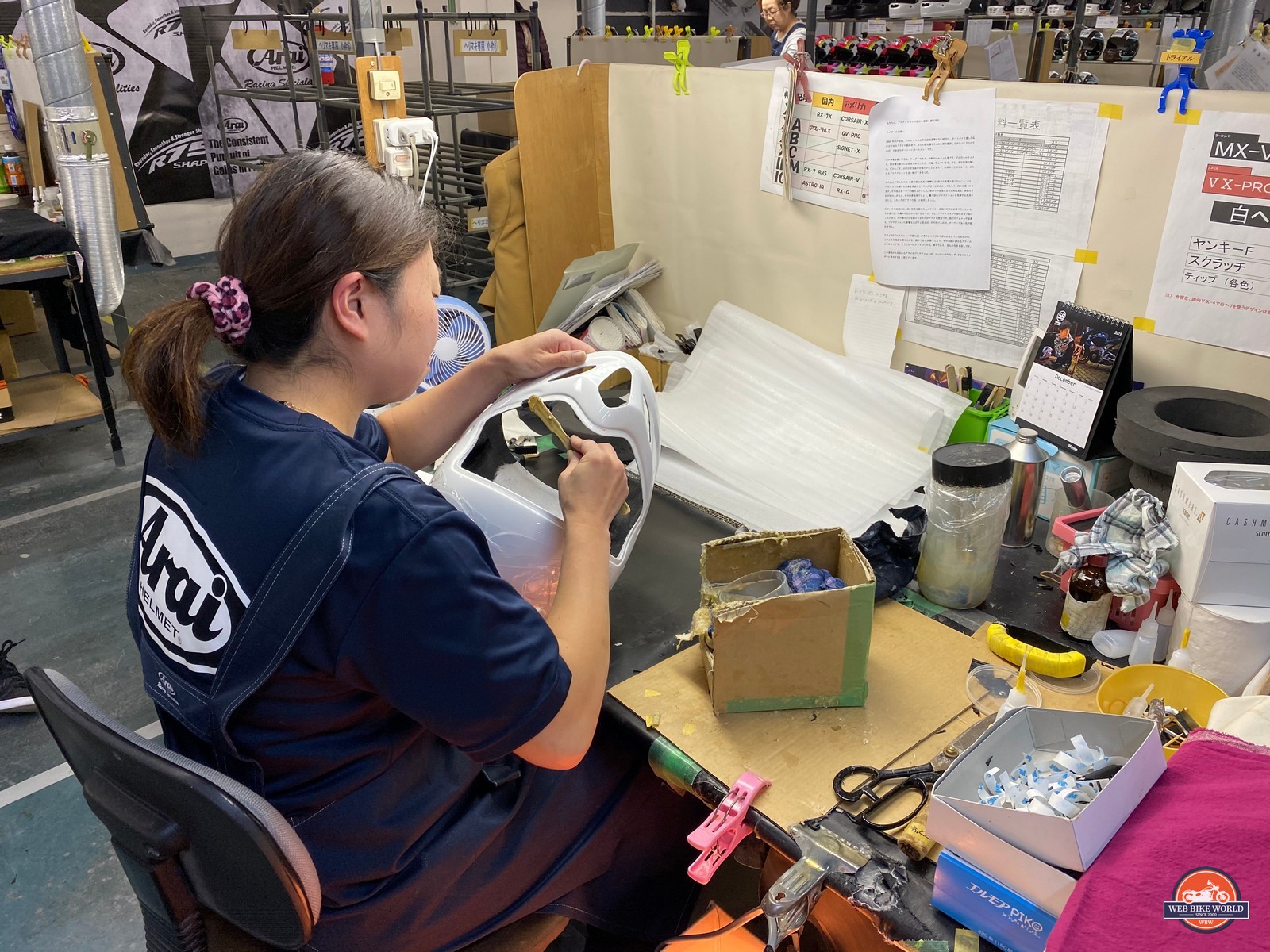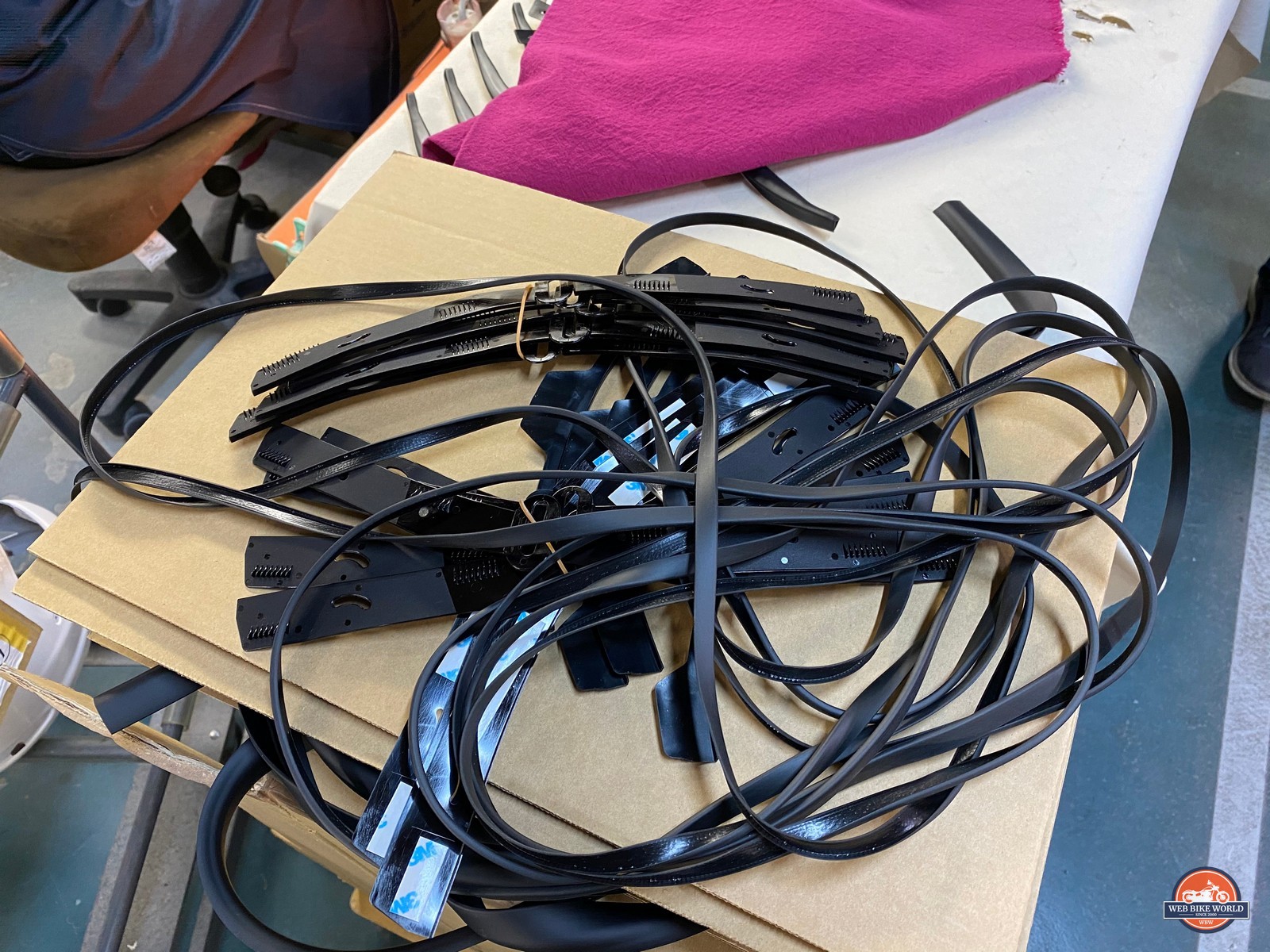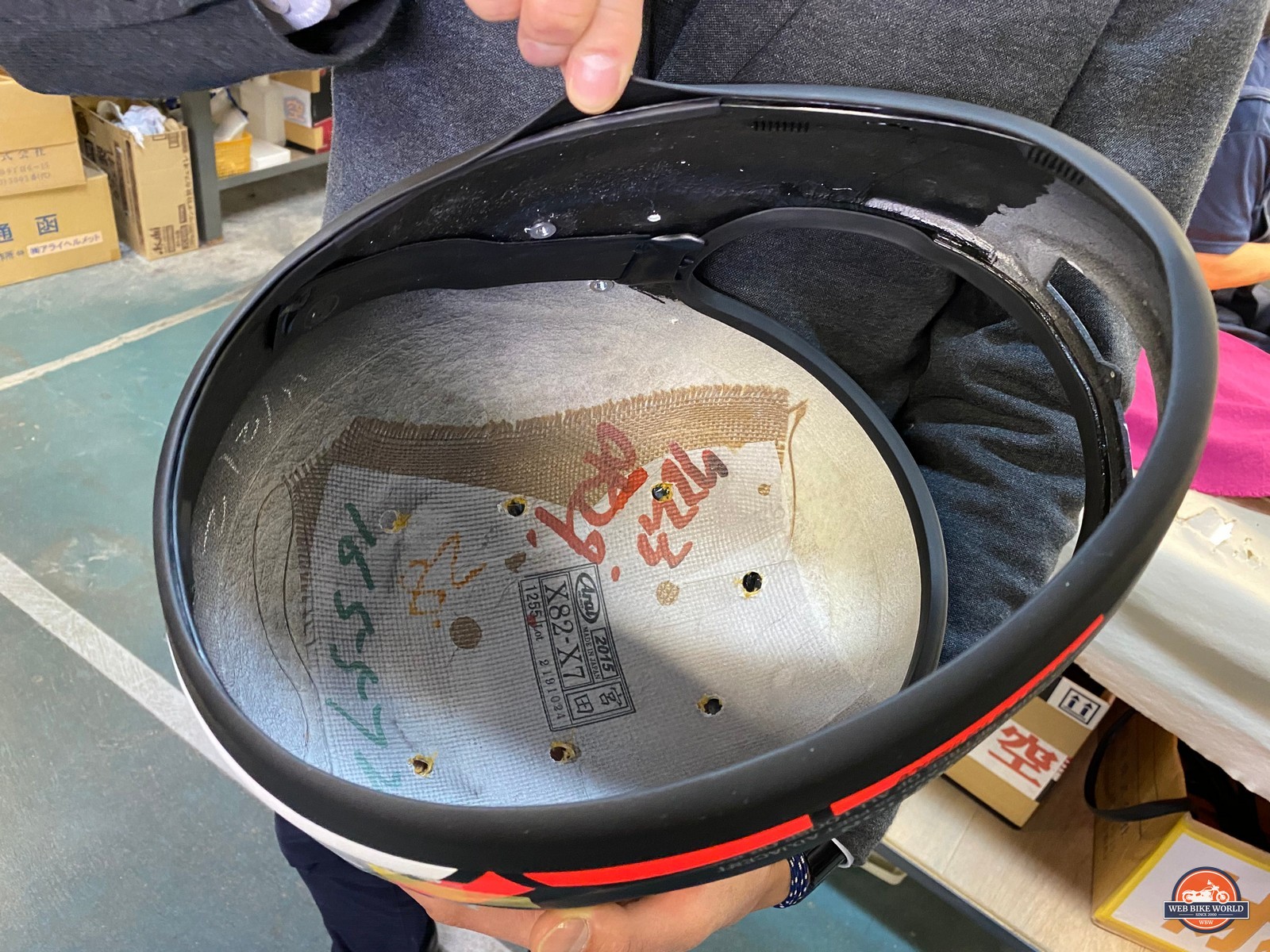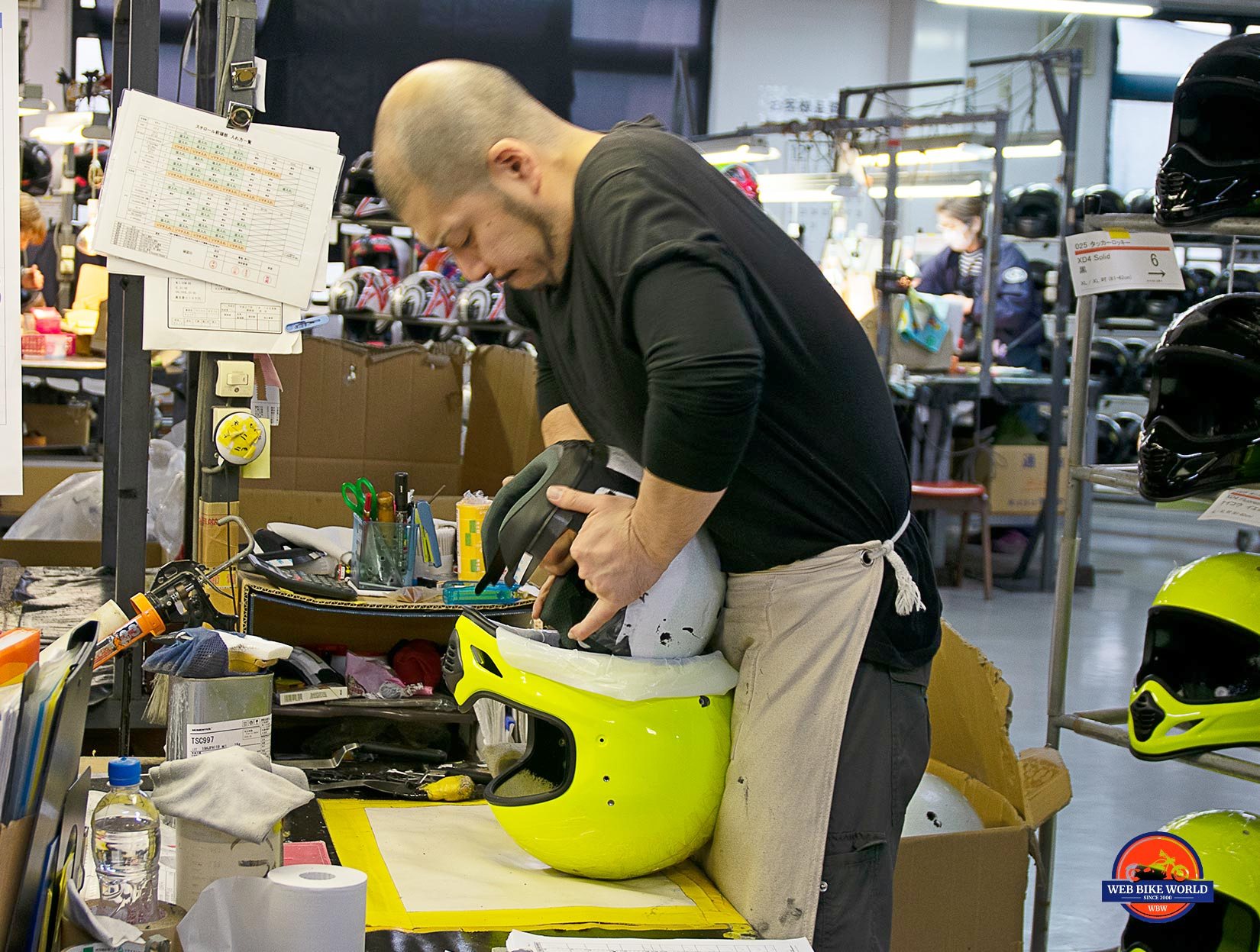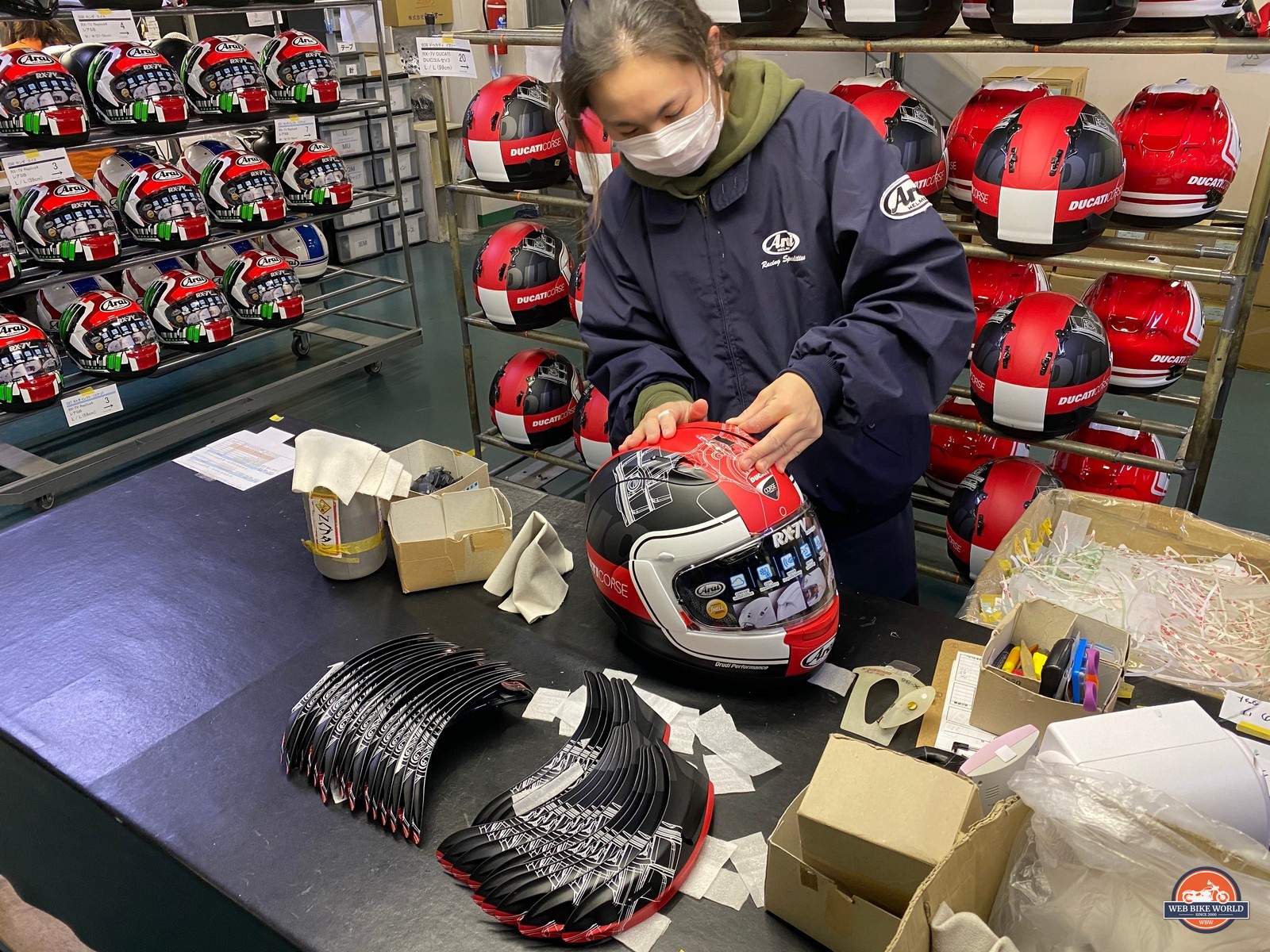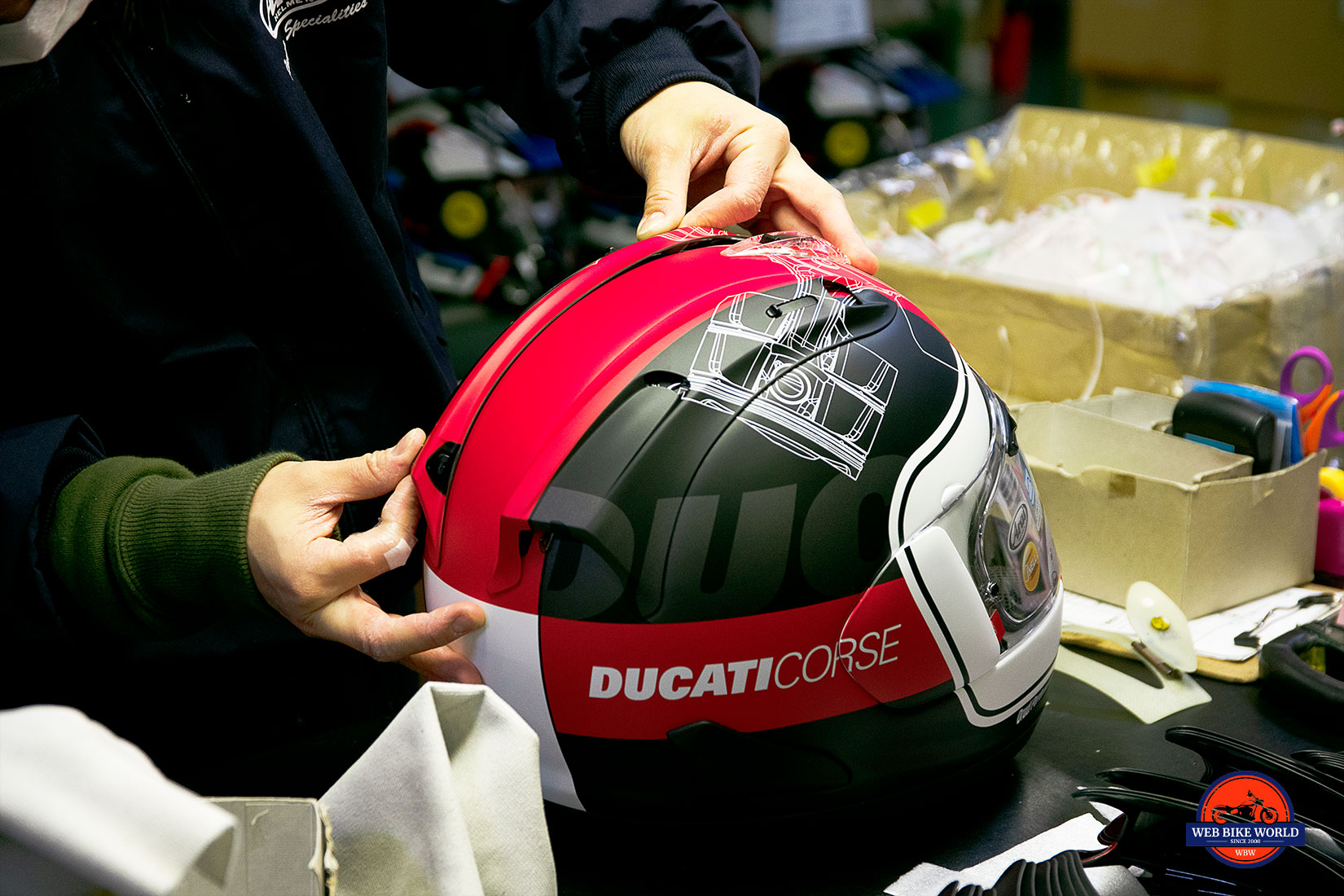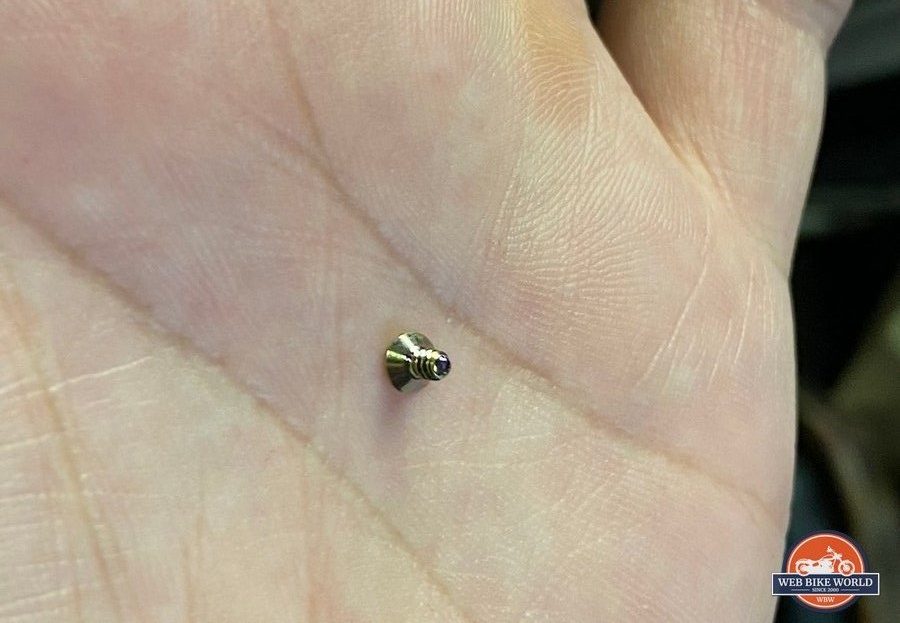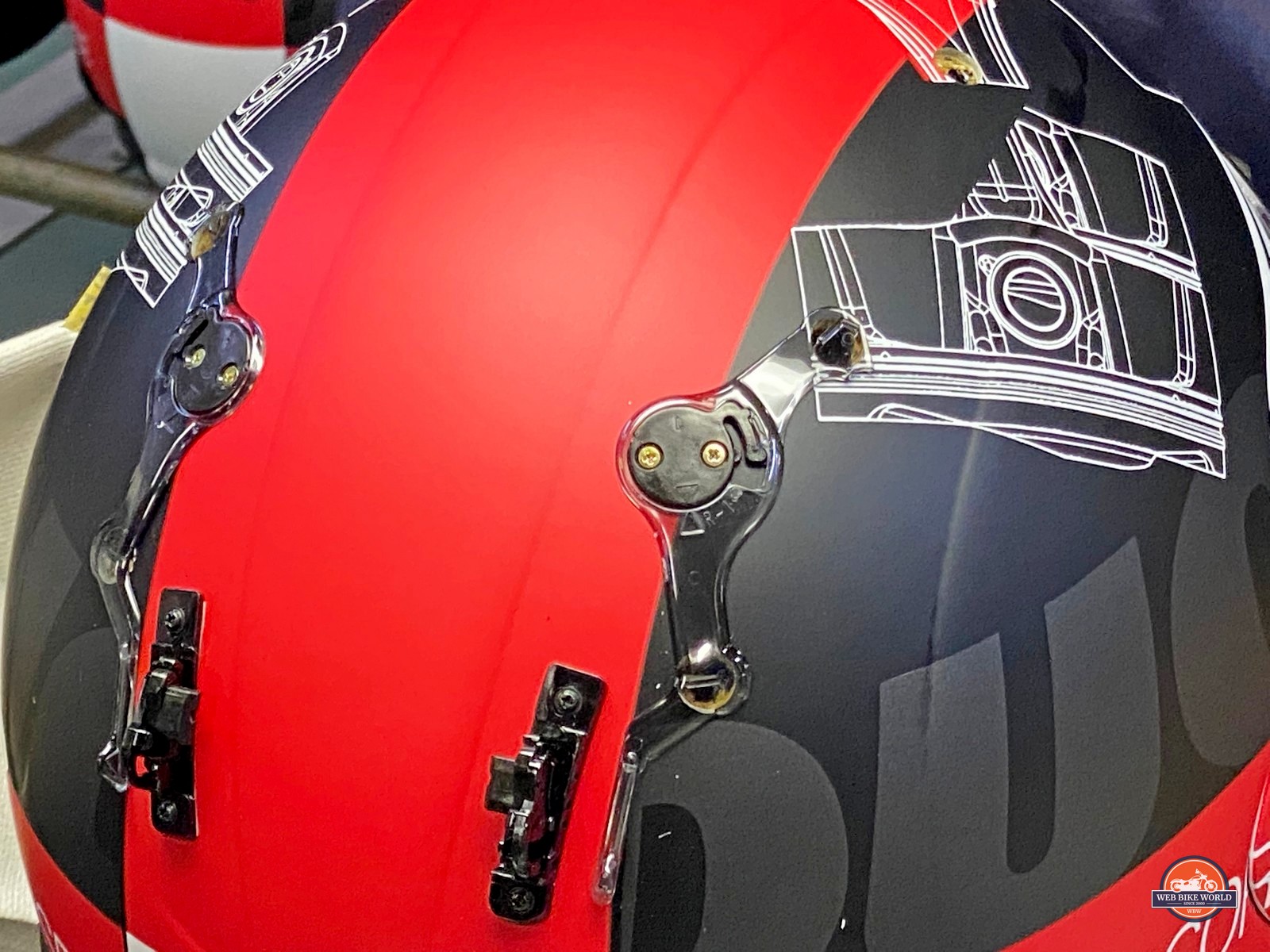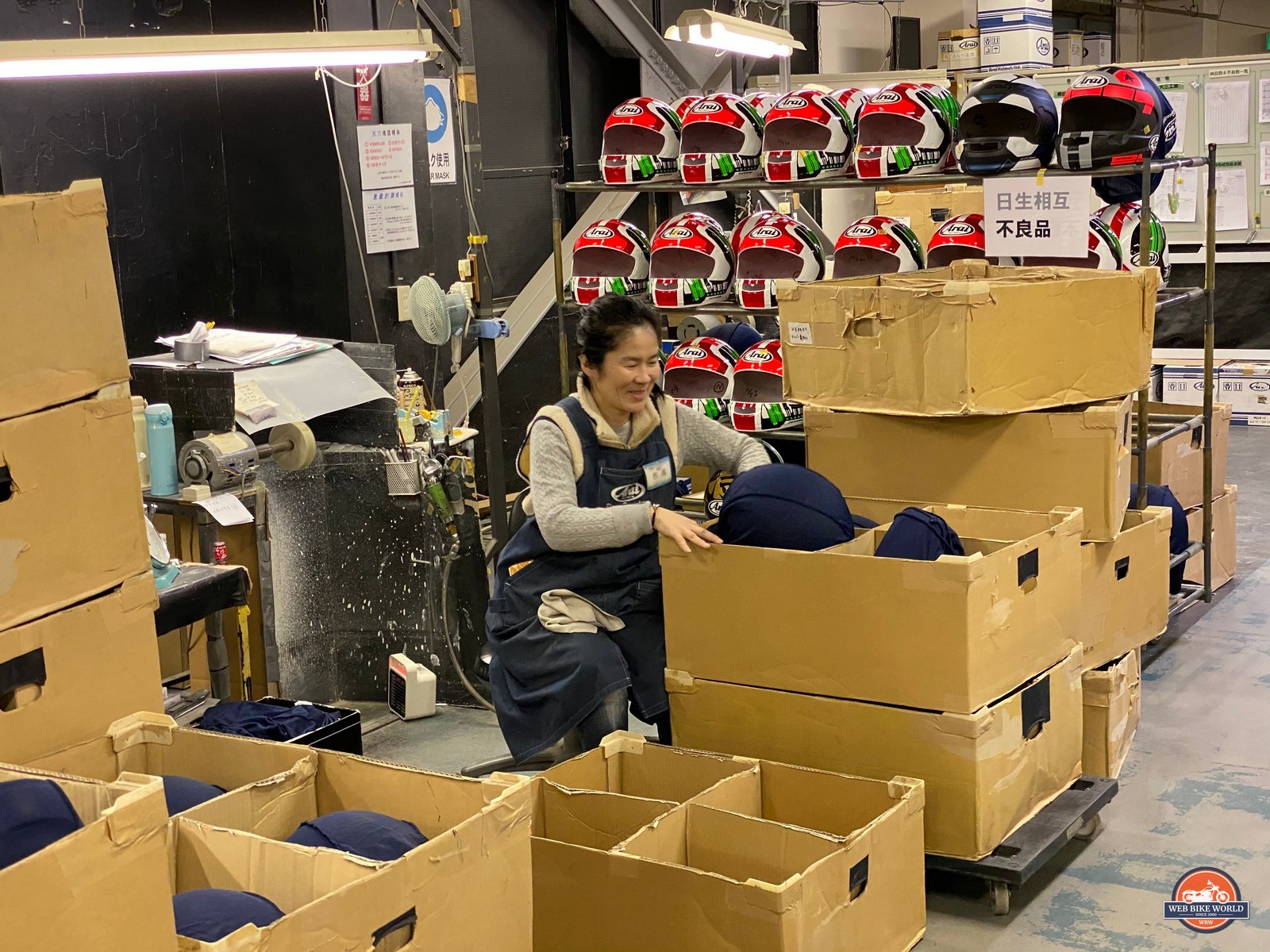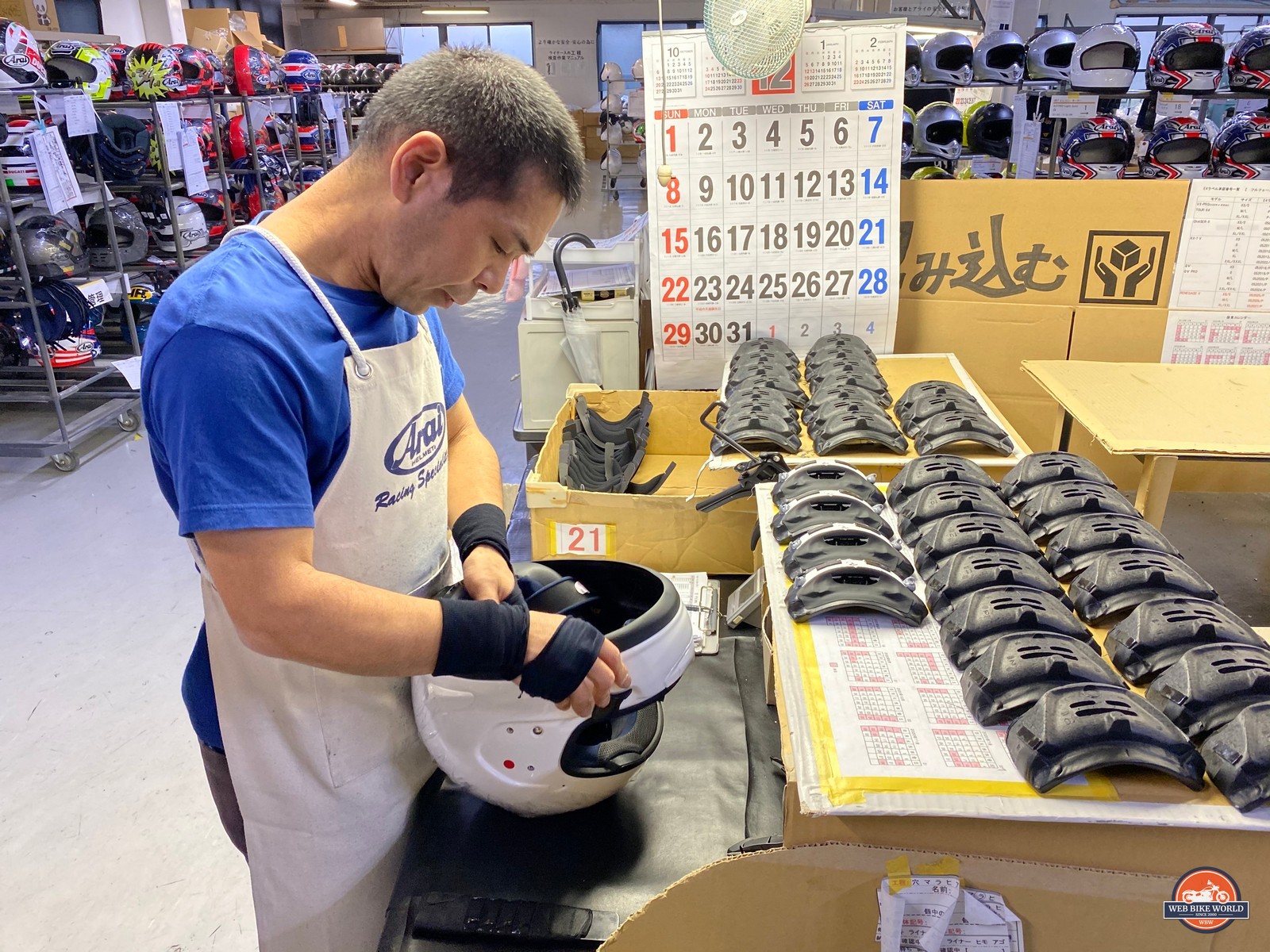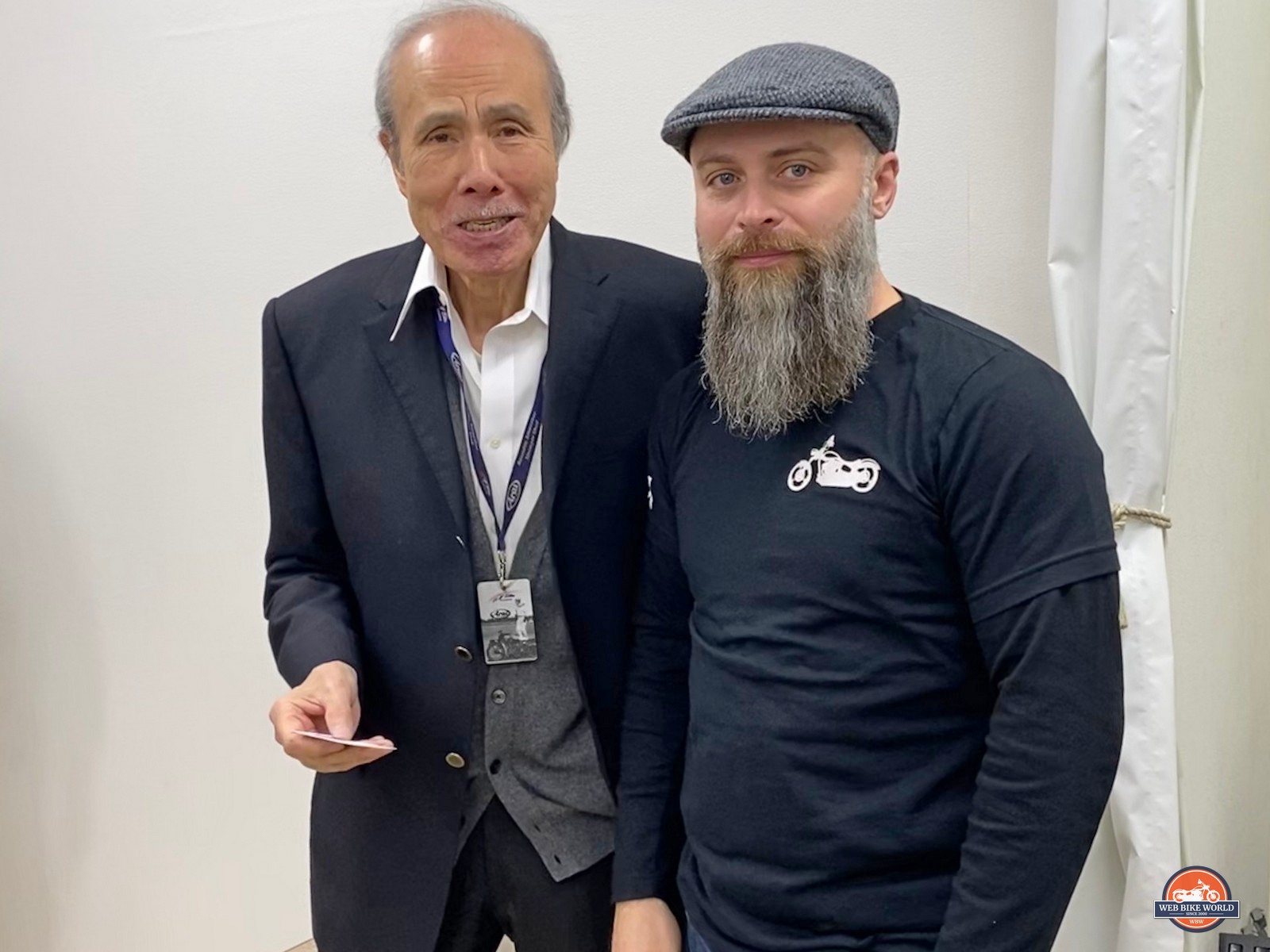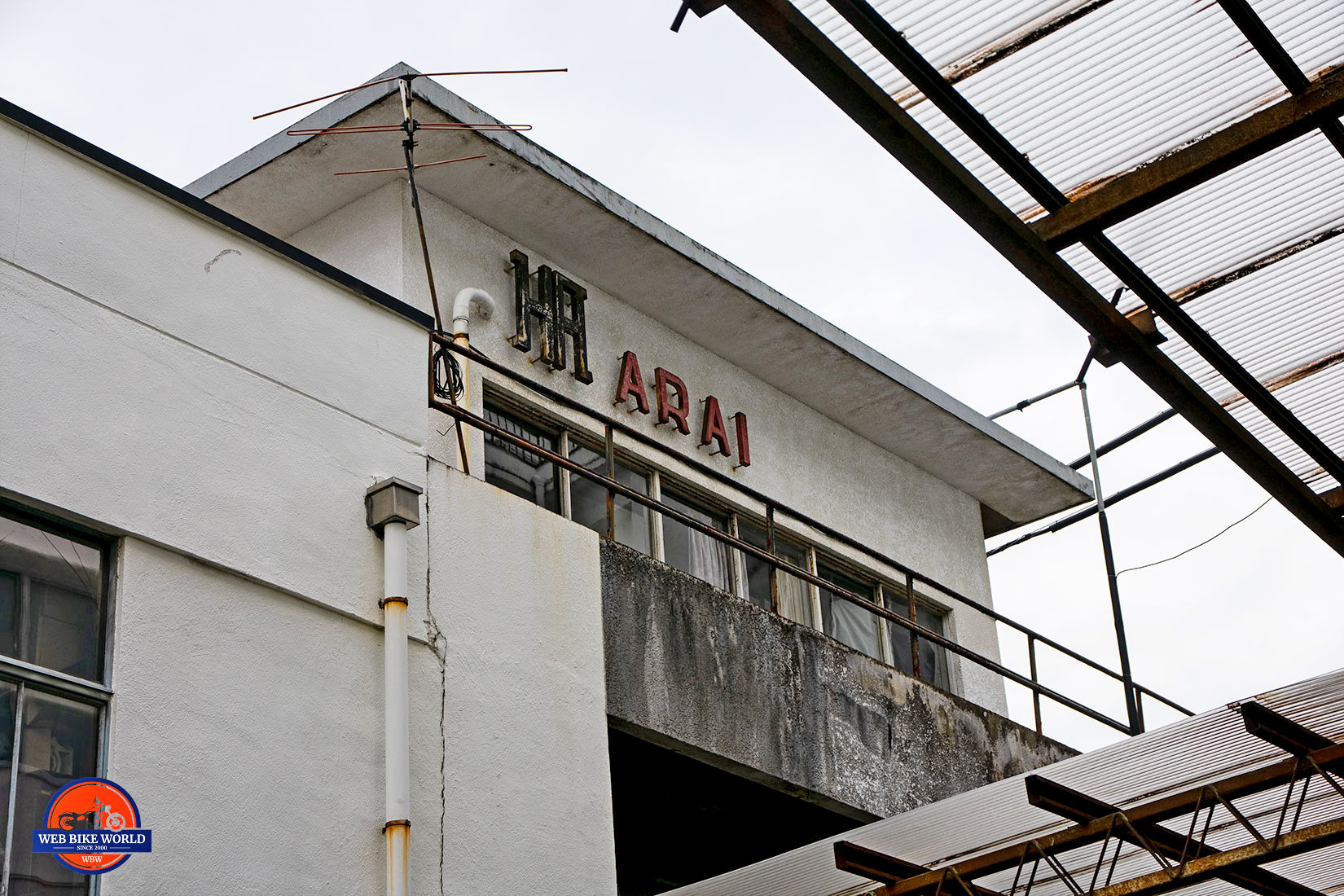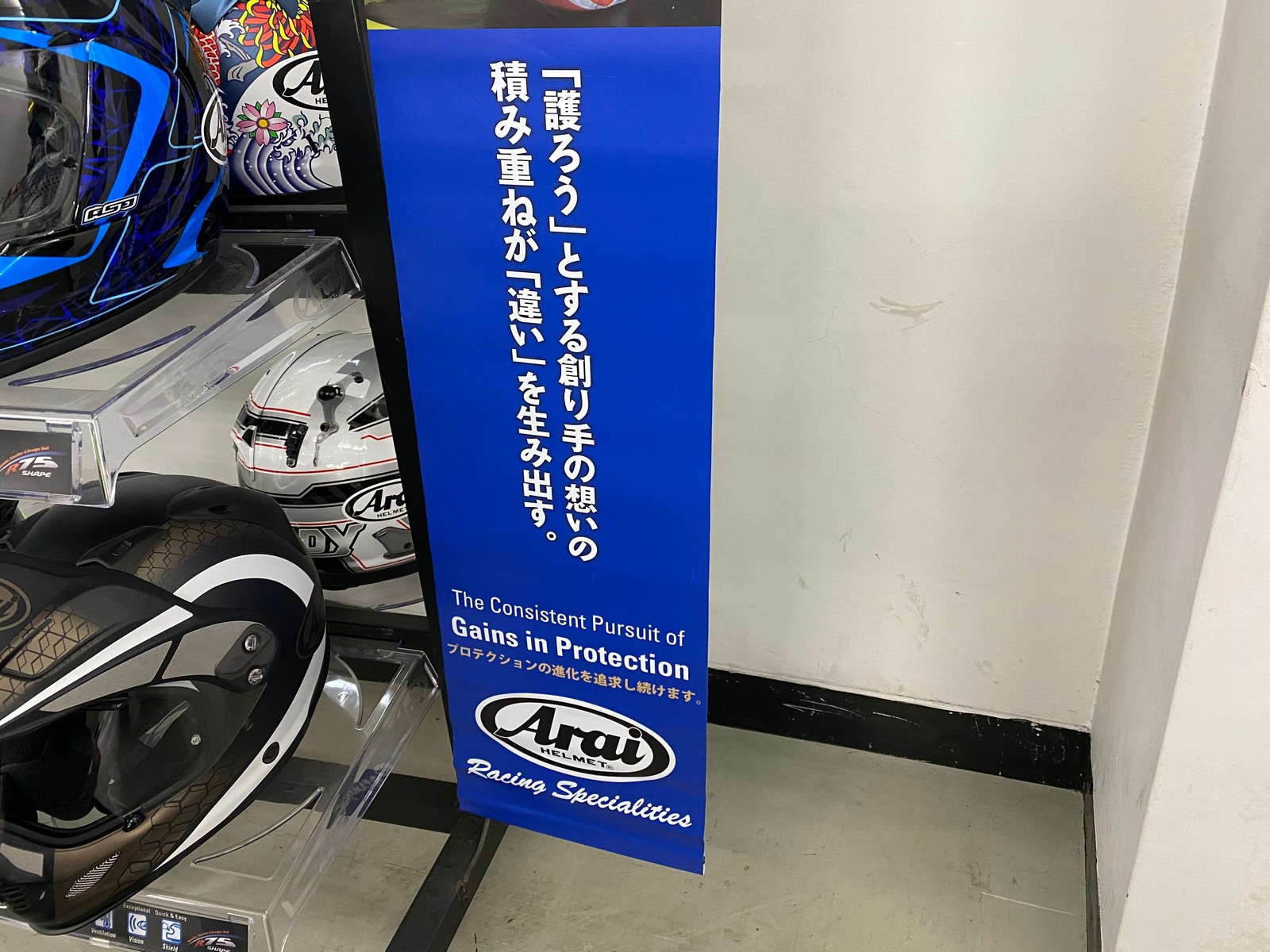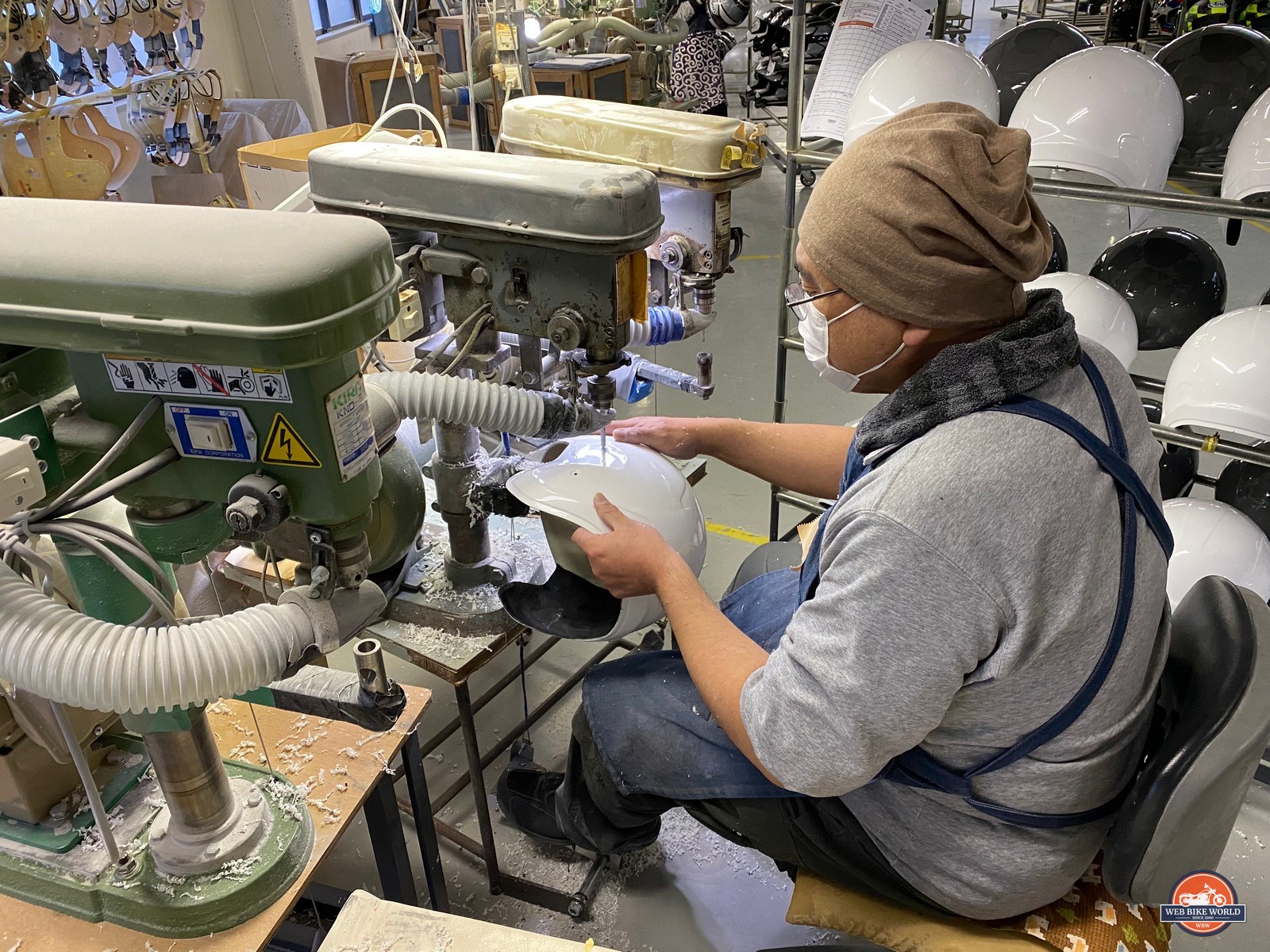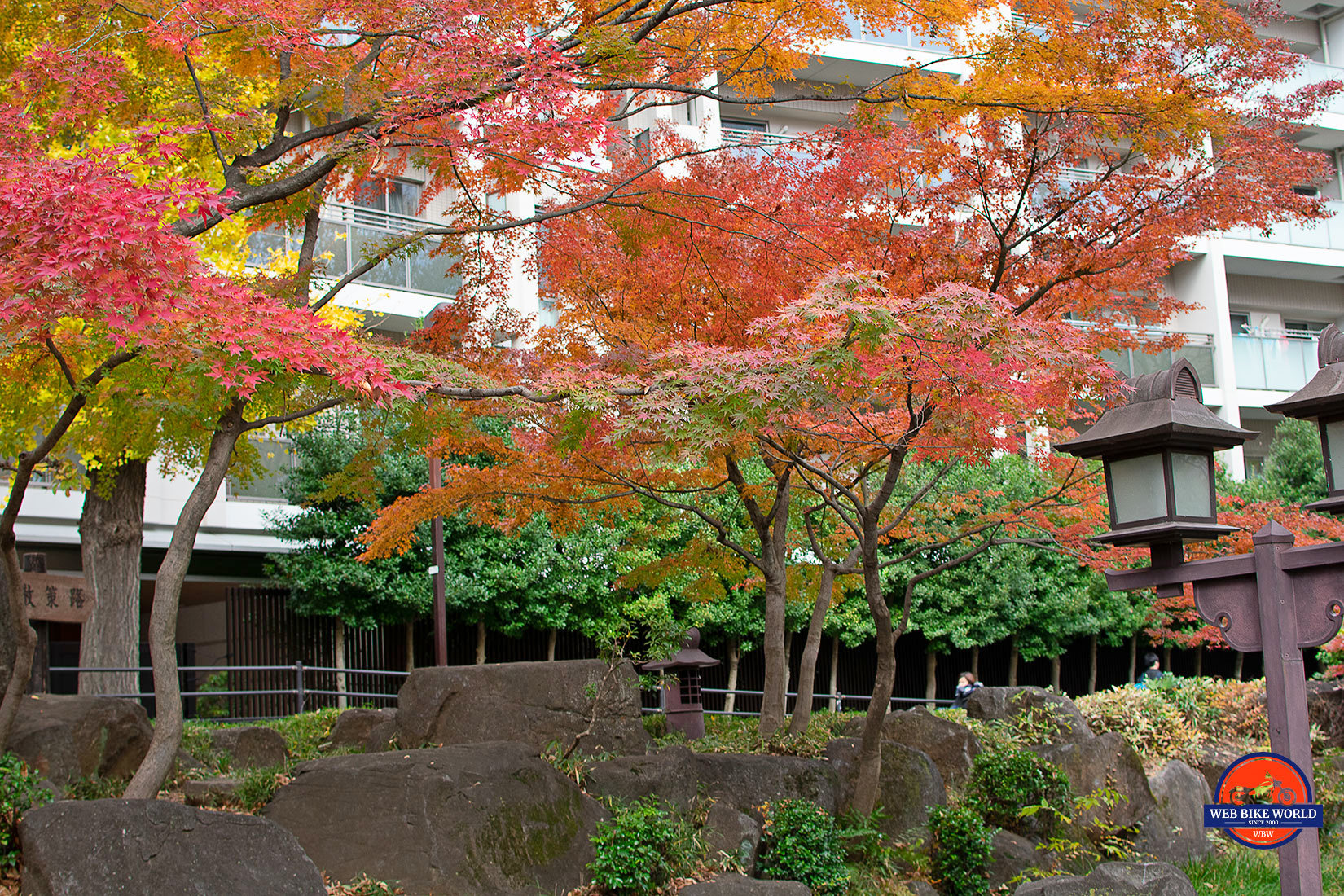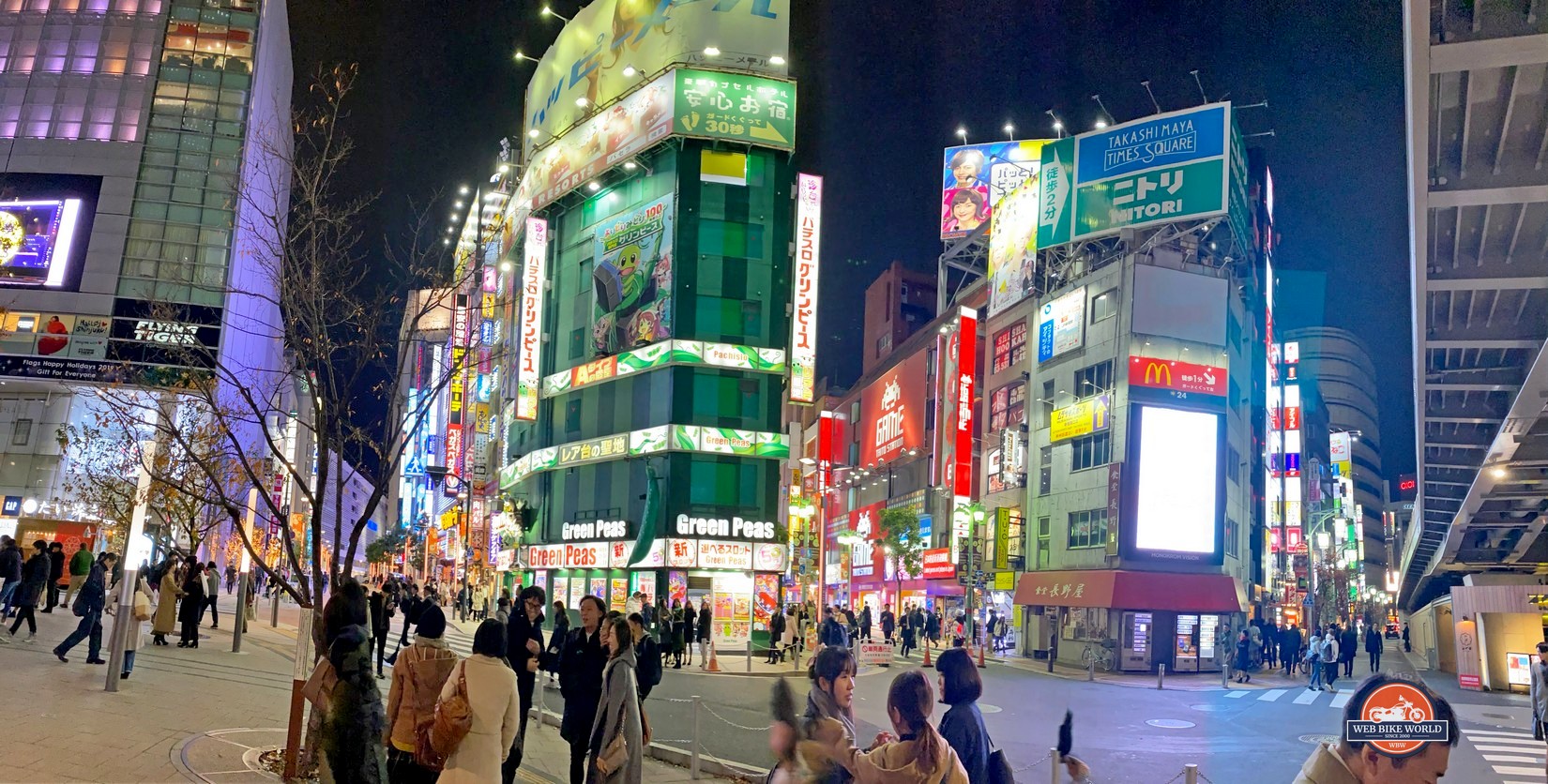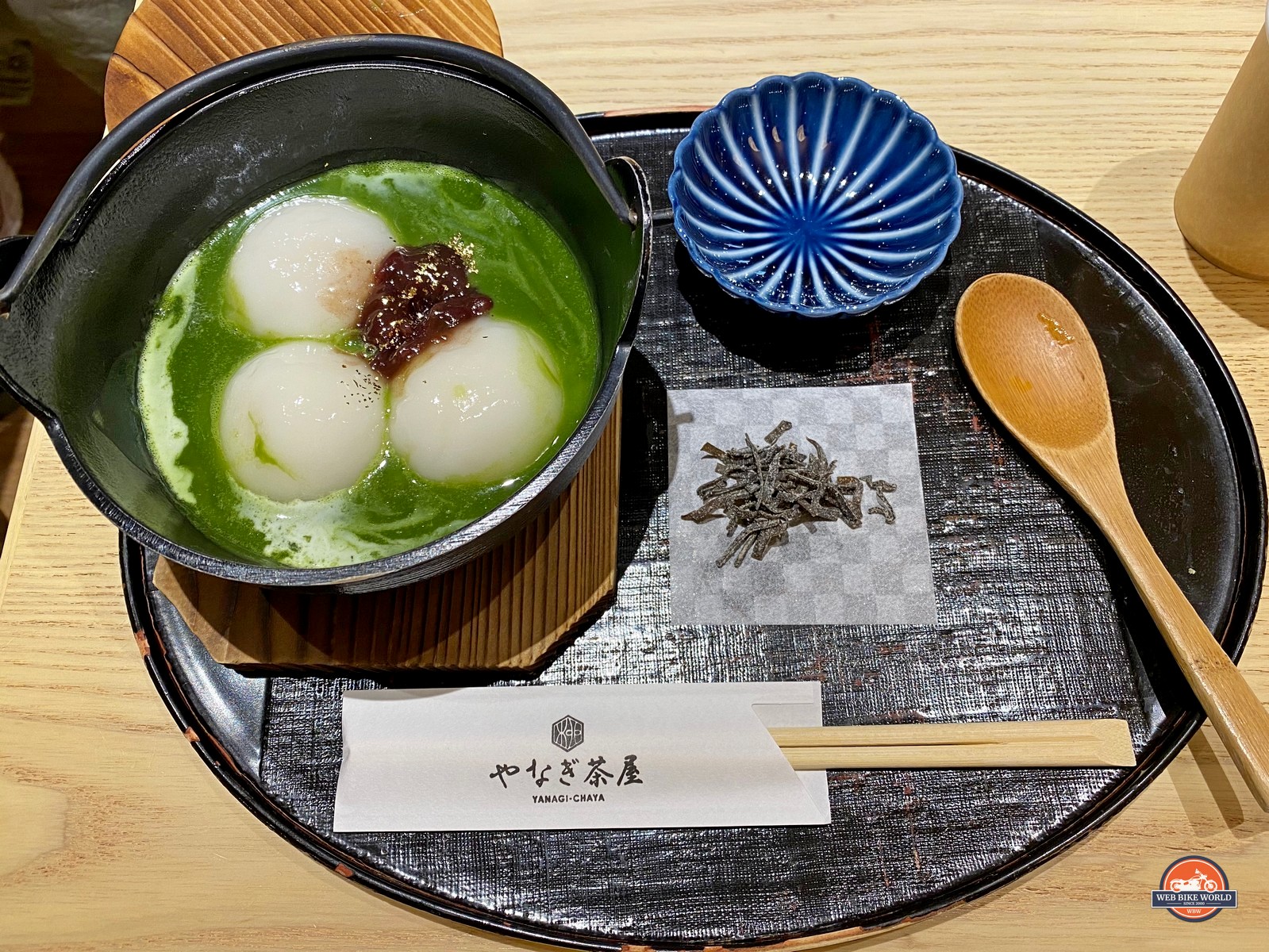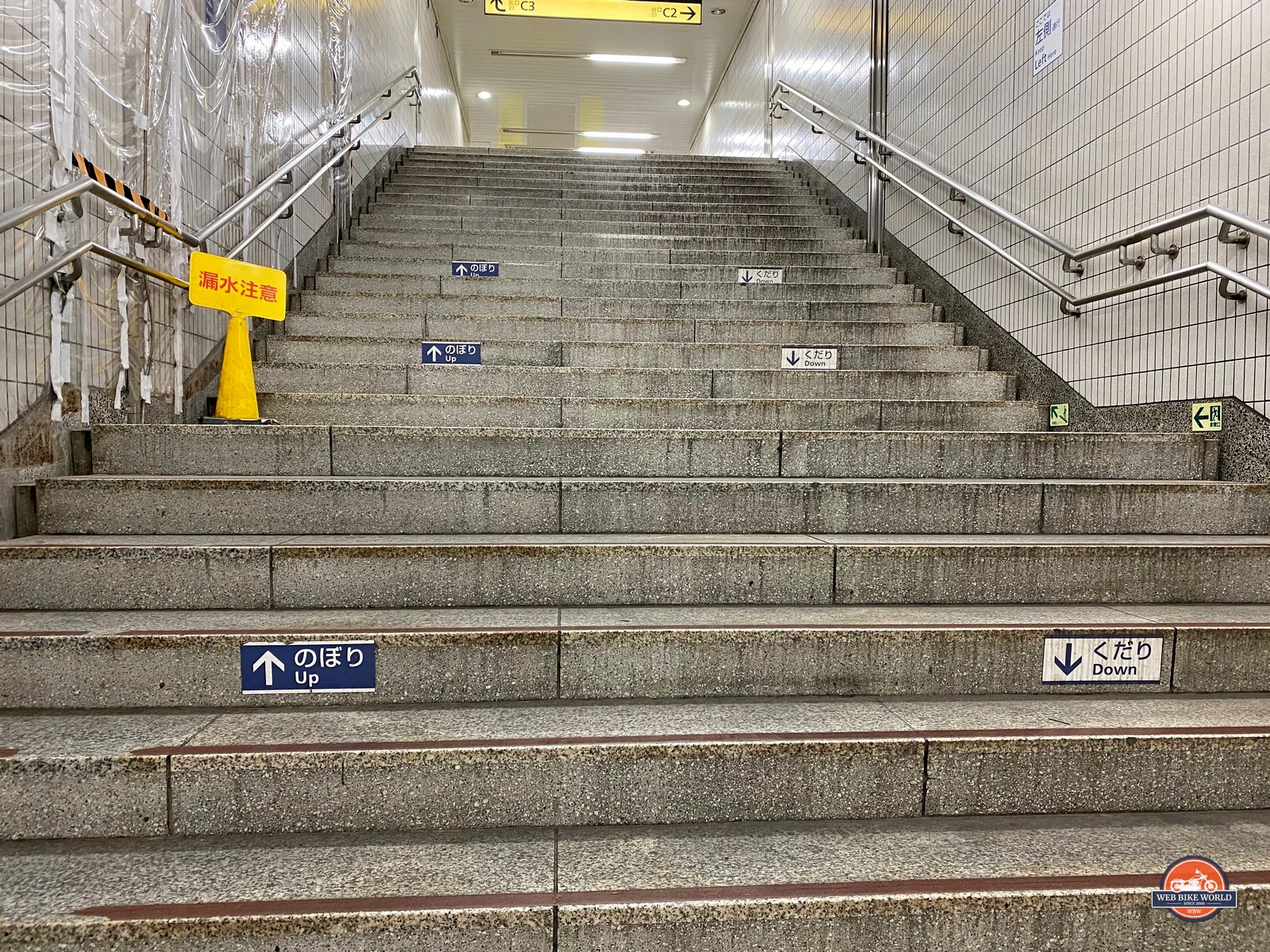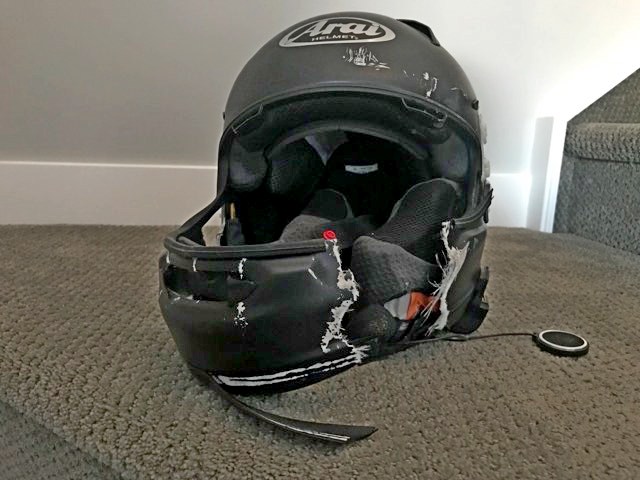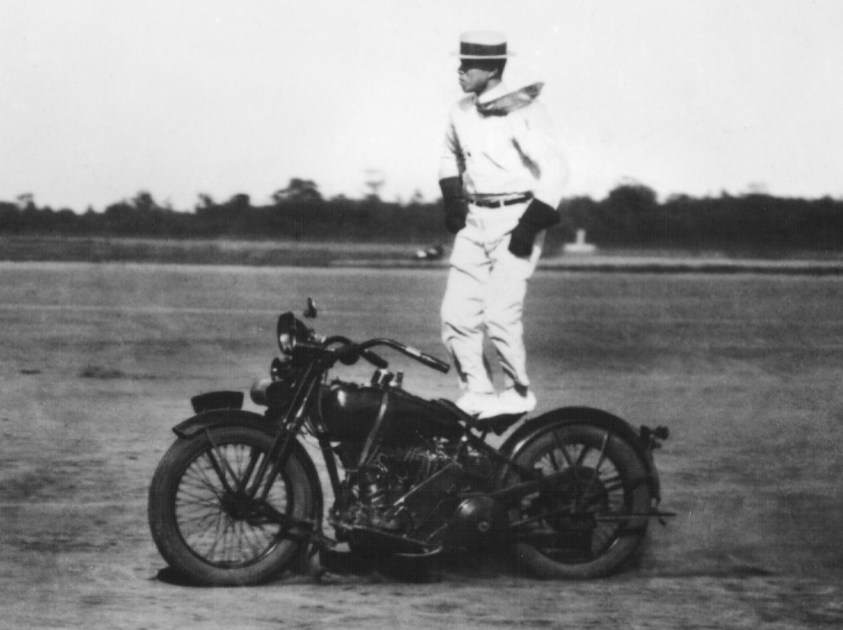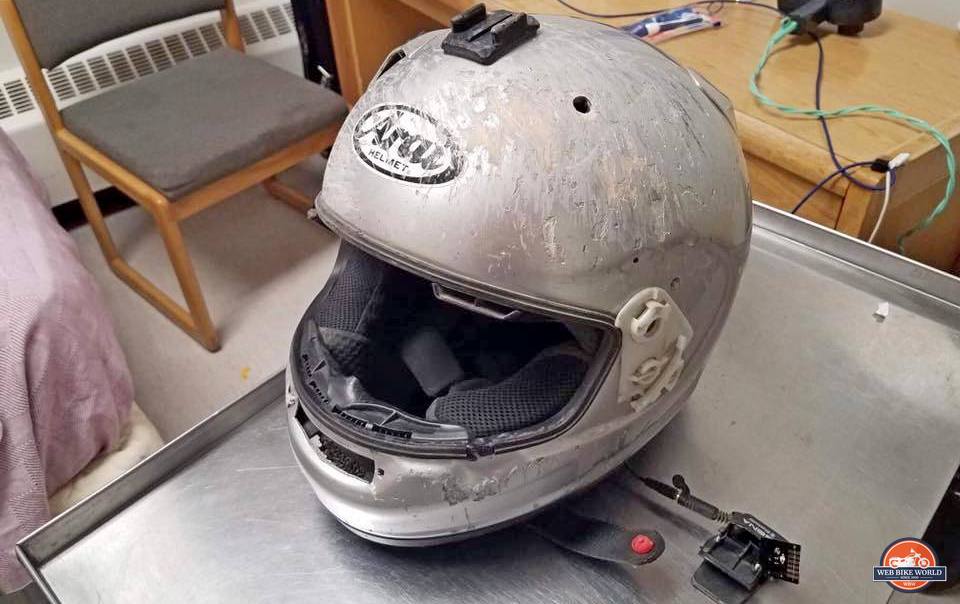The helmet in the photo above was run over by another motorcycle at high speed during a race. The wearer walked away without sustaining a head injury. Take a moment to let that soak in.
I’m often asked by people who know I test riding gear which helmet to buy or which is the best. I take that as a compliment and love to help where I can by using the knowledge I’ve worked hard to gain doing this “job”.
I’ve Been On The Fence For Too Long
After wearing and testing many different helmets for wBW my opinion at this juncture is that all riders should be wearing an Arai helmet if they prioritize first and foremost protecting their heads.
Consider saving your money and/or building the cost of an extra $700+ US into the price of that new motorcycle you’re taking home to buy an Arai helmet. Oh, and you’re going to need to replace it every 5 to 10 years too (depending on how much you use it) so plan on budgeting for that while you’re at it. You can find them on sale at the end of the year quite often reduced 30 to 40%.
You’ll never regret it even if you don’t crash wearing it, because achieving the highest level of protection requires getting the fitment just right. Once the fitment is just right the added bonus is an ultra-high level of comfort. Win/win.
This is the soon-to-be-released Regent-X helmet being built at the Arai factory in Japan.
That will be my advice from now on. Happily, Arai is releasing the Regent-X very soon and it’ll cost less than their other helmets… but it’s still $689 USD retail.
You’ll get a similar degree of crash protection found in the higher-priced Arai helmets, just not quite as fancy of a comfort liner on the inside (according to Arai). We haven’t tested this helmet just yet, but are working on it.
Settle In For a Long Read Or Skip Ahead If You Like
The following 8000 words will explain exactly how I arrived at this conclusion. It covers;
- How Arai protection compares to other helmet brands
- Videos showing an Arai helmet going through impact and penetration testing
- A tour of the Arai factory in Omiya, Japan to show the process of hand-building a helmet
- Some insight I gained into the culture in Japan surrounding craftsmanship
No Hard Feelings I Hope
I mean no disrespect to other reputable helmet manufacturers like Shoei, Schuberth, Nolan, Shark, AGV, HJC, and Simpson for picking Arai as my overall choice for head protection, though I doubt I have enough influence to really hurt their sales significantly.
I like what everyone else is doing and have no doubt their helmets do a great job of saving lives as well. In lower-speed crashes, I think the playing field is fairly level amongst all the manufacturers, but Arai stands out to me in a few ways and appears to be building better head protection when it comes to extreme crash protection.
I invite those other manufacturers to show me differently on a tour of their factories. I promise to keep an open mind.
Thank you, Arai!
I want to thank the people at Arai for letting me visit their factory and testing facility in Omiya, Japan.
They don’t open their doors to just anyone and it was a great honor to spend time with Mr. Michio Arai himself along with his son Akihito and the Managing Directors of Arai Americas Brian Weston and Tomo Abe.
Thanks also to Andrew Leistensnider and Garrett Kai for setting it all up.
I learned a ton from all of them.
Safety Is Why We Wear Helmets, Right?
Mr. Arai says his company hasn’t yet and never will deviate from their focus on the original and most important reason for wearing a motorcycle helmet – protecting the head and brain in a crash.
Arai is so focused on safety that they only make small, careful changes that often are imperceptible to the buyer in order to maintain the best crash protection level already achieved with their R75 shell. That doesn’t mean their helmets aren’t evolving but the improvements are gradual, not radical.
Evolution
Arai shell materials components have changed quite a bit since the 1950s to what they are today, but the smooth R75 “egg” or organic shape has remained constant.
The photos above show their first complex laminate construction fiberglass shell on the far right and the journey it took from there over time moving to the left.
The shell expert in this photo drew the photo of the cross-section of a bridge on the whiteboard to help explain the way complex laminate shell construction was dreamed up.
The supporting beams that run diagonally between the main girders in suspension bridges are where Arai’s founder (Hirotake Arai) got the inspiration to reinforce their helmets. They still use a similar philosophy in modern Arai shells.
The original Arai shell is on the right in the photo above and their first Kevlar shell on the left.
They tried Kevlar for a year then went back to fiberglass, on to carbon fiber and so on up to the present-day incarnation of their fiberglass shell. Incidentally, they tell me carbon fiber shells don’t perform much better in crash testing than their fiberglass ones. They’re basically just lighter weight.
In the photo above you’ll see the two latest versions of the modern Arai helmet shells.
An Aside About Arai Carbon Fiber Shell Design
The Arai shell expert in the photo below explained to me the difference between their aeronautical grade carbon fiber weave and other manufacturers’ that cost much less.
In the photo above you can see the top drawing illustrates the smaller and rounder cross-section of carbon fiber strands found in the weave of helmets costing $500 to $700 on the market.
He says those fibers are already partially loaded with tension stress because of the rounded shape of the strands meaning they break easier when impacted in a crash than the flatter Arai carbon fiber strands as seen in the lower sketch.
The flatter strands in the Arai weave, allows them to be more relaxed until an impact occurs. This way they can take more of a hit before breaking.
Resin & Fiberglass Inventions
Over the years Arai experimented with different resin compounds until they finally went ahead and invented their own formula they feel works the best.
Arai’s specially made AR mat. Photo above.
Ditto for the random pattern, non-woven AR mat used for constructing the inner layers of their shell fiberglass “sandwiches”.
You can see the strengthening belt above the eyeport in the photo above.
They install strengthening belts along the base of the shell opening adding strength to what is a weak spot on nearly every helmet. There’s a second one-run peripherally over top the eyeport opening and back.
They have looms on-site at the factory used to weave these belts in-house because before they did that suppliers couldn’t meet the level of quality Arai wanted. If you want something done right, do it yourself.
A close-up of the woven strengthening belt built into Arai helmets.
They layer a special material called Zylon in the crown area of their helmets to prevent objects from punching through. In some models, there’s even a layer of black netting embedded in the layers of fiberglass as well.
If you look at the sides of certain helmets that are painted silver you might be able to see these nets very faintly due to their black color.
Zylon is the yellow woven material sitting on top of the carbon fiber helmet in the photo above.
Staying Lean Yet Mean
This is my personal DT-X on a scale showing 3.78lbs (1714g) WITH a Sena 10C Pro installed on it. You can’t see it in this photo as it’s on the left side.
As you can see, instead of removing material to try and lighten their helmets they’ve added more layers over the years, then found ingenious ways to keep the helmet weight under 4 lbs.
Contrary to what most other manufacturers think, Arai has shown it’s possible to still stay lightweight AND surpass even the most stringent Snell M2020 standard. The main way they do it is by removing all excess resin when constructing their fiberglass shells because that’s what they’ve determined creates excess weight and brittle/weaker shells too.
First Ventilated Helmet
Arai claims to be the first helmet company to design air vents in their helmets, though this is disputed by the competition. If they weren’t first I’d say they probably were close to it.
Best Attention to Head Shape & Fitment
Arai pioneered the idea of different shaped comfort liners designed around three common head shapes: Round Oval, Intermediate Oval, and Long Oval.
Photo from Arai
The foam in their cheek pads and crown comfort liners today are segmented into 5mm thick sections that can be peeled away to customize the interior for an ideal fit even if your head is shaped like butternut squash.
The sales staff at an Arai dealer should be trained on how to adjust things for you to get a perfect fit using this comfort system when you buy one of these helmets.
Multi-Density EPS Foam Liners
The rings of color in the EPS foam show the carefully engineered densities inside.
Arai has ten different densities of foam used to create its EPS liners in-house. They have put forth great effort in developing a customized system and it works. Varying the density of the foam across the inside of the helmet allows impact energy to be dispersed much more efficiently and reduces peak G forces felt by the wearer in a crash.
Placing harder (higher density foam) around the edges and progressively softer sections in the middle is the not-so-secret but expensive formula used to achieve Arai standards.
To their credit, Shoei also uses similar multi-density foam EPS liners.
Does Arai Have Anti-Rotational Force Technology?
Yes, they’ve had it for quite some time but never really gotten much credit or news buzz when it comes to their M.o.R.E (Mitigation of Rotational Energy) system.
Photo from Arai
Rotational force is deadly in a crash and mitigating it seems to be the mountain helmet makers are climbing of late. A few are trying to convince consumers that letting some rotational energy inside the helmet is ok so long as there are a few degrees of movement built into the liner to neutralize it.
Arai’s view of this? No way is letting rotational energy inside acceptable to them. We’ll deflect it instead. It’s a bit boring compared to fancy systems like MIPS and OES found on the market nowadays.
The smooth, rounded shape of Arai shells naturally deflects energy directed at it in a crash. Incoming objects in a collision will “glance off” the shell surface. That’s it! No complex liners required, just a solid and time-tested shell design based on physics.
It’s A Bit Like Martial Arts
It reminds me of defensive techniques that deflect incoming energy away from the body instead of trying to block, catch, and neutralize the force. I suppose the latter could work too, but I prefer the Arai thinking on this one. Still, I don’t think it would be a bad idea for Arai to integrate something like MIPS into their helmets just the same.
Samurai Helmets
The rounded helmet design deflecting energy and projectiles is nothing new in Japan or anywhere else in the world armor was crafted.
I visited the Samurai Museum while in Tokyo to see the collection of ornate armor and swords on display there.
The armor, in particular, evolved from the woven fabric into a rounded, hard-shelled design over time due to the need to deflect arrows and other projectiles.
Portuguese traders who reached Japan and first introduced them to muskets found the hard, rounded design of the Samurai armor was capable of deflecting ball-type lead bullets as you can see in these photos.
I neglected to ask Mr. Arai if there were any Samurai ancestors in his lineage.
If Arai Can Do It Why Isn’t Everyone?
Many other manufacturers have chosen to rationalize away Arai’s devotion to all-out safety by banking on the crash data indicating the majority of impacts occur at lower speeds on flat ground.
Statistically speaking, I believe they’re correct in saying that most crashes happen at “lowish” speeds compared to the velocity Arai is building their helmets to protect the wearer from.
Some are even touting that data to justify abandoning the sometimes inconvenient quest for Snell Certification and boring-looking, smooth, featureless shells built to deflect away impact energy and prevent snags on the ground in a slide.
Overbuilt? Too Safe?
They seem to be saying Arai helmets are “overbuilt unnecessarily for strength” which sounds kind of crazy when describing what is supposed to be a safety item. How can it be too safe? Is the quest to build the lightest, quietest and prettiest helmets taking away from protection?
Many helmets now are built with protrusions, ridges, and fins in their shells to help cut down on wind turbulence instead of worrying primarily about how it will perform in a slide or an impact. Manufacturers also have to build voids into the protective EPS liners to accommodate popular integrated drop-down sun visors.
***I’m not encouraging you to throw away your non-Arai helmets. They’re still good.***
Trading Crash Worthiness For “Farkles”
It’s true any quality built helmet with an approved certification like DOT, ECE, FIM or Snell can protect you in a crash, but I think this is a case of good versus better protection.
Adventure Riders Are Possibly Most At Risk
What happens if you’re involved in a crash off-road and land on pointed rocks, sharp sticks or something extreme happens on the road where your head slams into a signpost or gets run over by another motorcycle? Yes, I fully admit these are less common, maybe even rare cases… but they’ve actually happened before to other riders and it could be you someday.
Are you going to at that point flippantly say “this was an exceptional crash beyond the norm” and accept your head injury was inevitable? Well, I guess if you have a TBI you won’t be alive to worry about it, or at best you’ll be more concerned about what color of crayon you’d like to eat at that time rather than considering whether your brain damage was avoidable.
We’ve Been Asking For It
I’ve been a part of the problem as a helmet reviewer and consumer. I’ve written several reviews complaining about helmets lacking those integrated sun visors and admit I still like them in a helmet for convenience. This article could make me sound like a hypocrite in that regard, but the truth is I’ve changed my opinion. I’m the kind of guy who can and will admit I’m wrong when presented with better information.
To date, Michio Arai has stood his ground and refused to compromise on safety with his helmets. It’ll be interesting to see if that changes after he eventually passes the torch to someone new as the CEO.
Designing Helmets Just To Pass Safety Testing
Even worse than trading crashworthiness for nice-to-have features is a new issue where potentially helmet manufacturers might feel tempted to start placing reinforcement very specifically only in areas that are tested by ECE and other testing bodies instead of everywhere in the helmet shell.
The ECE specifies exact areas on helmets to be tested with continuity and consistency in mind. They never intended for manufacturers only to beef up those specific testing areas, and thankfully I don’t have any proof of it happening.
The Arai reps told me that if you run impact testing outside the specific test areas on some helmets you’ll find they allow unacceptable amounts of energy to transfer through to the head form. Ed Becker at the Snell Memorial Foundation told me the same thing, so that’s two very knowledgeable sources echoing each other.
What’s On Your Head?
I doubt most people realize this fact and assume their helmets are uniformly strong across the whole structure, but that’s not necessarily true.
I’m not overly concerned about mainstream, reputable helmet builders cutting corners, but I’ve seen many shall I say “alternative brand” helmets coming out of China that don’t feel or appear adequately built to protect motorcyclists. They’re temptingly inexpensive to buy, and I’m sure they sell plenty of them to riders trying to get by on tight budgets, but if they do actually meet DOT or ECE standards I suspect they BARELY do.
See our review of the Nenki NK856 as one example of a helmet I wouldn’t personally recommend anyone wear on a motorcycle. Still, I admit wearing it would be much better than not wearing a helmet at all.
Arai Passes ECE, Snell, & FIM Standards
Test any Arai helmet anywhere on the shell and you’ll find it performs above average (according to Arai). Arai boasts the only helmets to pass both ECE 22.05 and Snell M2020 standards. This was thought to be near impossible since the two testing parameters are vastly different in their requirements.
Shoei hasn’t achieved that yet, but if you look on the SHARP website, you’ll find the 13 Shoei helmets tested at this writing average a notably higher overall score (4.1538 out of 5) than the 16 Arai helmets tested do (3.5625 out of 5). This could mean Shoei helmets protect better on average by SHARP criteria, but we shouldn’t rely on just one testing body to choose the safest helmet manufacturer.
Arai has managed to be one of the first manufacturers to pass the new FIM motorcycle helmet standards without changing anything on their designs. That’s because Arai claims to place their company standards higher than any testing standard. DOT, ECE even Snell standards are seen as a level always to be exceeded.
That’s what kind of helmet you get when you don’t build them to pass standards, but instead to protect heads based on experience.
FIM Nicolas Rodil del Valle Gold Medal Award
In 2019 Arai became the first riding gear manufacturer ever to be presented with the Gold Medal award from FIM for providing a lasting contribution to motorcycle racing.
Brian Weston told me that this award isn’t presented regularly. It’s only done when FIM feels it’s warranted, and he figured it’s been about 16 years since the last time. When I checked on the FIM website I couldn’t clearly find a date for the last Gold Medal, but I would say it’s been over 10 years and Arai is in good company.
The Latin inscription on the medal “Pro Virtute et Scientia” means “For Power and Knowledge.”
Video Of Helmet Crash Testing
Want to see just how well Arai helmets perform in crash testing? Watch this video we shot at their research and development center.
They took a helmet and tested it with several impacts on a curved steel anvil while measuring G forces registering inside. It passes the Snell M2020 275 G limit with ease and shockingly it also passes the Formula 1 helmet testing standard (FIA) from a much higher drop even though typically most helmets have to be specially designed, carbon fiber ones to meet that criteria.
We also witnessed shell penetration testing on the top part which is the test all manufacturers fear the most, especially on helmets that have those much-loved integrated sun visors.
How To Build An Arai Helmet
Here’s where I walk you through the stages via a tour of the factory which took a few hours time and spanned three different addresses in Omiya.
There’s another Arai factory 200kms north of Omiya where the majority of their helmets are built, while mainly research and development are done at the Omiya facilities. This is the original location that Hirotake Arai started building helmets at back in 1950. They’ve expanded and updated since then obviously, but you can tell, looking at the photos this isn’t a new building.
5 Shell Sizes
Unwoven Fiberglass hairs used to build the outer and inner “baskets” of Arai helmets.
Most helmet manufacturers tend to only go with 2 or 3 shells due to the high cost of production involved with multiples. Using just 2 or 3 shells they change the thickness of the EPS liner and comfort padding inside to create a range of helmet sizes from XXS up to XXXL.
This is the random pattern fiberglass basket being weighed for quality control.
Lower Center of Mass
Arai predictably goes over and above the norm and typically uses not 3 or even 4 shell sizes. They prefer using 5 across their size range to provide superior weight balancing and fit.
A snug and close-fitting helmet is the keystone to keeping the center of the helmet mass lower on the head. That feels better to wear because you don’t experience a “bobblehead doll” effect as the helmet weight shifts around.
The Arai Shell Experts
Some of the many fiberglass components that go into the middle of the complex laminate design of Arai helmet shells.
The shell expert carefully adds each piece of the puzzle to the mold in the correct order.
Arai has only a few shell designers/fabricators on staff. Many employees try to become shell designers and crafters but it’s so challenging that it takes a certain kind of person to manage it.
These gifted and uncompromising individuals place 20 different pieces of layered fiberglass inside a scorching hot steel mold (200 F) in a very, very specific way before pouring in about a cup of resin to cure and harden over a few hours time.
The orange-red colored rubber balloon that you see in the photos below expands outwards when inflated to press hard evenly on the fiberglass sandwich around it, squeezing out all the excess resin.
The combination of heat, pressure, and chemical reaction creates the distinct Arai helmet shells.
職人 Shokunin
These helmet shell artisans or “Shokunin” will produce over 100 shells in an 8-hour shift. Sometimes they don’t get it right and a shell is rejected after being inspected not once, but twice in the quality control process. When that occasionally happens, it’s normal for the shell expert to stay after work and remake them. They do this willingly.
Each shell has a sheet of paper with the artisan’s name on it embedded in the resin, so if it’s not made correctly it doesn’t take long to figure out who botched the job up.
The Smallest of Tolerances
I can’t stress enough just how difficult this step in the process of building a helmet is. It turns out any number of small factors can ruin the work.
For example, the summer heat and humidity in Omiya are draining without spending your day hunched over these blazing hot steel helmet molds. Fans were initially installed too close to the molds to help keep the workers cool, but that moving air was enough to unbalance the heat in the molds during the curing process and ruin shells.
Since then they’ve made adjustments to deal with that problem successfully, but who would have thought such a small thing could create so much trouble?
Steel Molds
Several steel molds used to build fiberglass helmet shells.
Arai has CNC machining equipment on-site capable of modifying existing molds or creating a new one in a day. This allows them to tinker with designs or fix problems very quickly once discovered. When you’re as demanding as they are about exact standards it’s a no brainer to invest in this equipment and the people to run it.
The milling machine used to build shell molds.
Frickin’ Lasers
Arai hand-builds their helmets from start to finish with painstaking attention to detail. They insist on having multiple sets of human hands and eyes inspect each helmet to allow plenty of chances to catch mistakes before you and I pop one on our head.
The new faster and better 3D scanner for helmet shells sits on top of the retired older 3D scanner.
There are only two areas in the process where high-tech computers are used, and one of them is a sophisticated scanning tool used to ensure the finished shells match up with the human-built shell design.
I would have thought the opposite would be true where a computer would dictate what shape to build the shell, but the ideal shape the computer is verifying came from one of the master shell experts.
The second area is where the eye ports and vents are cut out using a laser. They used to do this part by hand as well but found it way too labor-intensive compared to just having a laser burn it instead.
http://https://youtu.be/rtXw-6JhpNM
Inspect, Add Filler, Sand Smooth, & Repeat
Once the shells have been checked over by the super scanner and been blasted with the laser they’re inspected again for thin or thick spots by human hands and patched if need be. They even check the weight distribution of the shells to make certain the center of mass is low enough.
The green circle is a thin spot in the shell that was caught during quality control inspections and corrected.
Rejection Hurts
I saw one rejected shell sitting on the floor that looked perfectly fine, but when I held it in my hands I could notice a weight imbalance caused by a little extra resin that had pooled at the top of the crown instead of getting pushed out by the rubber balloon.
It’s incredible to me they would reject that shell! I’m doubtful most other manufacturers would, but this is Arai and it truly seems there’s no quarter given for anything less than perfection around there.
Each shell is made using very expensive materials (nevermind the cost of labor involved) so being this fussy must hurt their bottom line. They really don’t concern themselves with that fact. They even joke about being poor businessmen because of their ultra-high standards. It’s handy that there’s only one shareholder calling the shots and he’s the one telling the inspectors to be so anal-retentive about the product.
Wow… I found myself muttering that a lot throughout my time in the factory.
You Gotta Love This Job
Then begins a grueling 7 step process that involves patching the rough surface of the shells with different pastes, primers, and eventually coats of paint to make it smooth as silk. Since they remove all excess resin from the fiberglass to keep things light and strong the exterior is quite bumpy and rough when it comes out of the mold.
No one would want to buy an expensive helmet with an exterior texture on it resembling Shredded Wheat. If you paint a rough surface like that it looks awful, and decals won’t stick to it either. Arai employees dab on thin layers of filler paste, let it dry, wet sand it smooth over and over again until the surface is ready for paint and polish.
Pencil marks on a new Arai helmet shell showing where it needs more sanding.
How Do They Do It?
What a LOT of backbreaking work being hunched over all day sanding and polishing helmets! I asked Mr. Arai how these employees can maintain their focus so diligently? I mean, everyone has an off day now and again, especially with repetitive, tiring work such as this.
Seemingly endless wet sanding to ensure the shell is perfectly smooth.
He told me the people they have working there are almost all active motorcyclists with a tremendous passion for riding and helmet crafting.
Brian Weston and Akihito Arai explaining the paste/sand/polish process (photo above).
Even at 82 years old Michio Arai still gets out regularly on his Ducati for a rip! His vigor at that age is remarkable. He looks to be in better shape than many people 20 years younger. His son Akihito is actually 2 years older than me but looks 10 years younger. I wonder what their secret is?
The people employed at Arai tend to stay long-term, but there have been some who chose to move on because they didn’t share the same degree of love for their unrelenting quest to be the best.
Now The Fun Part
Like many kids back in the 70s and 80s, I had a sticker collection. It included two glittering, lightning bolts that dazzled me and my siblings. They were the prize of my collection and the cat’s meow in my esteem.
My stickers looked just like the ones in the photo above except they were silver.
The only problem with owning those beauties was that I didn’t know what to do with them. My 7-year-old mind couldn’t find the wisdom to know where the final resting place should be for those relics.
I saved them for 5 years before finally knowing what object was worthy of bearing them. I stuck them on the back of my first motorcycle helmet (a Nolan) with a great sense of satisfaction. It was exactly the personal touch needed to make it all mine.
That love for tasteful decoration is the reason I enjoyed seeing the application of such a wide variety of beautifully ornate decals to the painted helmet shells. Sadly they weren’t installing any lightning bolt decals that day, but the gorgeous Japanese maple leaf and white dragon ones need to make their way into my life at some point.
The Kiyonari white dragon one especially – I’m in serious love with it.
Drudi Performance Designs
Most Arai decal art is designed by Aldo Drudi of Drudi Performance, an Italian designer with a huge following thanks mainly to his work with Valentino Rossi’s AGV race helmets. He tends to get it right more often than not when it comes to helmet art. I’m a big fan!
A Drudi Performance decal design on an Arai helmet.
What’s So Difficult About Putting On Decals?
Have you noticed that installing a two-dimensional flat decal on a three-dimensional dome-shaped surface doesn’t go well? You’ll end up with creases and puckers in the decal edges which distorts the image.
It’s Not One Size Fits All
Arai gets around this by having the decals manufactured slightly distorted and specifically for each model of helmet. Once installed on the curved helmet surface they look correct as a result.
Because of that complication, they can’t install any decal package on just any helmet they build which some customers find frustrating. Due to the uniquely-shaped diffusers or vent placement on different shells the Kiyonari dragon design I like may end up looking like Casper the Friendly Ghost if installed on an XD4 since it has such a prominent sun peak on it.
Even with the decals designed specifically for the helmet the task of installing them is only for people with great patience and a high level of precise detail awareness. It’s easy to mess it up and I know whenever our reviewers at wBW find a crooked decal or a cosmetic flaw of any kind on any helmet brand we point it out and ring the bell of shame. Expensive helmets get an especially rough ride from us in this regard.
Setting Them Up For Success
The woman in the photo below has the all-important job of marking reference points on each helmet shell using a template placed over top. She has to get it just right otherwise the decal won’t fit correctly in the end.
They make it look so easy when in reality they’re using tremendous care and skill to get it right. They make tiny cuts in the decals with blades when necessary to ensure decals lay flat and don’t have air pockets.
A worker polishes helmet shells at the Arai factory in Japan.
Interestingly, the staff in this area of the factory is all female. Over time they’ve found only women seem to have the patience and fine motor skills necessary to handle decal installation. I can believe that for the most part is true, but I think I might have what it takes to master this.
Keep It Clean
They can’t leave behind lint, glue, or any of the plastic covering used to install decals because the next step is clear coating the shells. Having a do-over after the clear coat is applied creates horrible problems.
Drilling Holes & Tapping Rivets
Very expensive carbide drill bits are needed to punch crisp holes in these uber tough fiberglass shells. Workers can’t rush and drill too fast or they’ll wreck the paint and decals which were so labor-intensively just applied.
These drill bits need to be sharpened every 80 shells and the fact the workers can do that is in itself somewhat impressive to me. I’ve tried sharpening regular high-speed steel drill bits unsuccessfully many times, given up, and got a new one instead.
Can you imagine drilling holes all day, every day for a job?
There is a variety to keep them on their toes since Arai doesn’t do non-stop runs of the same helmet model. That way the workers don’t forget how to build a Signet X or a Quantum X if there’s a big demand for the new Regent X for example.
Freshly drilled ventilation holes in Arai helmet shells.
Riveting Work
Arai has three different lengths of rivets used for attaching the chin straps to shells, and the workers have to get it right. They cut threads into the rivets using a machine otherwise it would take about ten times as long to do by hand.
Finishing Touches
You’d think the hard work would be done by now but there are a few more crucial steps remaining in creating an Arai helmet.
Polishing helmets at the Arai factory in Japan.
Rubber Seals
The woman in the photo above has been working at Arai for 25 years as one of their helmet artisans. That’s why she has the all-important job of applying just enough adhesive to the eyeport opening to hold the rubber seal in place.
I know, I know… I’ve said every job so far has been critical, but it’s especially true here. Too much adhesive will cause the rubber seal to bulge and create a gap between it and the visor. That bulge will leak water and air into the helmet. Too little glue and the seal will come off the helmet after a while, which will make the buyer very unhappy.
My DT-X visor seal didn’t leak even a little bit when I wore it in torrential rain for a couple of days riding in Montana and Idaho. She must have done a good job on it just for me.
Comparatively, most if not all of the other helmets I’ve tested have leaked a little bit when used in the pouring rain and a couple of them leaked so badly I wondered if I was wearing it underwater!
Michio Arai’s Extra Neck Protection
Mr. Arai insists each helmet must have a double layer of rubber around the bottom edge of all their helmets. It’s there to cover the rough edge left behind from when the laser cuts off the excess shell material. You can see this in the photo below.
It’s the little things like this I appreciate even if I never actually see it or feel it protecting my neck from chafing.
Installing The EPS Foam Liners
This was neat to watch. I was in awe of the way these two men could install such fragile EPS foam liners into the shells without damaging anything. They’ve got a very light touch but also can put enough power into it to install the liner. You’ll perhaps notice them checking the depth with their thumbs once it’s in place in lieu of a gauge or computer. How many must they have done to just “feel” that the installation is right?
Doing this job is probably a bit like driving a car that has the brake pedal installed on the top of the gas pedal.
EPS is very fragile and as mentioned the parts used to build these helmets aren’t cheap. Brian told me if they don’t get the liner straight or quite deep enough on the first try they usually can remove it without damage for another attempt, but beyond that, they need a new one.
Put It All Together
The last few steps involve attaching the visor systems, diffusers, and the Snell, DOT, ECE, and other certification stickers.
It’s at this point all the careful attention to detail culminates in success or failure. If the holes weren’t drilled just right, rivets chose correctly, or decals installed just so, the helmet will be rejected or repaired if possible.
I loved the Ducati Corse helmets we found at the last stage of assembly getting diffusers installed on them. The brilliant red on them calls to me in the same way the Italian motorcycles do.
They use two-sided tape and very small screws for anchoring the diffusers to the shell, thus ensuring they break off in a crash as I mentioned previously.
Always Reaching Higher
All Arai employees are empowered by Mr. Arai to reject a sub-par helmet at any stage of the game. In fact, he fully expects his people to bring suggestions to him directly on how to improve any part of the production process, even if just in the smallest of ways once noticed.
Good Motivation
The employees are all on top of this and actively engaged because they know the man running the company himself randomly chooses his personally-worn riding helmets right off the assembly line. No special order for a “Michio Arai” helmet is put in play. You can wear the same helmet as the CEO himself or one of Arai’s sponsored MotoGP racers does.
This is an awesome way to ensure quality control is top-notch in my mind. How careful would you be knowing that potentially any helmet you just built could end up on the head man’s head?
Michio Arai Question & Answer
As mentioned Mr. Arai and his senior staffers made themselves available to me for what turned out to be a multitude of questions when it was all said and done.
I felt their answers were candid and honest. Some answers were carefully polished and practiced ones they’ve repeated for many other people like myself writing about the company and product, but I don’t feel like they were trying to hide anything. This clearly wasn’t their first rodeo.
What’s The CEO & Owner Like?
Michio Arai, in particular, was very straightforward and open with his answers to my questions. He strikes me as the kind of man that is unafraid to shoot from the hip. He says what he means and means what he says whether you like it or not. He also is notably humble and matter-of-fact about his company’s success which is refreshing. If anyone deserves to be the least bit cocky about Arai’s achievements it’s him.
I’m Paraphrasing Here
These aren’t direct quotes as I didn’t record the conversations and there was a bit of a language barrier at times despite the fact they all spoke English well. Definitely tons better than my almost non-existent Japanese!
Some are answers directly from Mr. Arai while others are a mixture from him and Brian Weston, Akihito Arai, and Tomo Abe but I believe my paraphrasing captured their collective mindset.
Here are my favorites:
wBW: Mister Arai you’ve mastered building helmets near as I can tell and you did it citing rider protection/saving lives as your main motivation and goal. Since approximately half of all motorcycle deaths result from non-head injuries have you considered branching out and manufacturing riding gear other than helmets?
Michio Arai: We are focused on building the best helmets we can and feel it might distract us from that if we venture into building other products. Many other companies are willing to place their name on all kinds of things in order to try and turn a greater profit, but not us. I admit we could generate more revenue and grow the company doing that, but I suppose we’re kind of bad businessmen in a way because we refuse to deviate.
wBW: Is there going to be a modular Arai helmet in the near future?
Brian: We have a prototype in development, but it’s still not where we want it to be from a protective standpoint. It won’t be released until it matches the same level of protection as with all our helmets.
In order to reach that level we’re concerned it may end up priced so high at the end of the day as to be unaffordable for many buyers, but that remains to be seen.
wBW: Why do you prefer building helmets by hand instead of using machines?
Arai: Not everything is done by hand. We value and use a sophisticated 3D scanner and a laser in the process of building our helmets. We feel both machines have helped improve the quality of our product too.
However, overall we feel a human touch is superior to computer programming when it comes to furthering innovation and catching defects. The human hand and eye are more adaptive when used during inspection than any computer. A person’s ability to think abstractly beyond their supervisor’s limited directions is more useful to Arai as well. Showing we value our employees’ opinions has always resulted in them bringing great suggestions forward for us to implement into the end product. That’s why we continue to gradually build better and better helmets every day.
The pursuit of continuous improvement is rooted in the creative nature of our employees. That desire to instinctively create is inherent in humans and shown by their will to have children. The helmets they build here in some ways become like their offspring. Conversely, machines don’t have that same desire to create new machines to carry on their legacy – although with the way Artificial Intelligence is advancing that may happen in the future.
Another example can be found If we look at the computer and laser system used to cut out the eyeport and vents on our helmets. It’s interesting to note what appears to be a smooth curve cut by the laser isn’t, in reality, a curve so much as it’s a myriad of minute, straight lines cut in succession. A human would just cut an actual curve not a bunch of small straight lines. We still choose to let the computer do this task anyway only because it’s overly labor-intensive for our workers compared to just letting a laser do it.
wBW: Have you looked at using Koroyd instead of multi-density EPS foam in your helmets? They’ve made some claims on their website about how it protects better in general and even through different temperature ranges than EPS does.
Michio Arai: Over the years we’ve tried several different alternative liner materials but found each time there were shortcomings or complications compared to our exact blend of EPS foam.
We haven’t specifically tried Koroyd at this point and I would be skeptical about it performing better for us based on past experimentation we’ve done. Serious problems often arise unexpectedly in marrying new materials like Koroyd to our existing shell design.
I don’t want to radically change what’s already working so well for us. Part of the reason is that I myself don’t entirely understand why our design is so good. I think perhaps we receive help from someone up above if you know what I mean.
To Sum It All Up
The original Arai factory building in Omiya, Japan.
I only spent 6 days in Japan and just one of them touring the Arai factory, yet I came away from the experience so utterly impressed and charmed. You probably noticed that while reading everything before this.
I found the people at Arai to be single-minded motorcycle helmet enthusiasts like I am, but even more so. Their passion for helmets is greater than mine. It’s right off the charts.
“We Are Helmet Men”
Mr. Kaoru Yoshimura of the company Export Division said this to me while discussing how their employees could remain so interested and focused while doing the same tasks repeatedly. I didn’t exactly grasp the significance of what he meant until I wrote this piece and researched more about what the word “artisan” means to some Japanese people.
A Spiritual & Material Obligation
I believe there’s a special sense of passion and devotion found here than in other parts of the world despite what some of them will tell you when asked about it directly. There’s an oft-quoted definition of shokunin found all over the internet from a famous artist named Tasio Odate which explains how he views it.
“The Japanese word shokunin is defined by both Japanese and Japanese-English dictionaries as ‘craftsman’ or ‘artisan,’ but such a literal description does not fully express the deeper meaning. The Japanese apprentice is taught that shokunin means not only having technical skills but also implies an attitude and social consciousness. … The shokunin has a social obligation to work his/her best for the general welfare of the people. This obligation is both spiritual and material, in that no matter what it is, the shokunin’s responsibility is to fulfill the requirement.” – Tasio Odate
When I asked Mr. Arai about this he casually blew it off saying he views it more as being an orchestra where each person has a part to play in creating the music in a song. My short time in Japan showed me many things that convinced me the people of Tokyo, in general, are all about growing a happier and more harmonious society.
The people there (speaking generally) take this ideology and apply it not only to their profession but also to their daily actions when out and about.
You See Evidence Of It Everywhere
Beautiful touches of nature abound in Tokyo even in the industrial areas.
- If there’s a cleaner city with 37 million people living in it I don’t know where it could be. It literally took me 3 days to spot a small piece of trash on the ground and it was gone the next day when I passed the same area. Incredibly you’ll be hard-pressed to find a trash can out on the streets too! People just don’t litter because it’s disrespectful, illegal, and against the greater social consciousness.
- Complete strangers who seemingly didn’t speak much English stopped to help me buy subway tickets or food at restaurants without me even asking for help. They never wanted anything in return for their help.
- City planners must specifically look for ways to plant as many trees and shrubs as possible to help add a touch of natural beauty to the big city. They were everywhere!
- The Tokyo skyline is surprisingly open! I pictured soaring skyscrapers built as far as the eye can see to house the massive population, but In Tokyo, there are only 49 buildings and structures that stand taller than 187 meters (614 ft) according to Wikipedia. In comparison, NYC has almost 250 buildings that tall or taller.
- You aren’t expected to tip any waiters/waitresses or other service industry workers because it’s seen as insulting to suggest any service received wasn’t above average!
- All sidewalks and stairways are clearly marked with arrows or symbols showing where pedestrians and cyclists should be. It’s all done in an efficient and courteous way to make getting around quick and painless even with millions of people using it. The vast majority of people obey crosswalk signs even at night when there’s no traffic on the street and they could safely ignore the “don’t walk” symbols.
- There are frequent announcements made on all public transportation reminding everyone not to talk on their cell phones unless they move to the enclosed area between cars. Everyone follows this request too! I never saw one person talking on their phone on a train or anywhere else on public transportation.
Arai Helmets Are Possibly Underpriced?
I admit that must sound pretty crazy. Since when is on average $700 to $1000+ USD considered an underpriced helmet?
My friend’s helmet likely saved his life a few years ago in a serious crash.
Now that I have witnessed the tremendous amount of care, manual labor, and thought that goes into building an Arai helmet I’m convinced they’re worth every one of my hard-earned dollars to buy.
I’m sure these helmets will perform if and when called upon in the line of duty, so to speak. That’s what you’re paying for when you buy one. It’s the next best thing to custom-made head protection.
Go Ahead, Seek Adventure & Thrills
At one point Mr. Arai mentioned that he believes it’s natural for people to crave adventure and chase excitement in life. He wants to help everyone feel capable of fulfilling that need safely. I took it to mean that he knows and expects us to push our limits out there while on two wheels.
Photo from Arai
Judging by the photo above of his Father Hirotake riding a motorcycle back in the 1940s I would say the Arai family might have a bit of a wild side, eh?
My friend Nathan’s helmet that he was wearing when he crashed last year.
I thought maybe Arai’s reputation was overstated and the stories I’d heard about the Japanese pursuit of high-quality standards were too, but let me tell you it seems true. No, Arai helmets aren’t perfect and yes, I’m sure you could find some people there who don’t fit into this idyllic picture I’ve painted, but I would say they’re the exception to the rule based on what I saw firsthand.
I hope this doesn’t come off as an Arai “fanboy” piece because I’m only sharing what I observed. I’m willing to concede it’s entirely possible if I get the chance to tour the Shoei, Shark, or AGV factories I may change my mind about which helmet we should all wear while riding, but until that time I feel confident in what I’ve written here.
I’m Slightly Shokunin Myself
I don’t build or design helmets, I just test and review them. But I am fully committed to finding the truth about motorcycle gear to share with you the readers. That’s the reason I write these ridiculously long, overly detailed, photograph-rich, and sometimes tediously technical write-ups.
I feel like I’ve done my research thoroughly on this one, but I dislike choosing the “best” anything for everyone. In my other reviews I’ve often said things like: “this is a good product, it’s a winner or I recommend it”, but that’s different than what I’m doing here with Arai helmets. I’m going one better in saying this brand is special and my personal recommendation.
I’m hoping to create a series of similar articles to this one to describe what I find with other manufacturers. “Shoei is the Helmet to Buy” will most likely be next and before all this COVID-19 business got in the way I had my trip booked. I’m hoping it’ll go ahead in 2022 and beyond that “Schuberth is the Helmet to Buy”, Simpson, Bell, Scorpion, Shark, etc. I want to have a whole series of these to help people better understand what they’re wearing on their heads.
Thank You
I’m thrilled when someone tells me one of our wBW reviews led them to a product that helped them enjoy riding more than before. The only thing that would make me happier is hearing one of our recommended products actually saved their life in a crash.
That’s why again, I say seriously consider buying an Arai next time you need a new helmet. I see an important difference.
– Jim


